🙌 Awesome, you're subscribed!
Thanks for subscribing! Look out for your first newsletter in your inbox soon!
Get us in your inbox
Sign up to our newsletter for the latest and greatest from your city and beyond
By entering your email address you agree to our Terms of Use and Privacy Policy and consent to receive emails from Time Out about news, events, offers and partner promotions.
- Things to Do
- Food & Drink
- Shopping & Style
- Coca-Cola Foodmarks
- Restaurants & Cafes
- Music & Nightlife
- Neighborhoods
- Los Angeles


The best Okinawa islands you should visit
The most beautiful places to go for an island getaway in Japan’s own tropical paradise
Photo: Ippeito/Dreamstime

Japan’s southernmost prefecture, Okinawa is home to more than 150 islands and is known for its balmy weather and gorgeous sandy beaches. The subtropical destination has a complex history; it was once the independent Ryukyu Kingdom. In the 19th century, Okinawa was established as a Japanese prefecture, but was placed under American rule at the end of World War II in 1945. Control of Okinawa was only returned to Japan in 1972, and due to its rich history, the island archipelago has developed its own culture and traditions that are distinct from the rest of the country.
The best time to visit is during spring and late autumn, when the heat is not too extreme but still warm enough for a day on the beach. The best way to get there is by plane, and there are a number of flights from Tokyo and other major Japanese cities to Naha – Okinawa’s capital – as well as some of the surrounding islands.
Of course, it could take a lifetime to explore all 150 islands, so if you’re wondering which ones to zero in on your next vacation, here's a list of our top picks, along with what to expect at each destination.
RECOMMENDED: Prefer something closer to Tokyo? Here's how to spend a perfect day on Enoshima island
The Okinawa six
Okinawa island.

Okinawa Island, otherwise known as Okinawa Honto, is the prefecture’s main island and the largest in the Ryukyu Archipelago. The island is also home to the prefectural capital of Naha and hence, it's quite urbanised. In Naha, you’ll find a single metro line that weaves through the city, along with a number of buses to help you get around the island. However, if you want to see everything Okinawa Island has to offer, renting a car is recommended, as a drive from one end of the island to the other can easily take over an hour.
Some of the main attractions include the expansive Churaumi Aquarium , Yomitan Pottery Village and the Unesco World Heritage-listed sacred site Sefa Utaki . On the northern end of the main island, the famous Soba Road is home to a wide range of Okinawa-style noodle restaurants and eateries. Naha’s Makishi Public Market is also a vibrant place to sample authentic Okinawan cuisine. Head to the fish market area to enjoy fresh sashimi made from local tropical fish.

Ishigaki is located within Okinawa’s Yaeyama Islands. This laidback island boasts some of the region’s most beautiful beaches as well as great snorkelling and diving, thanks to its abundant coral reefs. The town centre features a number of hotels and lively restaurants and is a good place to stay, especially if you’re without a car. The Yonekoyaki Craft Center on the northwest side of the island is a fun visit for art enthusiasts as its garden is full of colourful shisa statues, the Chinese-inspired guardian lions that are often placed at the entrance of homes and venues across Okinawa. Ishigaki is also a gateway to many of the surrounding Yaeyama Islands, reachable via ferry. The island has its own airport and accepts flights from Naha as well as major airports in Tokyo and Kansai.

Just a 10-minute ferry ride from Ishigaki is Taketomi Island, home to a well-preserved traditional Ryukyu village with no cars in sight. Luckily, the island is small enough to explore on foot, by bike or on a cart pulled by water buffalo. The village is a lovely place to stroll through, and you'll come across old-style houses surrounded by stone walls as well as a number of small shops, cafés and restaurants. The stunning beaches are also worth a visit for a quick dip in the ocean and to check out Okinawa’s famous star-shaped sand. If you’re looking to splurge, Taketomi is home to the luxurious Hoshinoya resort.

Iriomote is Okinawa’s second largest island and boasts lush tropical foliage, which makes it a great spot for adventure seekers. River kayak tours are a popular way to explore the island as you'll be paddling through dense jungles and mangrove forests. Iriomote is also a good spot for hiking, offering a number of routes ideal for experienced hikers. Iriomote lies 30-40 minutes by ferry from Ishigaki and there’s a public bus for getting around the island.
Miyako Island

North of Okinawa’s main island, Miyako Island is another hotspot for beachgoers as it's home to some of Japan's most breathtaking shorelines. The island also boasts brilliant coral reefs, which are great for avid snorkellers and divers. Head to Yoshino Beach for snorkelling: the area boasts an amazing array of colourful fish and other marine life. If you prefer a lazy dip instead, Maehama Beach ranks as one of the top beaches in Japan, known for its long stretches of white sand and beautiful sunset. Miyako Island has its own airport, so you can get there by plane from Naha or ferry from several other islands in Okinawa.
Kerama Islands

The Kerama Islands, a group of 36 islands that collectively form a national park, are located close to Okinawa’s main island, making for a popular detour from Naha. Zamami and Tokashiki are the two largest islands in the archipelago and are popular for their pristine beaches. Aside from sunbathing, swimming, snorkelling and stand-up paddleboarding, both islands feature strategic observation decks with sprawling views of the sea and surrounding islands. From January to March, you can go on a whale-watching boat tour to catch a glimpse of these majestic creatures.
With the ferry, Zamami is just under an hour from Naha whereas Tokashiki will take about 30 minutes. If you can’t bear to leave, there’s plenty of accommodation on the islands. You can also travel to the other Kerama Islands from both Zamami and Tokashiki.
Explore more of Japan
24 of the most beautiful places you should visit in japan.

Aside from culture and tradition, Japan also offers some of the world's most spectacular landscapes. Here's your Japan bucket list
Japan's 8 most underrated destinations – and why you should visit

Travel off the beaten track to these storybook villages, Edo-era towns with geisha (not Kyoto!) and seaside retreats
Five Tokyo islands you didn’t know about but must visit
- Things to do

Step away from the concrete jungle this summer to see these exotic islands that are still part of Tokyo
[image] [title]
Discover Time Out original video
- Terms of use
- Work for Time Out
- Time Out Group
- Advertising
- Modern slavery statement
- Manage cookies
Time Out Tokyo
- Magazine subscription
- Digital edition
- Buy the guide to Tokyo
Time Out products
- Time Out Worldwide

20 Epic Things to Do in Okinawa, Japan [2024 Guide]
- Last Updated: January 26, 2024
From diving with sharks to sailing through a chain of islands to relaxing on a beach, here are 20 of the best things to do in Okinawa, Japan.
The Okinawa prefecture is one of the 47 prefectures of Japan and comprises over 160 islands. The chain of islands is south of Japan’s main island and is arguably Japan’s best-hidden gem.
The islands are surrounded by the East China Sea and the Pacific Ocean so they can be accessed fairly conveniently from several regions throughout Asia and not just Japan.
Okinawa Honto is the Okinawa main island and is the most popular among tourists. Despite being only 110km long and 11km wide, there are plenty of sights to see and a list of fun activities in the Okinawa main island.
With its warm and comfortable climate year-round, you can enjoy the Okinawa prefecture in any season. In January, the coldest month, the average temperature in Naha (Okinawa’s capital city) is a cool 17℃, much warmer than the rest of Japan.
We recommend avoiding travelling to the Okinawa prefecture in May and early June due to heavy precipitation during the rainy season. In late June, once the rainy season has passed, it’s hot and sunny for the next few months.
You’ll fly into Naha Airport near Okinawa city and can continue exploring from there.
READ MORE: Check out our complete travel to Japan guide.
Table of Contents
1) Dive With Sharks or Whales
2) or try freediving instead, 3) trek to tadake falls, 4) surfs up, 5) visit one of okinawa’s most sacred sites, 6) learn about okinawan culture at okinawa world, 7) visit war memorials and monuments, 8) continue on to the former navy underground headquarters, 9) visit a pineapple-themed park, 10) enjoy west coast vibes at mihama american village, 12) visit shuri castle of the ryukyu kingdom, 12) try the traditional ryuku costume, 13) stroll through makishi public market, 14) enjoy traditional folk performance over dinner, 15) sign up for a sailing or kayaking trip, 16) go whale watching, 17) bird watching on kume island, 18) dive the yonaguni ruins, 19) completely relax at aka island, 20) swim with rays at ishigaki island, the best hostel in okinawa – my place guest house, the best budget accommodation for couples – naha west inn, best mid-range hotel – hotel wbf art stay, best luxury hotel in okinawa – hyatt regency naha okinawa, best restaurants in okinawa, top things to do in okinawa.
While the Okinawa islands provide a lot of water-based activities, there are still many other things to see in Okinawa if that’s not for you.
See the Shuri Castle of the Ryukyu Kingdom, visit Okinawa Peace Memorial Park, explore Naha city, and more. There is so much fun to be had when visiting Okinawa Japan.
The biggest draw for tourism in the Okinawa prefecture is easily the diving. Okinawa is famous for some of the most stunning dive sites around the world, boasting awesome opportunities to dive with whale sharks and hammerhead sharks in the wild.
While it might seem counterintuitive to travel to an island paradise in winter, from January to March, it’s possible to see humpback whales.
Japanese companies do not bait marine animals but always double check with your diving school to be sure.
As with all things in nature, sometimes you find them and sometimes you don’t!
Even if you aren’t keen to dive with the big animals, you can still enjoy snorkeling or diving among beautiful coral reefs and maybe spot some sea turtles.
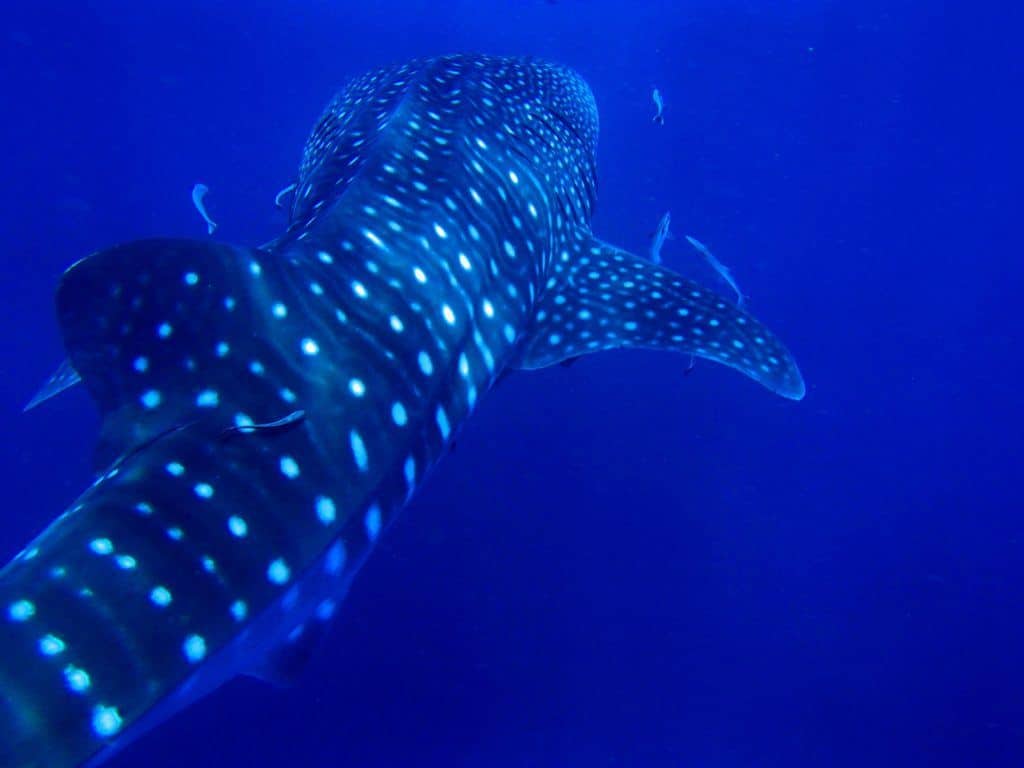
As freedivers ourselves, we know firsthand how wonderful the freediving life and experience is.
If you enjoy snorkelling and want to help improve your skills to dive down and spend a little longer with marine life, consider taking a course in the Okinawa islands.
You’ll learn how to safely breath-hold, dive and optimise your energy while out. in the water. Imagine all the wonderful fish and coral reefs you can see!
The marine life in Okinawa is rich in biodiversity and impresses even the more experienced divers. Make sure to rent diving gear – this is an Okinawa must see.
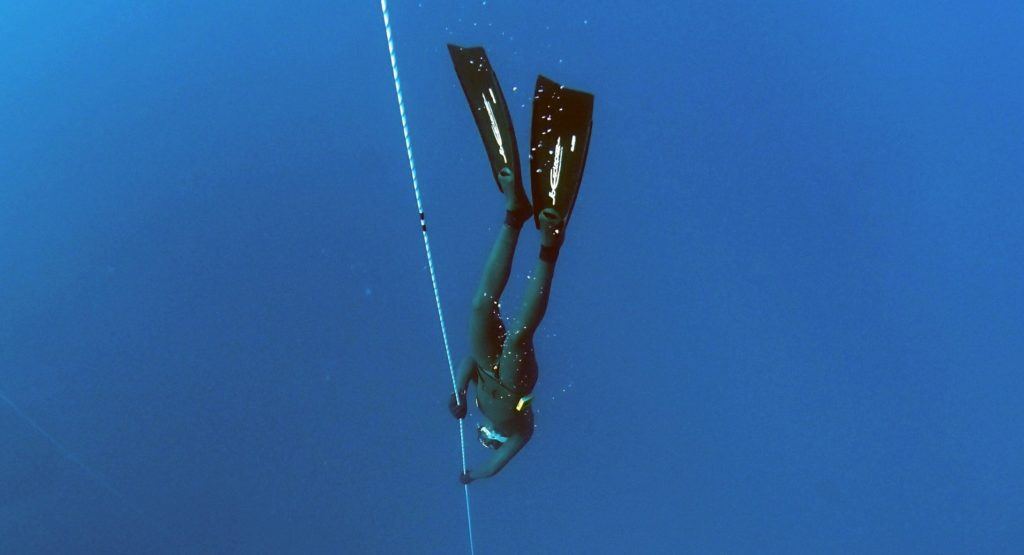
For one of the more adventurous Okinawa activities, trek your way deep into the Northern Okinawa jungle. Here, you’ll find a stunning and remote waterfall called Tadake Falls.
Like some of the best things in life, you have to earn this one. Dedicate an entire day to this adventure as you hike, river trek, water slide, jungle swing and rope climb your way through the jungle.
Expect a muddy trek, to get soaking wet and a pretty tough trail. Not for the fainthearted but a lot of fun if you’re willing to give it a shot.
The waterfall isn’t among the best in the world but the journey to get there makes it something that can’t be missed.
READ MORE: Check out our list of the best places to visit in Japan .
We know that the most fun things to do in Okinawa involve water so it’s no surprise that surfing is pretty popular here.
Beginner-friendly waves make the Okinawa prefecture the perfect destination to try surfing for the first time.
The only thing to keep in mind is that the waves here usually break over reefs. This means that they tend to be shallow and can be dangerous if you’re completely new to surfing or are inexperienced.
We recommend going through a surf school so that you have someone showing you the proper technique, how to read and catch waves and to prevent potential injury.
Surfing is popular on the beaches around Okinawa Honto but you can also find some great waves off the coast of some of the smaller islands.
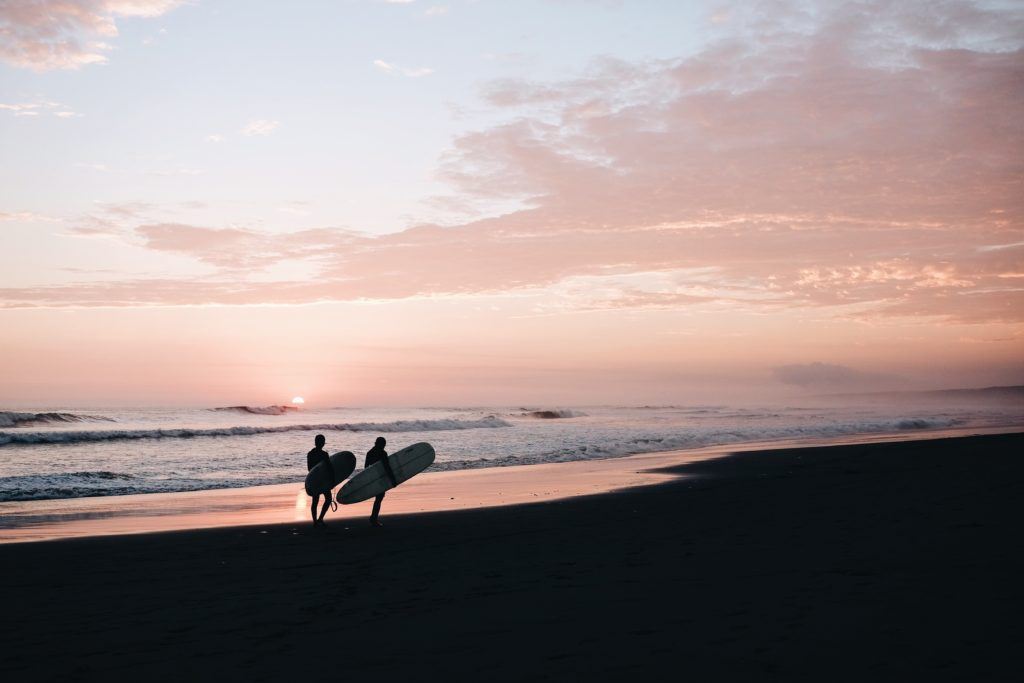
Of the places to visit in Okinawa, Sefa Utaki is one of the most sacred. It is an important sacred site of the indigenous Okinawan religion which emphasises the worship of nature.
In the early 16th century, Sefa Utaki came into prominence when it became one of the main locations for religious ceremonies and rituals.
Also a UNESCO World Heritage Site, Sefa Utaki is located on a hillside along the ocean and features several rock formations connected by walking trails.
READ MORE: Don’t miss our guide to the best things to do in Japan !
One of the more popular Okinawa attractions is Okinawa World, a touristy theme park dedicated to culture on Okinawa’s Main Island.
The main attractions at Okinawa World are a Gyokusendo Cave, a craft village and snake museum at Habu Park.
Gyokusendo Cave at Okinawa World is five kilometres long and is the second longest cave in Japan. Only 850 metres of the cave is open to the public and here, you can see spectacular stalactites and stalagmites.
Outside the cave are a number of souvenir stalls selling local trinkets including snake liquor, a delicacy in Okinawa.
You can learn about the habu, an aggressive and lethally venomous snake most commonly seen submerged in bottles of awamori.
In Habu Park, visitors can learn more about the snakes in various snake-themed exhibits that provide information on the ecology and history of snakes and reptiles.
This amazing museum and immersive theme park offers you a look into the culture of Okinawa. You can spend a full day exploring Okinawa World, from the Okinawa Cave to Nanto Brewery. Book your tickets here !
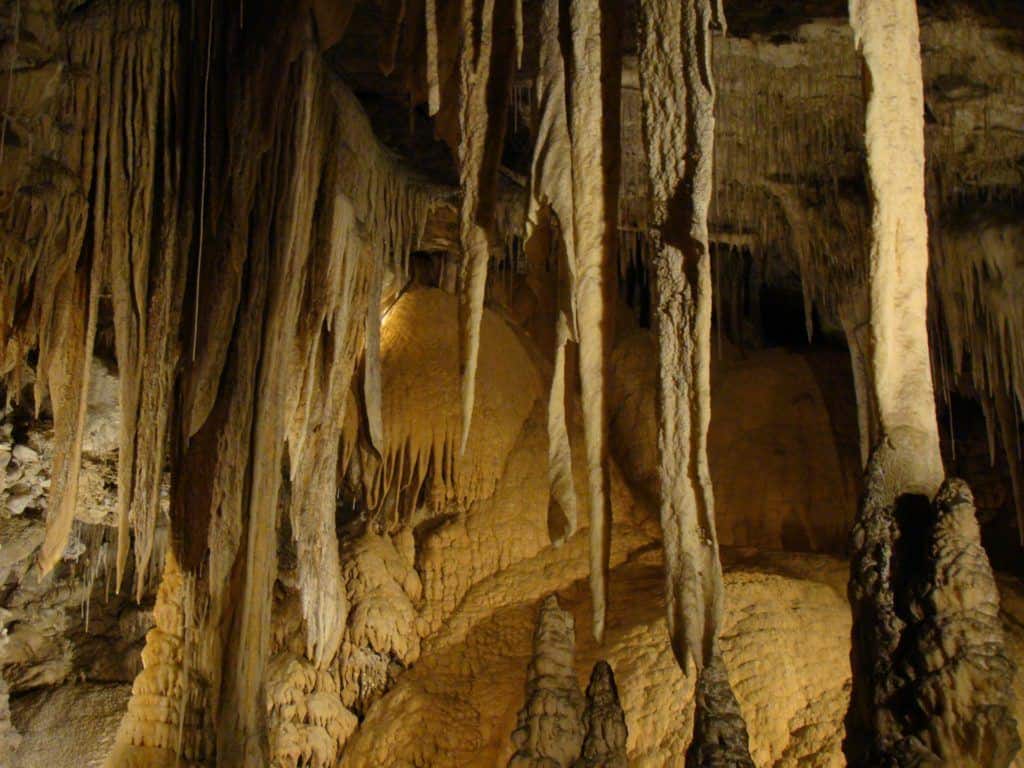
Some of the more popular places of interest in Okinawa are important historical sites like various war memorials.
Towards the end of World War II, Okinawa Honto became the sites of one of the war’s bloodiest battles with an estimated 200,000 people killed in battle from April to June 1945.
There are a number of monuments and museums relating to the period. Some of the larger monuments have been constructed in the south of Okinawa Main Island where the worst fighting of the battle took place.
The main memorial to the Battle of Okinawa is the Okinawa Peace Memorial Park, located near the southern tip of the island. The Peace Memorial Museum offers a sobering overview of before, during and after the battle and how Okinawa was reconstructed.
Various monuments such as the Cornerstone of Peace and the Himeyuri Monument also commemorate fallen civilians and soldiers.
The Peace Memorial Museum is also a popular place to check out. Okinawa War Memorials are a must-see on Okinawa’s Main Island.
This is not a happy place to visit. For history buffs or those fascinated with WWII, this sombre museum is interesting and eye-opening.
The Headquarters consists of several hundred metres of underground corridors and rooms that served as the Japanese navy’s headquarters during the war.
On 6 June 1945, commanding officer Rear Admiral Ota sent a lengthy telegram to Tokyo commending the bravery and fierce resistance that Okinawans had shown in the long battle.
A few days later, he and his other officers, totalling over 175, sadly died by suicide (considered an ‘honourable death’) in the tunnels.
Yep, that’s right, pineapples. If you’re ever wondering what to do in Okinawa, it’s celebrating pineapples of course. And what other way than a theme park completed dedicated to them!
Pineapples were cultivated in Okinawa as an agricultural product for around a century but the arrival of lower-priced imported pineapples has seen the industry suffer.
The solution? Promote the fruit as a tourist attraction!
The Nago Pineapple Park is a small theme park that includes a ride on a pineapple-shaped vehicle through pineapple fields, a tropical garden and a. souvenir shop where visitors get the chance to sample some pineapple products.
At certain times of the year, you can also observe how pineapples are peeled, cut and canned in a small factory on site.
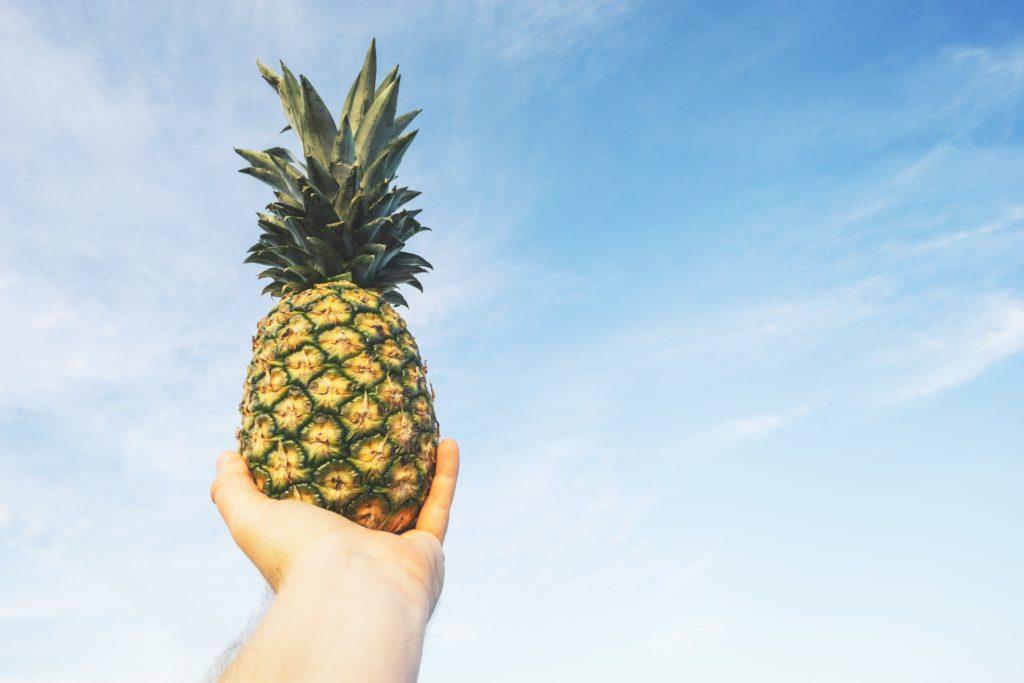
The Mihama American Village is built on former US Forces airfield and the idea behind the entertainment complex came from Seaport Village, a mall in San Diego.
At the Mihama American Village, you’ll see an instant resemblance to the West Coast of the US.
Find a unique mix of shops with anime goods stores, boutiques, restaurants, cafes, karaoke studios and a cinema at the Mihama American Village.
One of the top locations for sightseeing in the Okinawa prefecture is Shuri Castle, home to the rulers of the Ryukyu Kingdom and the name of the former capital.
Originally built in the late 1300s, Shuri Castle played an integral role in the political unification of Okinawa island. Over the centuries, wars and fires destroyed the castle multiple times with the most recent during the Battle of Okinawa in 1945.
It was restored in 1958 and 1992 so visitors could continue to appreciate and enjoy the gusuku architecture of the castle which is built in the traditional Okinawan style.
Unfortunately, Shuri Castle was devastated in another fire in 2019. Nine buildings, including the Main Hall, were destroyed.
All of Japan is helping to support Okinawa rebuild the magnificent palace , and local volunteers are putting in commendable effort. Visitors to Okinawa can view the progress of the palace’s reconstruction, though it is still relatively in shambles.
Shuri Castle is meant to be finished in 2026, though there is no guarantee. However, we have left it on this list of the best things to do in Okinawa because it is still a beloved landmark and the locals are very passionate about restoring it.
Shuri Castle has risen from the ashes numerous times already, so there is a good chance this will happen again.
The gardens around the castle are still open to enjoy as well, so it may still be worth a visit!
The palace is currently closed for restorations. Read this article for more info!
The traditional costume from the era of the Kingdom of the Ryuku is different from the common kimonos seen today.
Visitors can try on the costumes, take photos and tour the castle. Ladies get full professional hair styling and make-up which takes around an hour.
Strolling through the complex dressed up gives you a bit of a visual idea of what it was like for the royal family in the Old Kingdom. This is a cool thing to do when you visit Okinawa.
The market is a maze of tiny alleys that interconnect into a large space of food stalls. Here, you can find a variety of ingredients including fresh fish, meat, vegetables, dried foods, daily groceries and liquor.
For a chance to sample some fresh seafood, try the mochiage system where you purchase seafood on the first floor of the market and ask for a staff of a restaurant to cook it and serve it to you on the second floor. The cost for cooking is around 500 yen each.
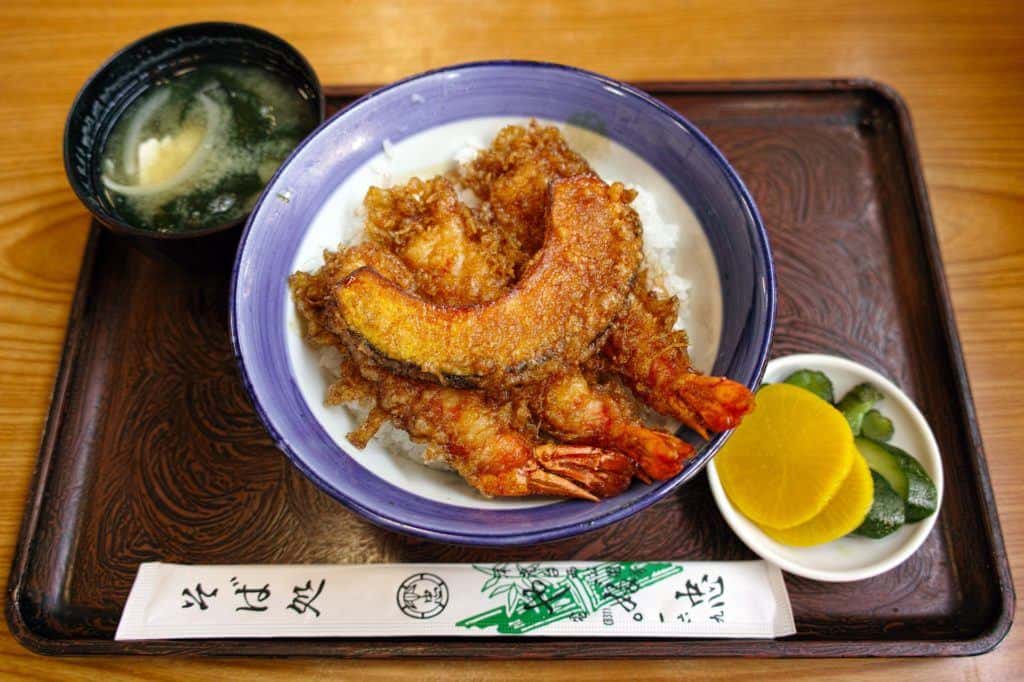
Zizake Yokocho is an izakaya (a restaurant where you order smaller share style dishes) on Kokusai Street. It serves Okinawan cuisine, local sake Awamori and has traditional folk song performances.
Singers take to the stage three times a day and requests from guests are welcomed. You’ll find lyrics to the folk songs that represent Okinawa on the tables to better understand the music.
And if you’re in the mood, get up and dance!
Sailing hasn’t been that popular in Okinawa but more recently, it’s experiencing an upward trend.
There are now various sailing companies that offer trips to cruise around different islands in Okinawa.
Alternatively, if you are a budding sailor, you can charter your own boat and go island hopping at your own pace.
This way, you can stop by different islands in the East China Sea- many of which are uninhabited – and enjoy your own secluded paradise.
Another way to enjoy a day on the water is kayaking. For a gorgeous day paddling through the water, book a kayaking tour .
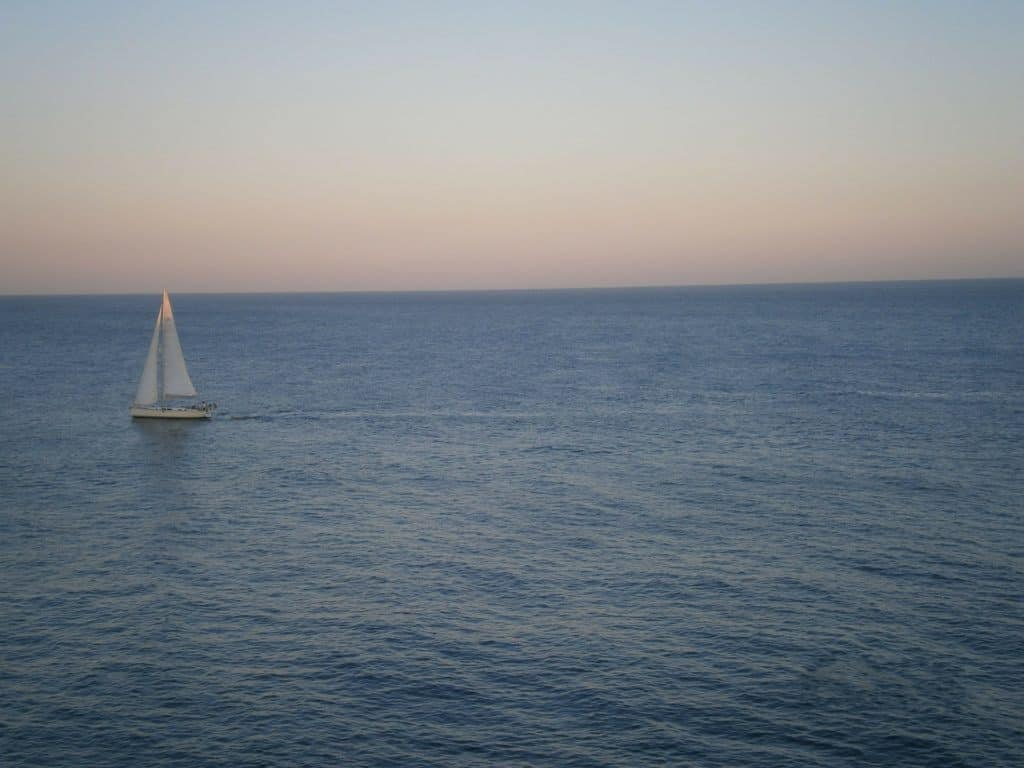
If you’re wondering what to see in Okinawa, how about some humpback whales?
A cannot-be-missed activity in Okinawa Japan is whale watching. Between January and March, the area is infamous for spotting humpback whales that swim in the waters off the southern coast.
The whales migrate from Alaska to Japan and one of the best places to see them while whale watching is around the Kerama Islands.
You can book whale watching tours which take you out on a boat to get close to these magnificent animals.
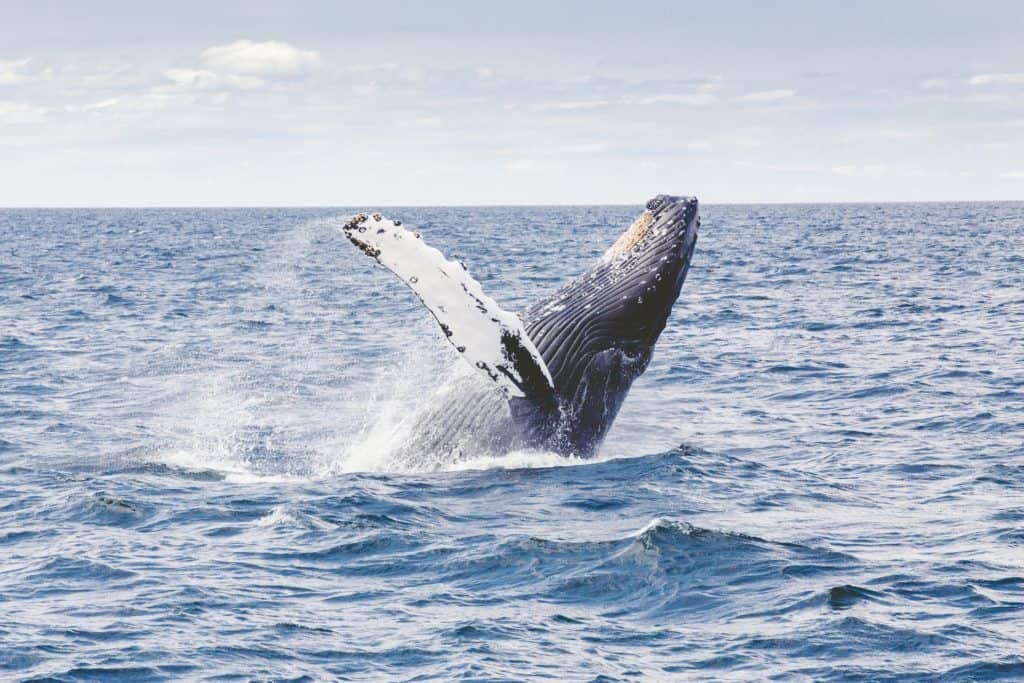
For nature enthusiasts, Kume Island is one of the best places to visit in Okinawa. Here, you’ll find a wide range of local plant and wildlife.
Kume Island is also a national park so one of the top activities to do is to trek through the lush foliage
The island is also a national park and one of the top activities here is the chance to go trekking through the lush foliage that covers much of Kume.
Avid birders will also love Kume because the central part of the island contains natural wetlands with bird watching opportunities.
You’ll find a large number of local species that congregate around the area and hide in the tall grasses and bushes.
While this isn’t something to do from Okinawa Honto, it’s a must if you’re in the area and looking to do some other outer Okinawa travel on some different islands.
Yonaguni island is actually closer to Taiwan than it is to Japan’s main island of Honshū. Of the different islands in Okinawa, this is one of the most famous for its scuba diving sites.
Yonaguni is known for its incredible underwater ruins and many of the ruins here are made of solid rock, with some dated back to 8,000 years old.
If you’re an intermediate or experienced diver, this is one of the best things to do in Okinawa and can’t be missed.
There are legends about the origins of the ruins and are say that they are apart of a lost continent called Mu. Here, you’ll find rock formations that look like staircases, rooms and walls.
If you’re looking to explore some Okinawa activities away from the main island, hop over to Akajima Island, also known as Aka Island.
This picturesque and peaceful island is relatively small. It’s well known for its observation towers which offer some stunning views across the islands and wider Okinawa.
You’ll find some spectacular photo opportunities around the island. You can also go swimming, hike across the island or just relax in paradise.
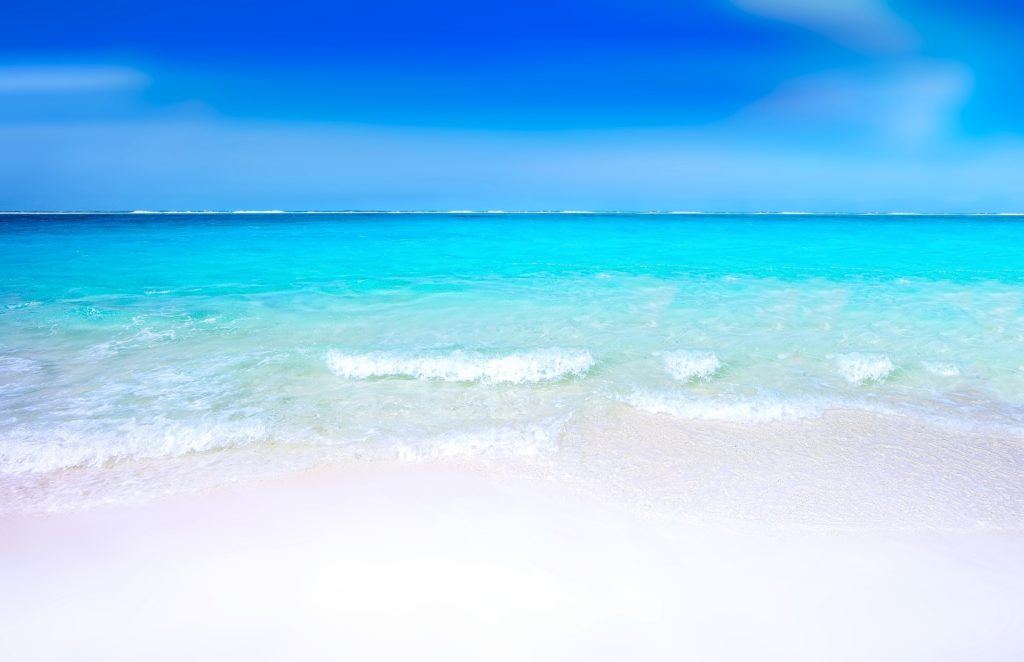
Ishigaki Island is another one of Okinawa’s incredible islands, and it is famous for manta rays.
Ishigaki Island was listed in the Michelin Green Guide Japan and is the number one place for swimming with manta rays in Japan.
You’ll find crystal clear water in spots like Manta Scramble and can easily find majestic rays swimming through the seas. Snorkeling at Ishigaki Island is truly a dream!
You can dive or snorkel in the area and just enjoy observing and sharing the sea with these graceful creatures.
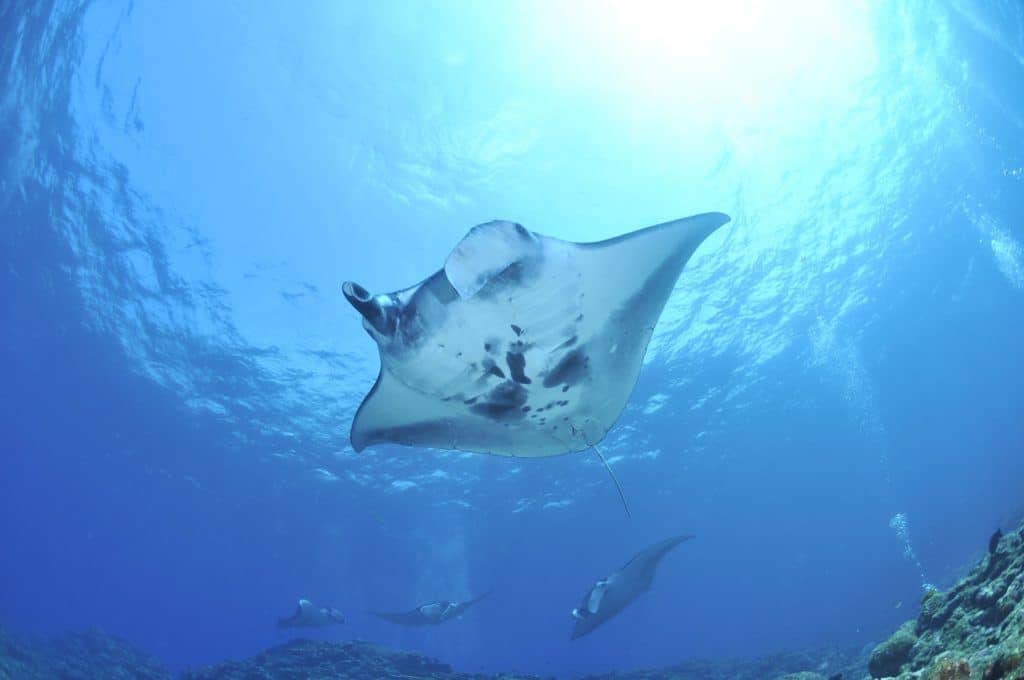
Okinawa Travel Guide
To help you make the most of your time in Okinawa, we’ve put together a little travel guide for you to choose where to eat and where to stay in Okinawa. You’ll want to stay on the main island of Okinawa for convenience.
Best Accommodation – Where To Stay in Okinawa
Since there are many different areas and places to stay in the Okinawa Main Island of Okinawa Honto, we’ve made some suggestions based around Naha, Okinawa’s capital.
You’ll fly into Naha Airport near Okinawa City. From Naha Airport you can easily get public transport or a hotel transport to a hotel near the city.
Operated by a well-known diving ship in Okinawa, My Place Guest House is the best place to stay in Okinawa Honto if you’re planning on doing any of the marine activities.
The hostel provides free reliable WiFi throughout, a spacious common area, fully equipped shared kitchen and a wide living room that you can use 24 hours. There are even hammocks!
My Place has a range of different rooms from dorms to privates, and is the best budget place to stay on the main island of Okinawa.
Naha West Inn offers clean and comfortable budget accommodation for couples looking for something private in Naha city.
The hotel has plenty of parking available, is opposite a Family Mart and walking distance from public transport. Location wise, it’s very central and convenient for visiting Okinawa sights.
The hotel has a modern and sleek design, rooms are spacious and clean and the beds are large. And as an added bonus, coffee is free!
This funky hotel combines the concept of culture and art into a 10-floor hotel.
Hotel WBF Art Stay is a special place that celebrates imagination and in itself is one of the awesome Okinawa attractions of Naha city.
Rooms on levels 3 to 10 are decorated with drawings by the ‘Ban Rom Sai’ in Thailand, a home for children who have lost their parents due to AIDS or have contracted HIV from their parents.
The other rooms on the second floor are decorated with artworks of active artists from different countries.
Located centrally among all the action in Naha city near the Naha Airport, there are many surrounding restaurants open late and the morning markets are only a 5-minute walk away.
For those who want to splash out and enjoy some luxury in Okinawa city, check out Hyatt Regency in Naha. It’s near Naha Airport as well!
The hotel is stunning with a classic modern look, decorated stylishly with elegant finishes.
There’s a gym, spa, large outdoor pool with timber decking and nice lounge areas. Rooms are spacious, comfortable and elegant.
If you’ve stayed at any Hyatt Regency hotels before, you’ll know to expect fine-tuned luxury and this hotel is no different.
Hamaya Soba is a soba specialty shop that offers Okinawa soba, a classic noodle dish in Okinawa cuisine. It’s affordable, delicious and unique to the region.
Meat eaters wanting to try some delicious high-quality Japanese Wagyu should go to Yakiniku Hana , a BBQ restaurant serving mouthwatering Ishigaki beef, one of the best types of Wagyu beef in Japan.
Marutama serves its own twist on taco rice, an Okinawan fusion food of taco-flavoured minced beef on white rice. Here, you’ll find it with a homemade miso and salsa sauce, taking the dish to another level.
DISCLAIMER: Some of the links in this article are affiliate links, which means if you book accommodation, tours or buy a product, we will receive a small commission at no extra cost to you. These commissions help us keep creating more free travel content to help people plan their holidays and adventures. We only recommend the best accommodations, tours and products that ourselves or our fantastic editorial team have personally experienced, and regularly review these. Thanks for your support, kind friend!
Amanda Tran
Hi, We’re Alesha and Jarryd!

We’ve been traveling the world together since 2008, searching for the planet’s best destinations and adventures.
Love Travel?
Sign up for our free weekly newsletter for the best travel tips, ideas and deals!
We respect your privacy. Unsubscribe at any time.
READ MORE...
19 BEST Things to Do in Osaka, Japan [2024 Edition]
The Perfect 3 Days in Tokyo Itinerary
The Best Day Trips from Every City in Japan [2024]
Related Posts
18 awesome things to do in sapporo, japan (2024 guide), visting yamakoshi, nagaoka – japan’s most picturesque village, 19 cool things to do in nagoya, japan, leave a comment cancel reply.
Save my name, email, and website in this browser for the next time I comment.
- Meet the Team
- Work with Us
- Czech Republic
- Netherlands
- Switzerland
- Scandinavia
- Philippines
- South Korea
- New Zealand
- South Africa
- Budget Travel
- Work & Travel
- The Broke Backpacker Manifesto
- Travel Resources
- How to Travel on $10/day
Home » Asia » Japan » Okinawa
EPIC OKINAWA Itinerary! (2024)
Okinawa is a collection of islands just off the Japanese mainland. It has a tropical climate, crystal clear seas, white sandy beaches and everything else you need for the perfect island getaway.
The people that live on the island have the highest life expectancy in the world! Because who would want to die when they live in absolute paradise?!
If you’re planning how long to spend in Okinawa , you need to strategically plan your Okinawa trip so you can hit all the best sights and activities during your stay. You’re in good hands though. Here’s what you should be adding to your Okinawa itinerary.

Unlock Our GREATEST Travel Secrets!
Sign up for our newsletter and get the best travel tips delivered right to your inbox.
Best Time To Visit Okinawa
Where to stay in okinawa, okinawa itinerary, day 1 itinerary in okinawa, day 2 itinerary in okinawa, day 3 and beyond, staying safe in okinawa, day trips from okinawa, faq on okinawa itinerary.
When looking for the best time to go to Okinawa, it’s important to note that you can’t possibly go wrong! Once you visit Okinawa, you’ll realize that it’s absolutely wonderful all year round.
However, there’s a time to suit everyone’s preferences, and it’s important to start planning your Okinawa itinerary during a time of year that works best for you!
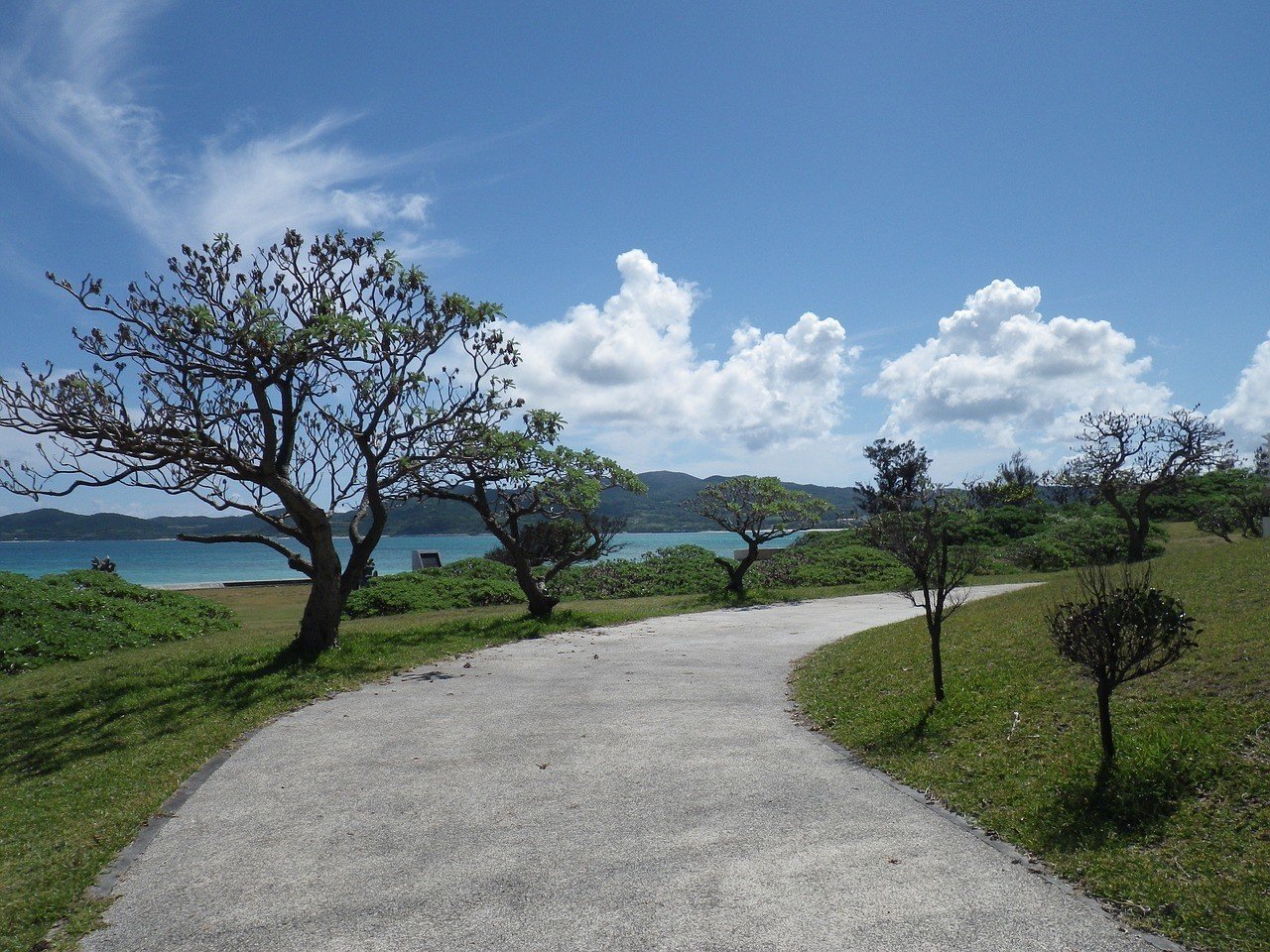
The Broke Backpacker is supported by you . Clicking through our links may earn us a small affiliate commission, and that's what allows us to keep producing free content 🙂 Learn more .
It tends to be warm and humid all year round, making it the perfect beach destination. The busy season runs from July to August as the schools go on holiday and the beaches become very crowded. During this time, prices for accommodation tend to escalate too!
If you’re trying to find out when to visit and how many days in Okinawa you need, it’s important to decide what you’d like to do there. If you want to spend most of the time on the beach, anytime between March and October is a great time to go.
Here’s what you can expect year-round in Okinawa!
While you’re planning how long to spend in Okinawa, you’re sure to be looking for the best place to stay in Okinawa .
Your accommodation should be highly dependant on how many days in Okinawa you’ve decided to stay. If your trip to Okinawa is only going to last a few days, then staying somewhere central is essential to making the most of your vacation in Okinawa.
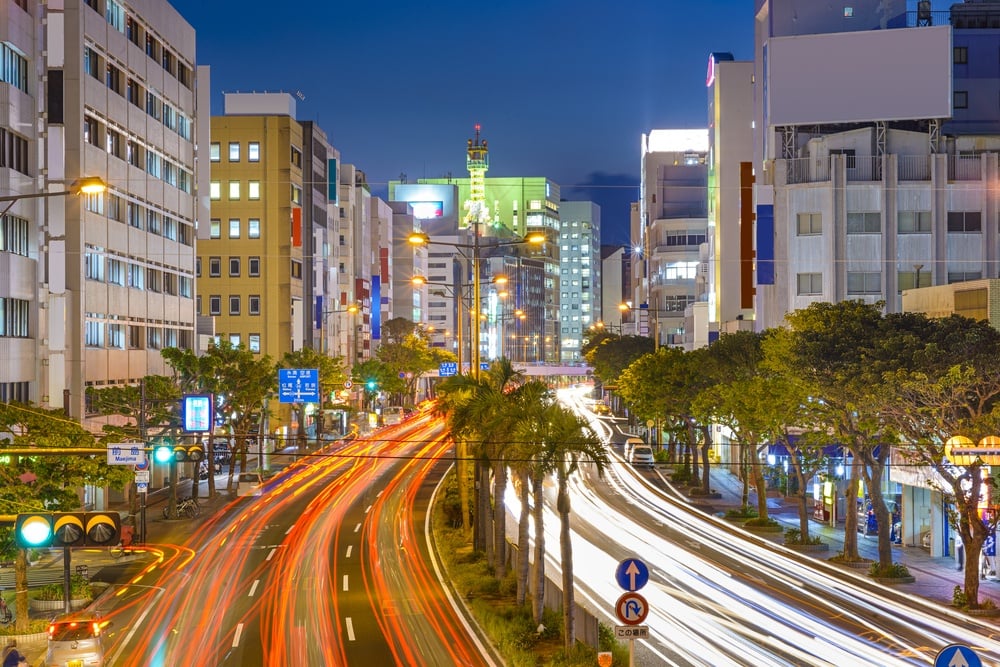
Nago is a popular neighborhood on the main island. There are a few of Okinawa’s hostels located here. It’s a great place to stay if you’re a first time visitor, or only spending one day in Okinawa. While beaches are the main attraction in Nago, there are plenty of other interesting Okinawa points of interest that are likely to catch your eye.
Iriomote is another great place to stay while you’re in Okinawa. It’s an island that offers completely different scenery to that of the others as it’s covered in dense jungle. For adventure lovers, this is a great Okinawa attraction that will leave you excited for your return!
Your trip to Okinawa simply wouldn’t be complete without great accommodation spots to make sure you have a comfortable stay. These are our favorite places to stay, and the ones you should be adding to your Okinawa itinerary.
Best Airbnb in Okinawa – Delightful Bright Room in Nago
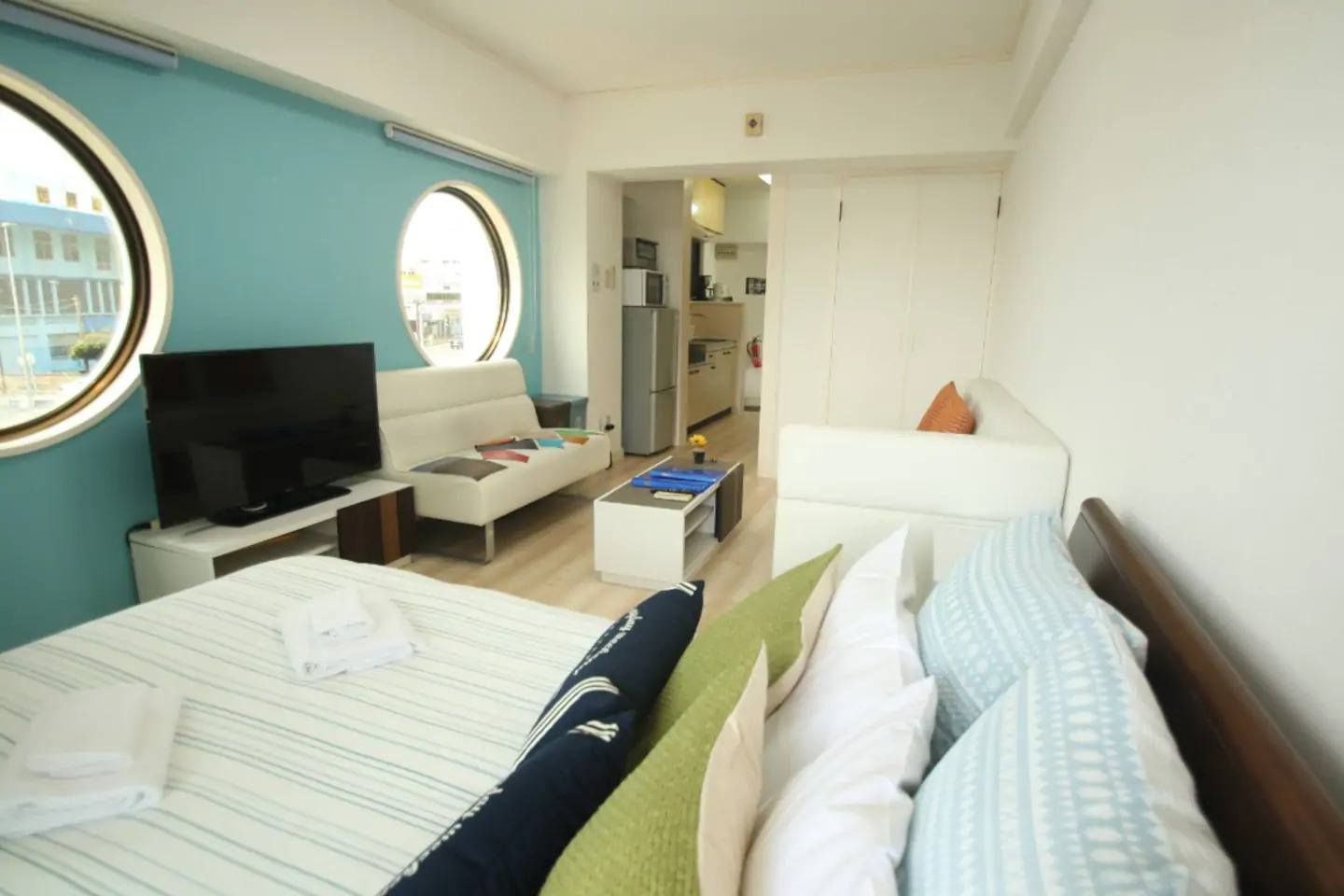
Fancy an Osaka Airbnb ? Minutes from this beach is this little apartment that is absolutely THE spot you want to stay for the first time visiting the city! Lounge around the leather couches or get cozy with a cup of matcha overlooking the little town of Nago! Don’t miss the beautiful sunsets from this place located in the heart of the city.
Best Budget Hotel in Okinawa – My Place
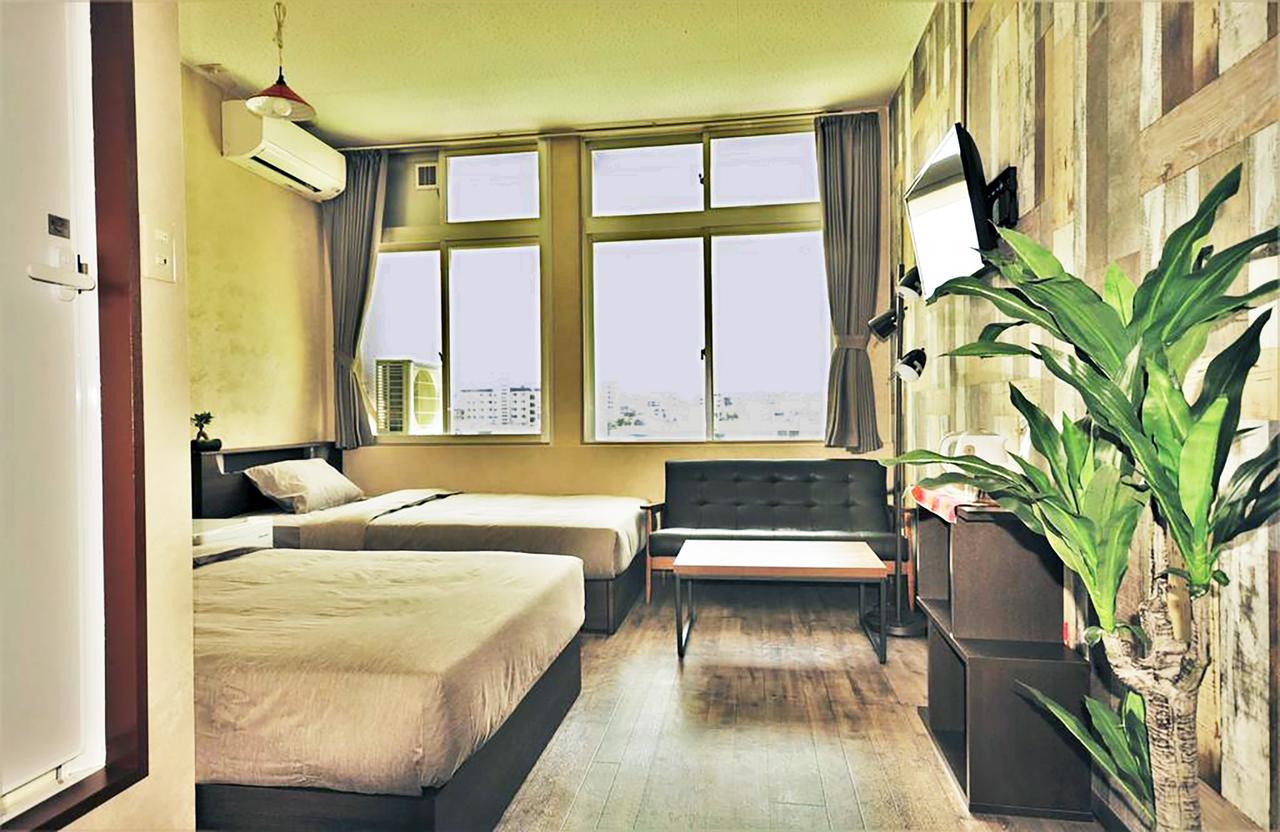
My Place is located in Naha and provides stunning harbor views from many of the rooms. The stunning wooden rooms give a wonderful tropical vibe and are well decorated. The hotel offers discounted tours for its residents, so be sure to ask at the front desk when you check-in.
Best Luxury Hotel in Okinawa – ANA InterContinental Manza Beach Resort
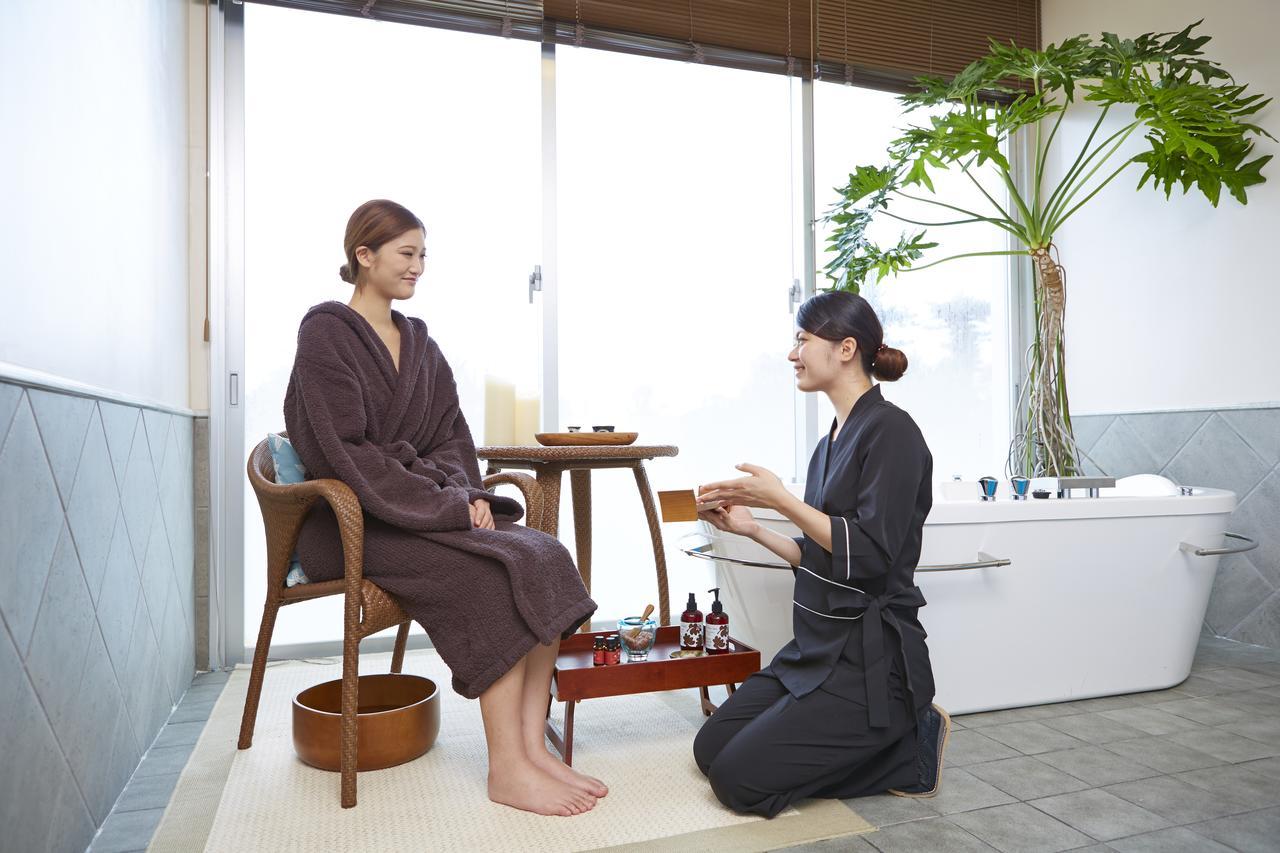
This luxury resort takes up the entirety of an island and offers nothing but luxury. Surrounded by ocean, you can spend your time at the outdoor water park or lounge on the beach while being served cocktails or a 5-course meal!
Best Hostel in Okinawa – Okinawa Sora House
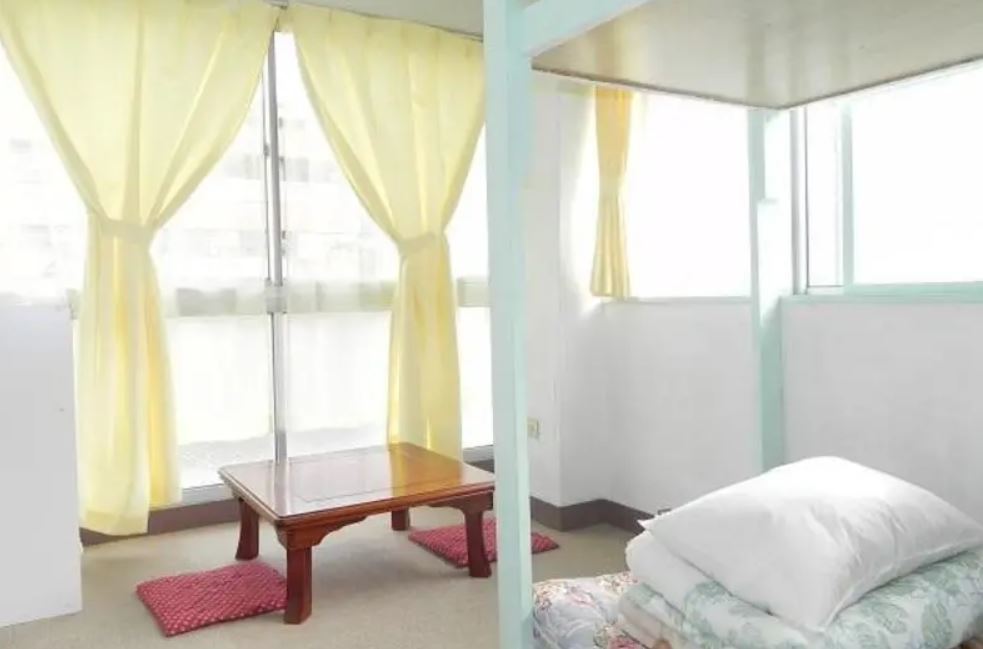
Okinawa Sora House is perfectly located close to the monorail that can transport you to anywhere on the island. The ferry port is also just a short distance away, perfect if you plan on doing a bit of island hopping during your stay. And you’ll be just a 10-minute walk from the main street, which is a plus for those who like to be a part of the action. It’s the perfect place to stay if you’re backpacking through Japan!
In order to complete your Okinawa itinerary, you’re going to need to know how to get around the city.
On the main island of Okinawa, monorail, trains, buses, and taxis are the main forms of transport. However, on more remote islands, hiring a car, motorbike or bicycle are all great ways to get around as there are fewer or no forms of public transport.
It’s not recommended that you hire a car or motorbike on the main island, as parking fees can be a little excessive, and since there are so many options for public transport, there’s no need to hire.
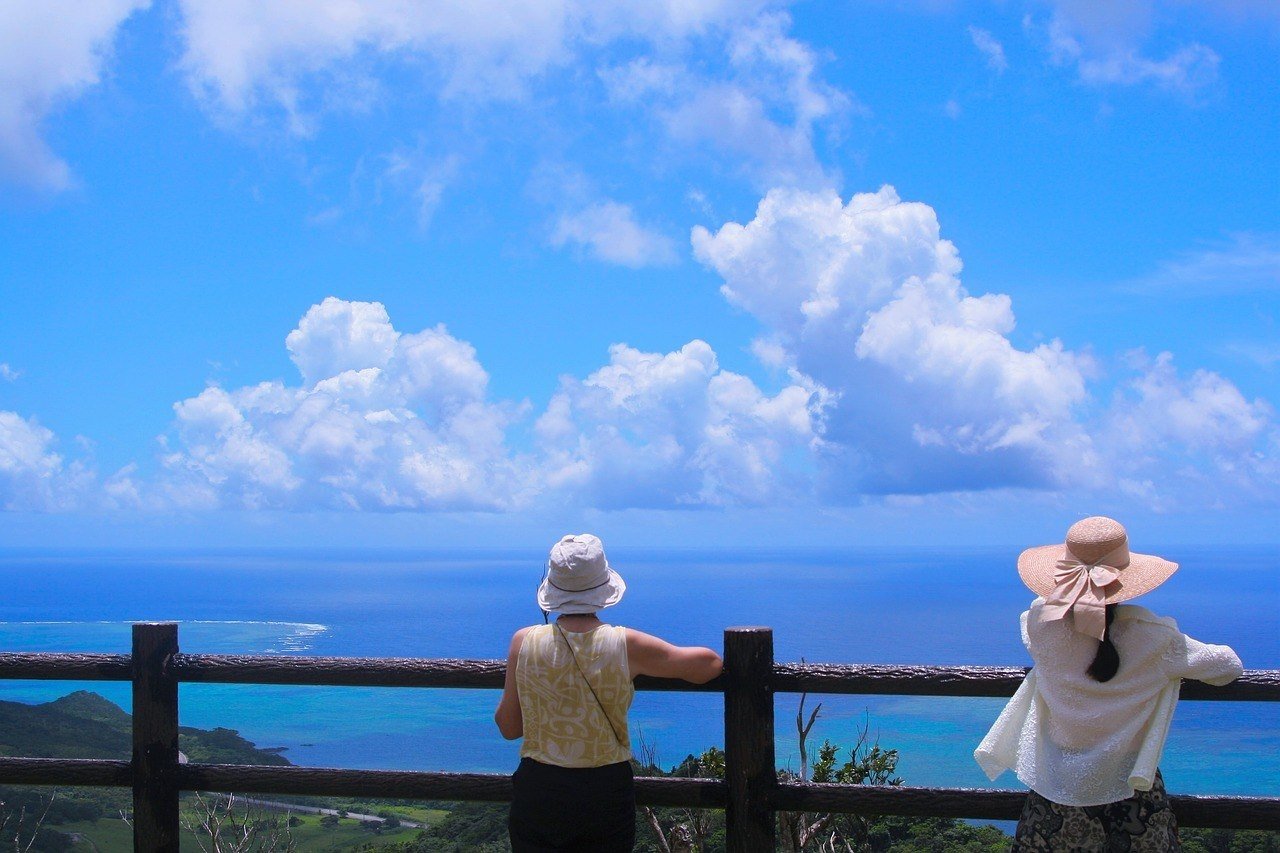
Rented bicycles and motorbikes are the perfect transportation for getting around on the smaller island. It gives you the chance to do lots of sightseeing as you travel around the islands!
When traveling from island to island, there are plenty of ferries that will take you from port to port, making the islands easily navigable.
Now that you know how to get around the islands, you can start planning your Okinawa trip itinerary with ease! Be sure to add some of our favorite activities to your Okinawa itinerary to make the very most of your trip! Note that transport in Japan can be pricy – if you are backpacking Japan on a budget this may well be your greatest expense.
Okinawa Peace Memorial Park | Okinawa World | Shuri Castle | Whale Watching | Cape Manzamo
Day 1 / Stop 1 – Stroll Through Okinawa Peace Memorial Park
- Why it’s awesome: The Okinawa Peace Memorial represents the end of the battle that was fought on the island and is dedicated to those who died in the battle.
- Cost: Free!
- Food nearby: Little Soba restaurant is a quaint restaurant just a short walk from the peace memorial grounds. They serve very good soba noodles and delicious ice creams at a reasonable price.
During World War II, there were many battles fought on the island, but the final battle took place in the southern part of the island near Itoman city. The battle caused huge destruction and resulted in hundreds of thousands of deaths.
At the Peace Memorial Park, you’ll be able to learn about the events that happened in Okinawa during world war II and browse the history museum.
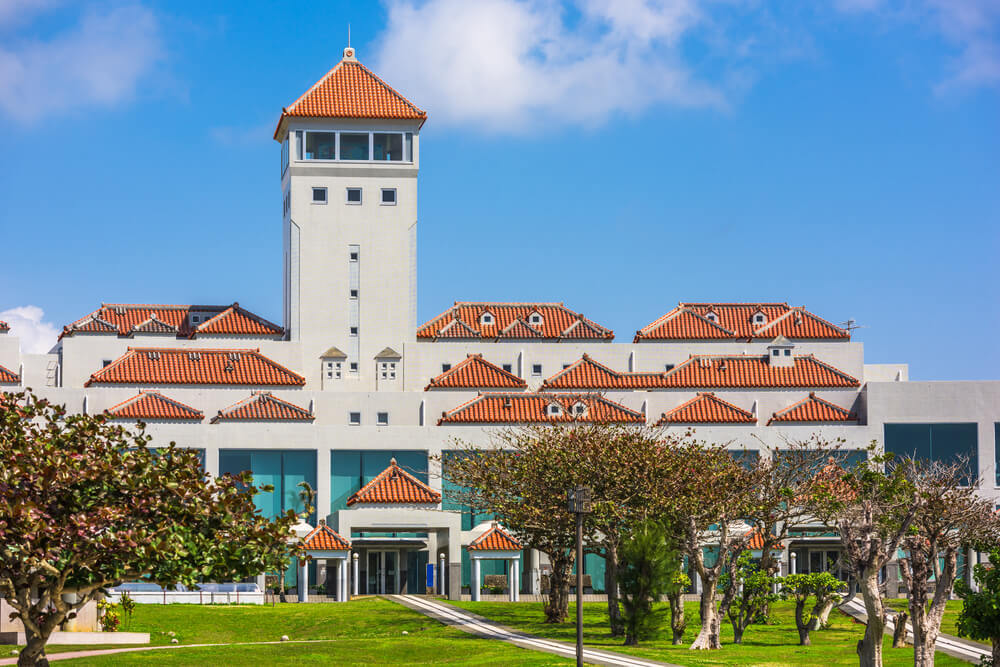
The history museum displays wartime photographs and other war memorabilia and objects that will point to the events of that time. There is also a cornerstone of peace monuments, where you’ll see the names of those who died in the fateful battle.
There are over 50 monuments on the location, some of which are dedicated to everlasting world peace, and others pray for the souls of those who passed away in battle.
Many people come to this memorial area, some to learn about the morbid history of Okinawa, and others to play ball games on the open fields. Feel free to enjoy the grounds while still giving respect to those who fought for peace on the beautiful island.
Day 1 / Stop 2 – Explore Okinawa World
Around 10 minutes drive from previous stop.
- Why it’s awesome: Okinawa World is a theme park that’s dedicated to Okinawan culture and is an exciting and entertaining experience.
- Cost: Adults – USD $15 and Children – USD $8
- Food nearby: Kedama (Cat Cafe), is an experience all on its own. Just a 4-minute drive from Okinawa World, you’ll find it to be very interesting. Enjoy a delicious meal while stroking a purring feline, there really is no better way to enjoy a meal!
The theme park is made to look like a traditional Okinawan village and has traditional architecture, foods, crafts, music, and many hands-on activities.
Visiting Okinawa World is an eye-opening experience. If offers you an insight into the ways and traditions of the Okinawan people, but in a fun and entertaining way!
Actors play the part of traditional Okinawan people from the Rykuyku kingdom and make it feel like a truly authentic experience.
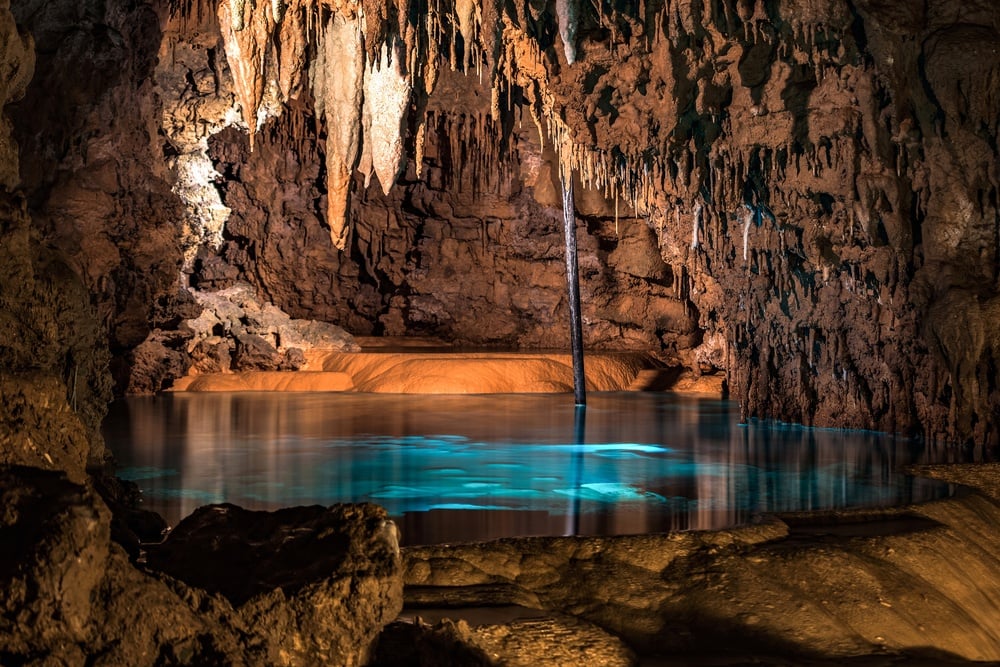
Visit the craft village and make your own craft to take home before exploring the local village with its iconic red roofs. You can then explore the beautiful limestone cave that has formed over an underwater coral reef. This is a beautiful place to take photos as it shows the true natural beauty of Okinawa.
Visit the souvenir shop to be sure you’re taking home something to commemorate this fantastic day and the exciting experiences you’ve had.
This is an activity that you simply must add to your Okinawa itinerary.
Day 1 / Stop 3 – Explore Shuri Castle
Around 25 minutes drive from previous stop.
- Why it’s awesome: Shuri Castle was once a royal palace when Okinawa was its own kingdom.
- Cost: USD $8
- Food nearby: Just a 6-minute drive away, you’ll find Ryukyu Sabo Ashibiuna, a cozy restaurant with lovely outdoor seating. They serve traditional Japanese food and it’s beyond delicious! It’s the perfect place to stop by for a mid-morning meal!
Because Okinawa was once its own kingdom, it has a very different history to that of Japan’s mainland. Once ruled by the Ryukyu kingdom, this incredible castle was once the home of the royal family of Okinawa.
Shuri castle was destroyed during a terrible incident during World War II in 1945, but was rebuilt in the early 90s and proclaimed the castle of the Ryukyu kingdom and named a UNESCO world heritage site.
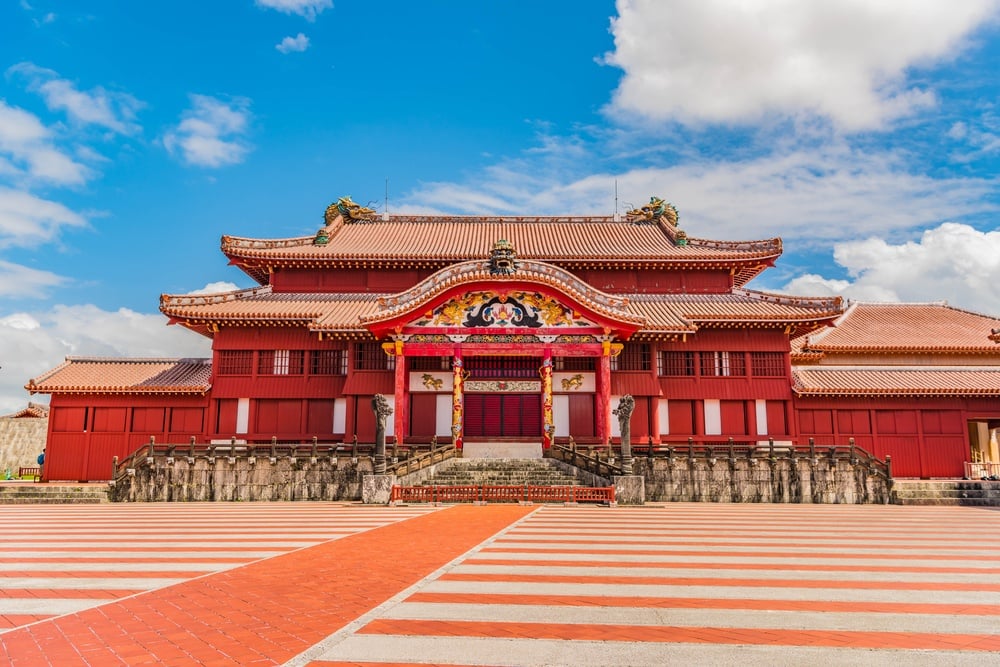
This incredibly beautiful castle is one of the most popular tourist destinations in Okinawa. It is a real treat for the eyes.
The colorful Japanese style building is covered in floral patterns and ornate decorations! It has an open courtyard in its center, that visitors can explore at their own leisure. If you’d like to take a guided tour of the intriguing castle, that can also be arranged for an extra cost.
If you’d like to take a self-guided tour of the castle, multilingual audio guides are available at the entrance, so you won’t miss out on the learning opportunity.
Day 1 / Stop 4 – Go Whale Watching
Around 1 hour drive from previous stop.
- Why it’s awesome: See the whales breach as they migrate across the ocean.
- Cost: Dependant on which tour you take
- Food nearby: C&C Breakfast Okinawa serves the most wonderful breakfasts on the island, and after a morning of whale watching, that’s exactly what you need! The restaurant serves a variety of wonderful breakfasts and even has vegan and vegetarian options.
Going on a whale watching excursion is a must during your time in Okinawa. The humpback whales migrate about 9000 kilometers every year from Alaska to Japan. These 15 meter long creatures weigh over 30 tons, and they’re magnificent to see in the water.
Between January and March every year, they are very prevalent in the Okinawa area, and it is quite a spectacle to see them playing in the waters.
On many tours, guests see mother whales swimming alongside their calves, which is a beautiful and magical sight.
If you haven’t seen a whale spraying water out of its blowhole, you sure will after taking a whale watching tour!
Tours can be taken from any of the islands, especially the main island. So you won’t have to do a whole lot of traveling before departing on the tour. Be sure to check for availability in advance, as you sure don’t want to miss out on this great opportunity.
If you’re visiting Okinawa between January and March, this is sure to be one of your favorite activities on your Okinawa itinerary.
Enjoy a Whale Watching at Kerama Islands and Zamami Island during this guided tour .
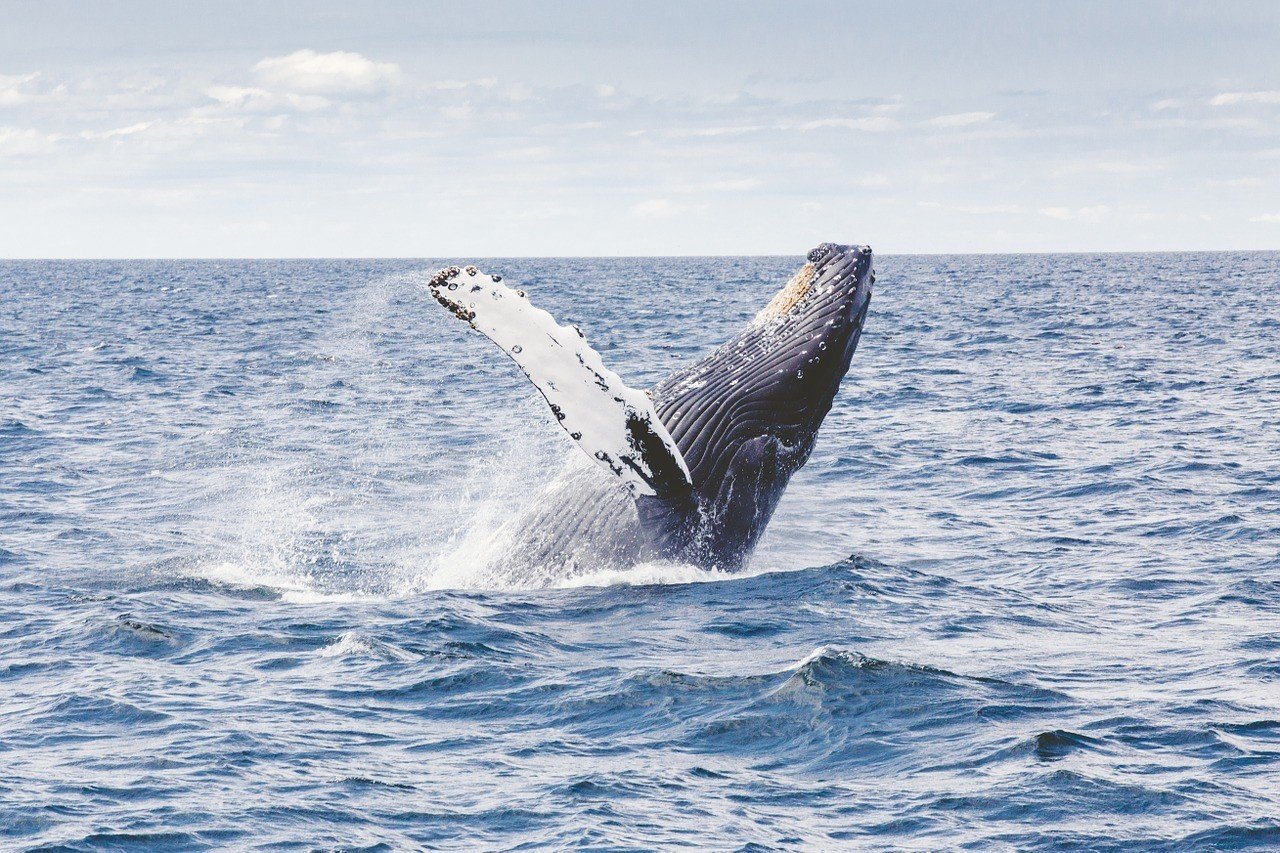
Day 1 / Stop 5 – Watch the Sunset at Cape Manzamo
Around 2 hours drive from previous stop.
- Why it’s awesome: Cape Manzamo is a 20-meter tall cliff face that faces the East China Sea.
- Food nearby: Sea House is just a 6-minute drive from Cape Manzamo and serves absolutely delicious seafood. If you’re a vegetarian, their tofu is amazing too and should be enjoyed in a generous portion. Sea House is the perfect place to stop for dinner before heading back to your hotel.
If you are travelling to Okinawa during summer, you may have time to go to Cape Manzamo to watch the sunset. Cape Manzamo is a beautiful cliff face that has formed naturally over thousands of years. It’s a spectacular sight and well worth the trip to Onna Village.
Many tourists visit this location, but not many of them know that the best time to visit is while the sun is setting. We recommend you aim to get there a few minutes before sunset so you can enjoy the incredible scenery.
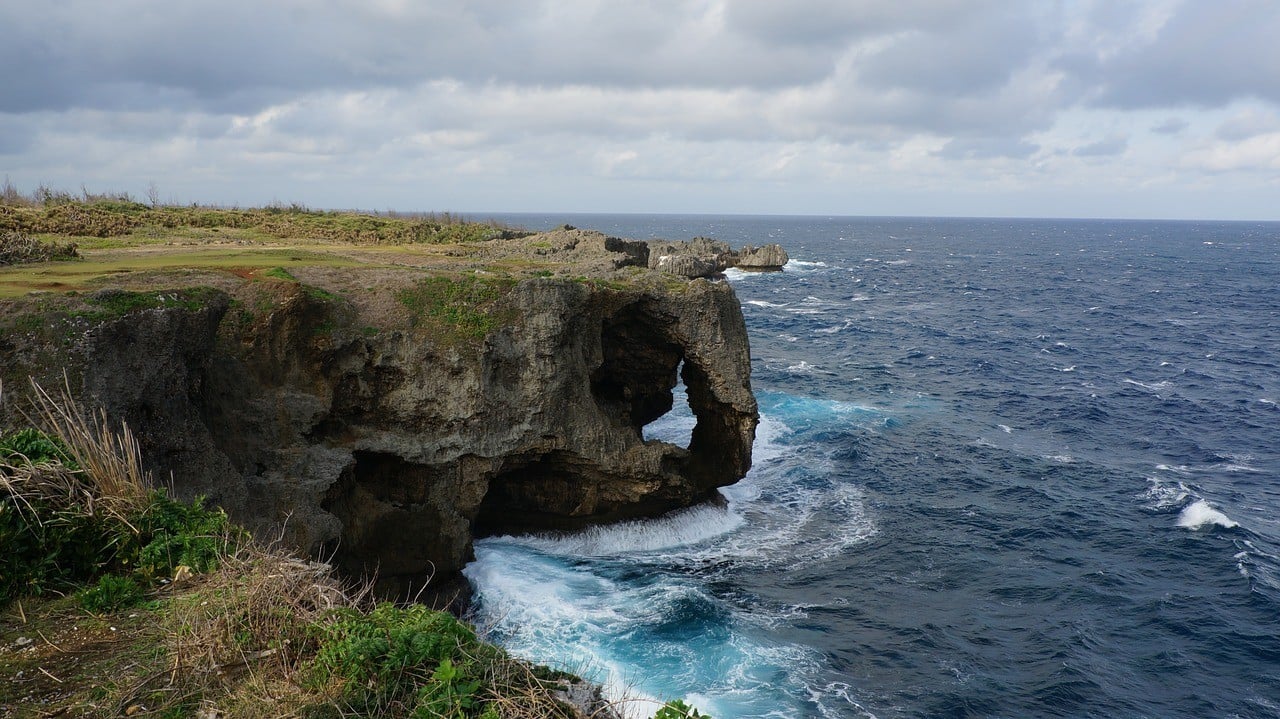
From the top of the cliff, you’ll see dramatic views of the rough sea below and craggy caves that have formed into the cliff face.
Be sure to take your camera along for this trip as you’ll want to remember this beautiful view!
During low tide, a picturesque tidal pool is formed at the bottom of the cliff face. This has become a popular scuba diving spot as there is plenty of marine life to see around this area. If you’re an avid scuba diver, be sure to learn about this spot before heading into the water!

Wanna know how to pack like a pro? Well for a start you need the right gear….
These are packing cubes for the globetrotters and compression sacks for the real adventurers – these babies are a traveller’s best kept secret. They organise yo’ packing and minimise volume too so you can pack MORE.
Or, y’know… you can stick to just chucking it all in your backpack…
Fishing | Taste of Okinawa | Makishi Market | Naha City
We’re sure after your first day full of exciting activities in Okinawa, you’ll be ready for your second! Here are a few more activities you simply must add to your 2-day itinerary in Okinawa!
Day 2 / Stop 1 – Go fishing
- Why it’s awesome: Okinawa is known for its fishing industry, so why not join in?
- Cost: Free! (Just buy your own fishing rod)
- Food nearby: Heki is a traditional Okinawan restaurant that serves absolutely excellent food. This is a great place for meat and fish lovers, as they have a great variety of meaty options.
Okinawa is known for its thriving fishing industry, so there’s no better place to pull out your rod and throw a line in the water.
There are an absolutely endless amount of fishing spots around Okinawa’s main island and the surrounding islands, you really can’t go wrong.
The waters are teeming with exotic marine life. There are many fish species that you can expect to catch in this region, tuna, marlin, and mahi-mahi are just a few of the most commonly caught species around the islands.

If you’re a more experienced fisherman, why not hire a fishing charter. This will allow you to change up your fishing position a few times and increase your chances of a great catch. The charters will allow you to make use of their fishing equipment, so you won’t need to organize your own.
Make sure you’re aware of the fishing limits and restrictions in the area before setting out as you don’t want to be guilty of overfishing.
Day 2 / Stop 2 – Take an Okinawan Cooking Class at the Taste of Okinawa
- Why it’s awesome: Learning the traditional cooking method of Okinawa is a fantastic experience that will leave you more knowledgeable than you were before.
- Cost: USD $60 per person
- Food nearby: You’ll have plenty to eat after making your tasty Okinawan dish at the Taste of Okinawa. But, if you’re not in the mood for eating your own creation, you’re more than welcome to take a seat at the restaurant and indulge in a chef-made meal and a beer tasting.
What better way to learn about the Okinawan culture than a class on how to prepare and make a traditional Okinawan meal. At the Taste of Okinawa , you can do just that!
You’ll begin this Okinawan cooking experience by taking a short tour of the nearby market. On this tour, you’ll learn about the locally grown products and select the specific ingredients you’ll need to create a traditional dish.
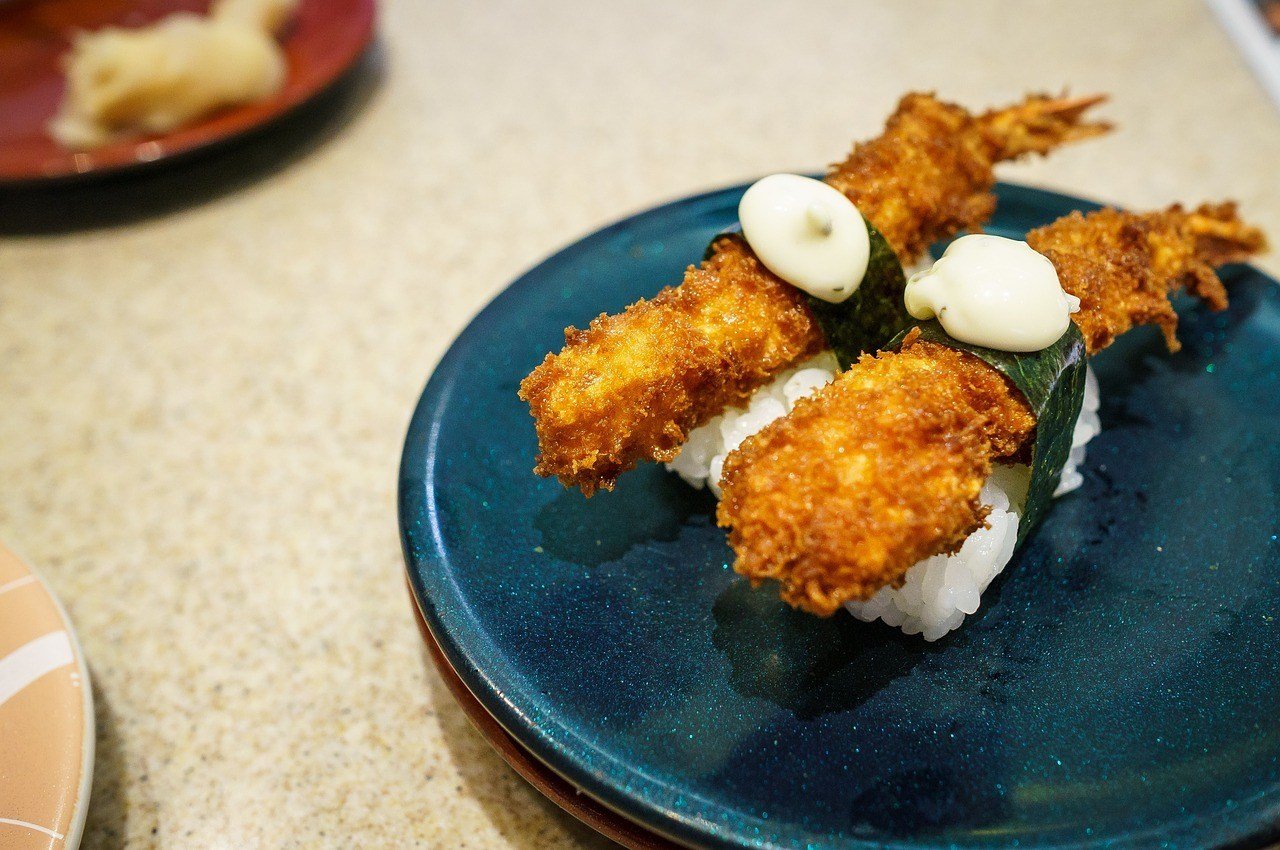
After the market tour, you’ll be a lot more knowledgeable about the ingredients you’re using and you’ll head back to Taste of Okinawa to begin your course. During the course, you’ll get the chance to showcase your cooking skills with the help of a guiding chef!
The chef is multilingual, allowing them to communicate with all the students in the class.
You’ll create an appetizer, a main dish, soup, and a dessert. This is a wonderful hands-on Okinawan experience that will allow you to meet new people and bump into one or two fellow travelers.
Day 2 / Stop 3 – Shop at the Makishi Market
Around 5 minutes walk from previous stop.
- Why it’s awesome: The market is known locally as “the kitchen of Okinawa”.
- Cost: Free to browse!
- Food nearby: There are plenty of local dishes to try at the market. In fact, we recommend buying a bunch of small meals while you’re walking around so that you can try a bit of everything. There are unique dishes in this market that you won’t find anywhere else in the world, so it’s important to give them a try!
The Makishi Market, known as ‘the kitchen of Okinawa’, dates all the way back to the second world war. As you may have guessed, you can find all sorts of edible goods at this market. Fresh produce, meals, and all sorts of traditional dishes to indulge in.
The market started during World War II and has continued to be the life and soul of the Okinawa food trade ever since. It’s not just for tourists and locals, but chefs come from all over Okinawa to source their ingredients for even the most prestigious restaurants in the area.
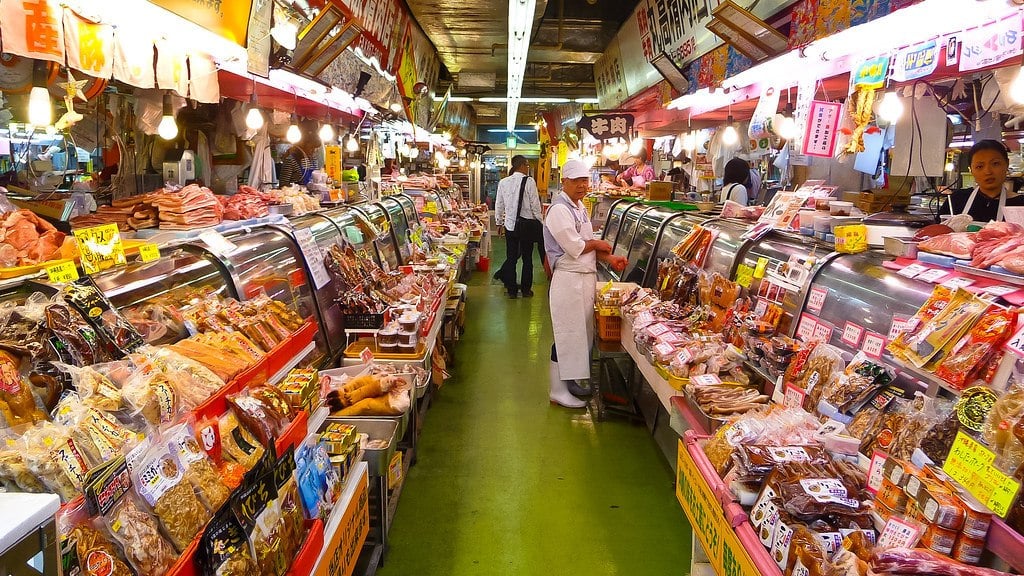
There are now over 400 shops here, some selling local ingredients that can’t be found anywhere else in Japan. The local dishes sold at the market are of amazing quality and a must-try during your holiday.
If you love unique dishes, foods, and markets, this is the perfect place to spend the afternoon!
Day 2 / Stop 4 – Enjoy Naha Nightlife
Around 10 minutes walk from previous stop.
- Why it’s awesome: See the city come alive at night as a bustling hub of activity continues throughout the night.
- Cost: Free to walk around!
- Food nearby: Churansan Tei serves late-night food to those heading out on the town. You can expect delicious Japanese cuisine and small plates of seafood! Everything they serve is absolutely delightful and satisfies the palate completely!
Many of the islands in Okinawa are quiet and peaceful in the evenings, which is wonderful if you’re looking for rest and recuperation. However, if you’re looking for lively entertainment, busy restaurants, and nightclubs, then Naha is the place to be in the nightlife scene.
The difference between Okinawan nightlife and that of other places in the world is the fact that many of the nightclubs play traditional Okinawan folk music, making for a very interesting and unique evening!
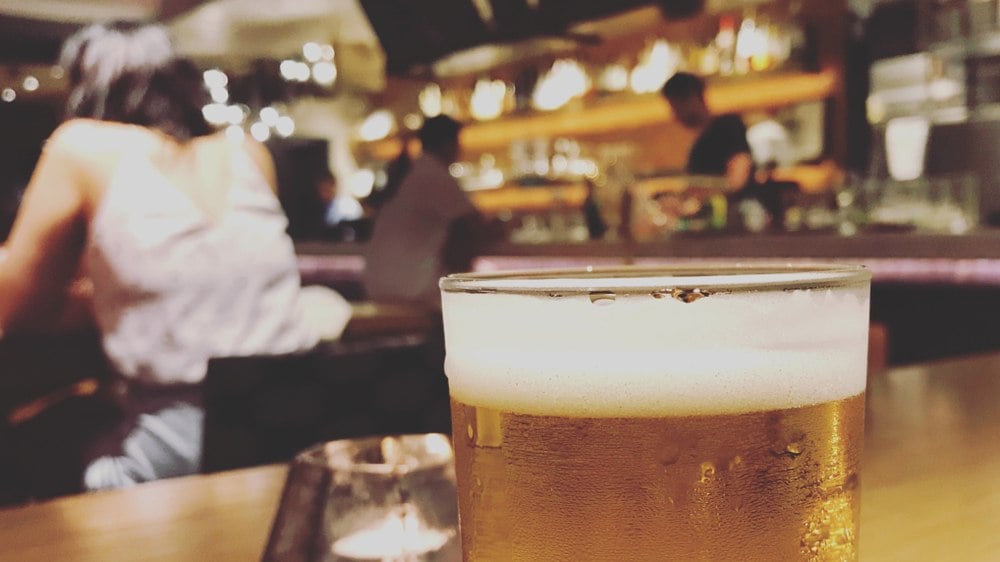
Many of the restaurants are open until the early hours of the morning, so if you decide to take a pause from all the clubbing, there are plenty of places to relax and have a casual drink and a seat while you gear up for another round.
You couldn’t possibly get lonely during a night out in Naha, as there are so many people out and about just like you are. Be sure to go club-hopping as there are so many great clubs to choose from! Having a taste of each is the best way to experience Okinawa nightlife.
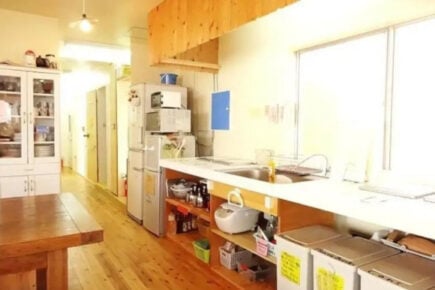
Okinawa Sora House
Okinawa Sora House is perfectly located close to the monorail that can transport you to anywhere on the island.!
- Air Conditioning
- Reception (limited hours)
Churaumi Aquarium | Scenic Drive | Snorkeling and Scuba Diving | Kokusai Dori Street | Kouri Island | Iriomote Island
If you’re spending more than 2-days in Okinawa, you’re going to need a few more activities to add to your 3-day itinerary in Okinawa. Here are a few of our favorite must-do activities in Okinawa!
Visit Churaumi Aquarium
- Churaumi Aquarium is the biggest aquarium in all of Japan.
- Adults entrance fee costs USD $17 and Children fee is USD $9
- If you’re hungry, try the Ocean View Restaurant Inoh. This casual restaurant offers spectacular sea-views and is a great place to bring kids. The food is wonderful and the portions are a great size!
The Churaumi Aquarium is a very popular attraction in Okinawa! In fact, since its opening in 2002, it’s attracted over 20 million visitors, and we’re sure you’ll want to be one of them.
The main attraction is called the Kuroshio Sea, which is a very large fish tank that holds over 7 500 000 liters of salt water. The tank contains whale sharks, manta rays and hundreds of other sea creatures that swim freely within the tank.
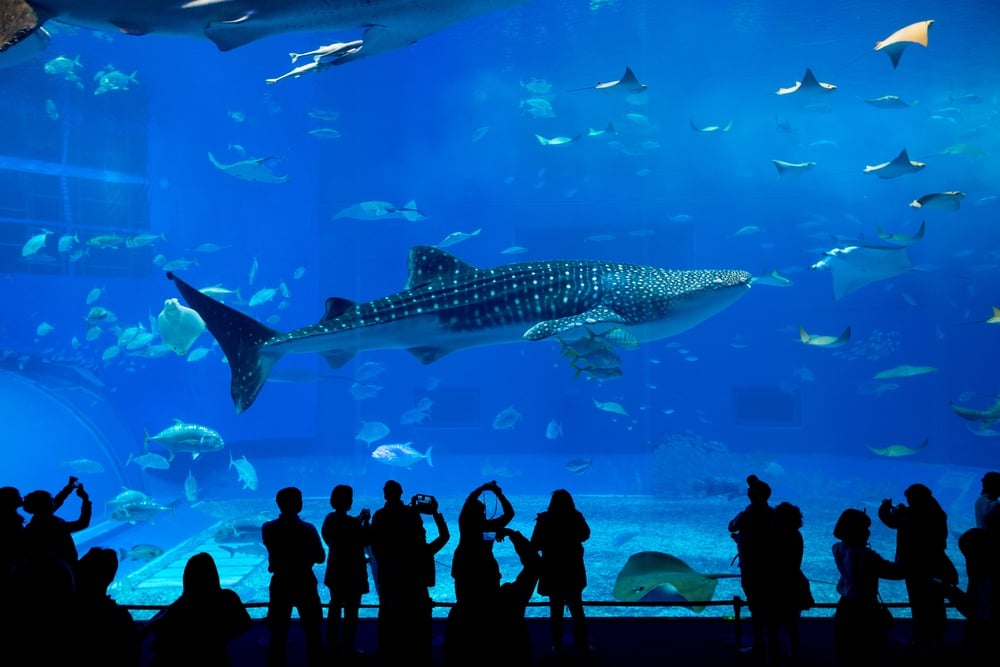
The aquarium also has many other displays including their coral reef and deep-sea exhibit. If you’re looking for something to do on a rainy day in Okinawa, this is the perfect activity to keep you entertained, and you’ll be able to learn a great deal about the marine life in the Okinawa region.
Go on a Scenic Drive
- Okinawa is known to have the most scenic drives out of anywhere in Japan.
- To rent a car generally only costs around USD $47 per day.
- You’ll get the chance to see more of the beautiful island.
Many of the islands in Okinawa are joined together by bridges, making it easy to create a long, even a full-days drive through the islands. Throughout most of the islands, you’ll be able to enjoy spectacular scenery as you drive.
Rolling forested hills will give way to rocky sea cliffs and calming sea views. There are plenty of places along the way to stop for magnificent views of the ocean and surrounding areas.
Okinawa roads are generally very wide and safe, and you’ll be pleased to know that traffic has never been a problem in Okinawa. So you can ride through the cities and countryside without fear of sitting in bumper to bumper traffic.
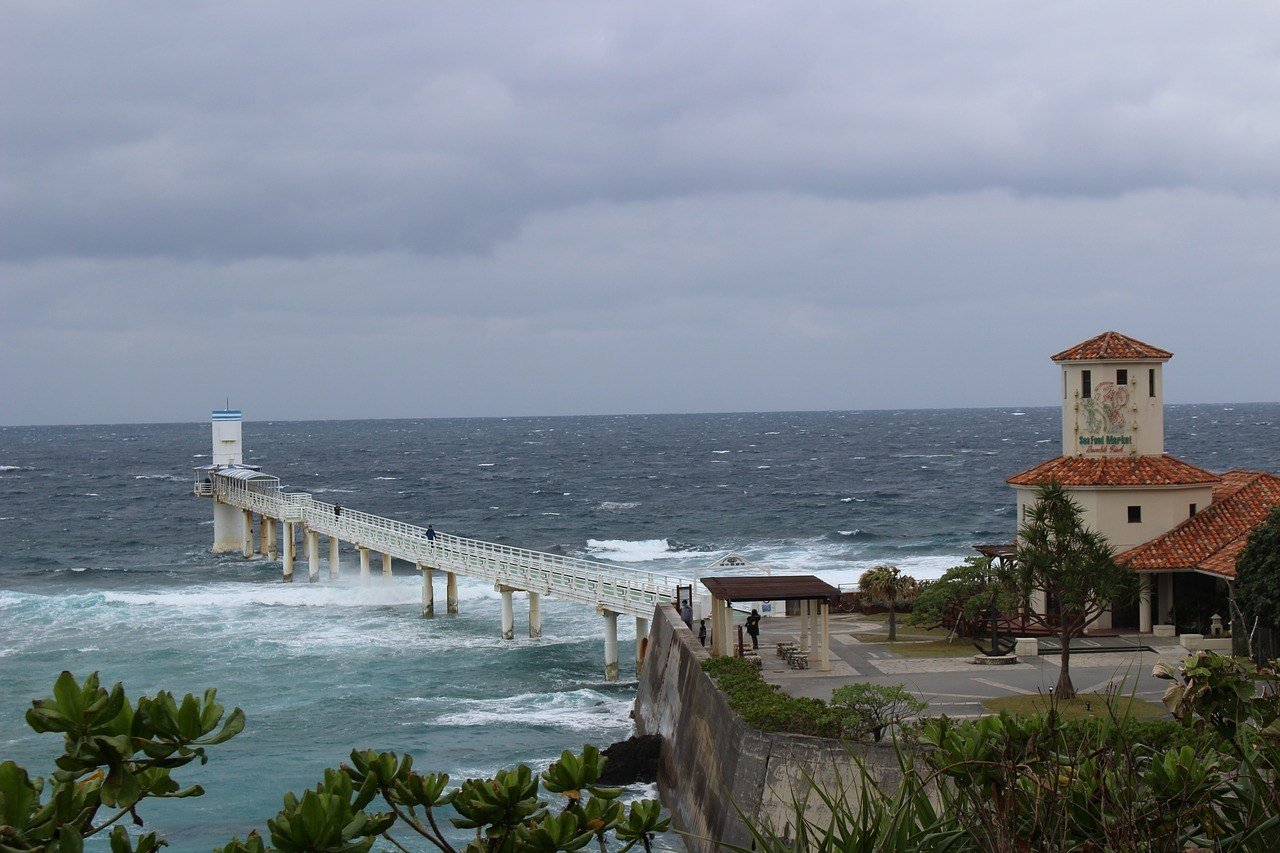
If you’re planning a full-day drive, be sure to pack a picnic that you can enjoy somewhere along the road, or find an incredible restaurant along the way. There are many of those to choose from in Okinawa, so you’ll never get hungry!
For those who aren’t too keen on an Okinawa walking tour, this is the perfect way to explore the island, and take incredible photos of the wonderful sights you’re sure to see along the way.
If you don’t want to hire a car, going by bus is always an option, however, you’ll lose a lot of the freedom you’d have if you went by car.
Go Snorkeling and Scuba Diving
- Beautiful diving and snorkeling spots
- Coral reefs to explore
- You’ll pay around USD $50 for a day of snorkeling or scuba diving
It’s no secret that Okinawa has some of the most biodiverse, beautiful and unique oceans in the world. With coral species that only exist off Okinawa’s shores, they’re dead set on protecting them! And boy are we grateful!
There are so many diving, snorkeling and scuba diving options in Okinawa. Try your hand at cave diving, which is done with underwater lights to illuminate your path. This is a really magical experience and you’re sure to see some interesting underwater life.
You could head off to the Kerama islands, which have become one of the most popular snorkeling sites in Okinawa. They are home to the most stunning coral reefs, that host an overwhelming amount of sea-life. You’re likely to encounter a few sea turtles and many tropical fish.
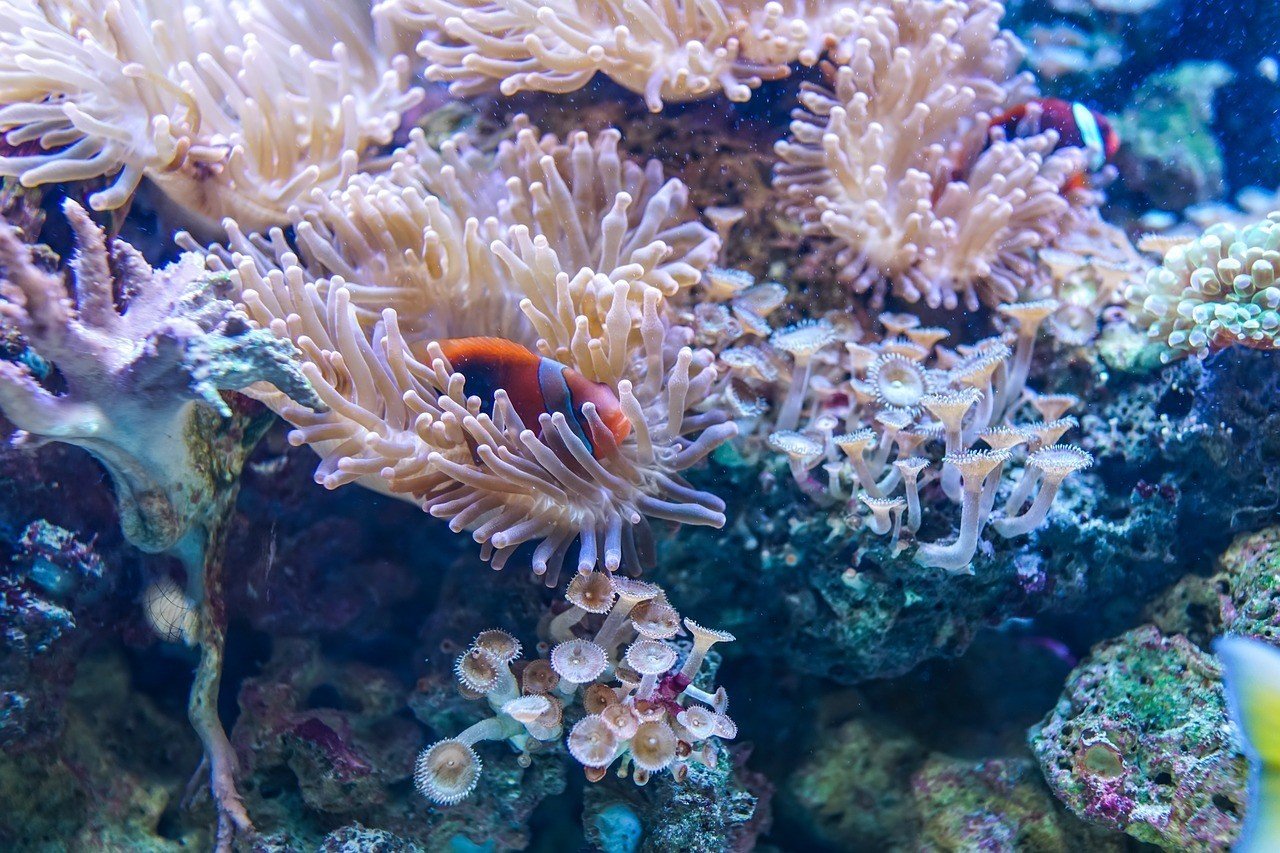
If you visit Onna Village, you’ll find two great snorkeling sites that are based at the bottom of a cliff. Cape Manza and Cape Maeda are lovely places to snorkel as the underwater scenery is just as beautiful of that above water. The seas are very calm in the area, making it the perfect place for beginner snorkelers to start out.
Diving off Miyako island is also an amazing experience as the water is a bright and tropical blue. Making the most of the time you have in Okinawa is imperative to having a great trip. Be sure you add this amazing experience to your Okinawa itinerary!
Browse Kokusai Dori Street
- Kokusai is the shopping hub of Okinawa
- 2 kilometers long
- Located in Naha city
If you love a good shop-til-you-drop experience, you’re going to thoroughly enjoy a trip to Kokusai Dori Street. The name of the street means “International Road” and it’s not hard to imagine why. It’s located right in the heart of Naha city, making it extremely accessible if you’re staying on Okinawa’s main island.
Looking for the perfect souvenirs to take back home to your family and friends, you’re sure to find it in this massive shopping hub. It’s easily comparable to Bangkok’s Khaosan Street. You’ll find it’s a bustling hub of activity at any time of day, and during peak season, tourists flock to this incredible street.
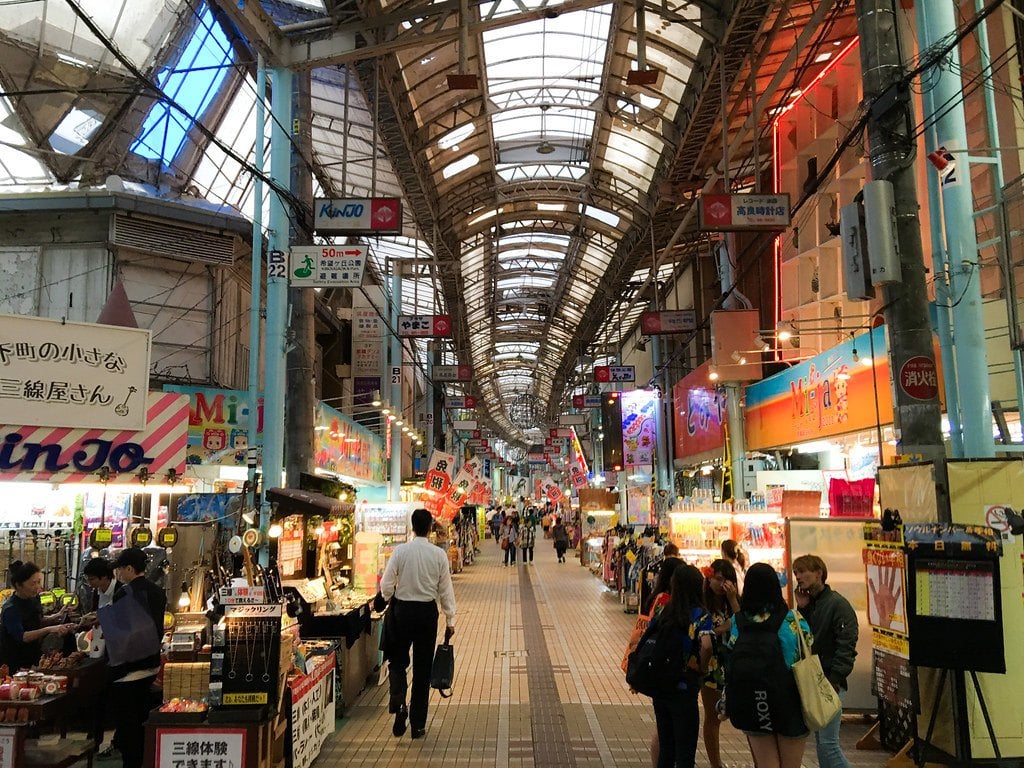
Filled with every kind of shop you can possibly think of, as well as a multitude of restaurants, cafes and salons, you simply cannot run out of things to do here. In fact, if you’re spending a week in Okinawa, we recommend taking an entire day from your Okinawa itinerary to explore and browse this lively area.
Many of the stores are open right up until 10 pm at night, giving you plenty of time to explore each one. Live music can be found in many of the restaurants, ensuring you’re well entertained the whole evening.
No vacation is complete without a shopping experience whilst mingling with the locals. You’re sure to love this activity hub in the heart of Naha city.
Travel to Kouri Island
- 1-hour drive from Naha city
- Cross the spectacular Kouri bridge
- See the heart rock
During your holiday in Okinawa, you’re going to want to spend some of your time exploring the other islands. The main island is wonderful, but the other islands have a great deal to offer too.
Kouri island is absolutely beautiful! It has arguably the best beaches in all of Okinawa . White sands, and turquoise waters perfect for snorkeling or diving! It’s a must-visit while you’re staying in Okinawa.
The good news is that Kouri island is just a 1-hour drive away from Naha city! There is a spectacular bridge that attaches Kouri island to the main island, making it very easily accessible for tourists and locals alike.
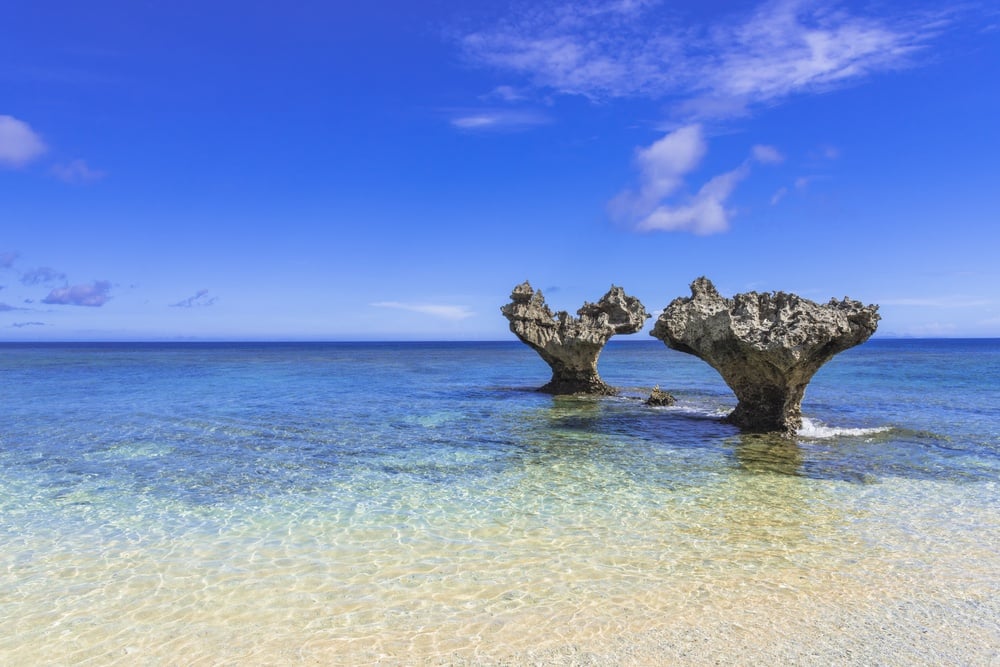
The views you’ll see from the bridge are unmatched! Take in the scenery as you drive over crystal clear blue waters! There’s nothing like a wonderful view to take your breath away!
Once you’re on Kouri island, spend the day exploring and perhaps swimming and snorkeling in the beautiful clear water.
If you don’t feel like renting a car, there are plenty of buses that will take you to Kouri island, and you can even do a bus tour around the island. This way, you’ll learn a lot about this beautiful island paradise while taking in the spectacular views.
Be sure to visit Tinu beach to see “Heart Rock”, a heart-shaped rock that sticks up out of the water and makes for some beautiful photos.
Take a Trip to Iriomote Island
- Known for its jungle vegetation
- Less touristy than the main island
- The whole island is a national park
Iriomote is very different from the rest of the islands in Okinawa. It’s jungle vegetation and wildlife inhabitants set it apart from the rest! In fact, 90% of the island is covered in dense jungle.
The easiest way to get to Iriomote island is by speedboat from Ishigaki island. This generally takes around 40 minutes, but is well worth the trip.
You’ll want to spend all day exploring Iriomotes rich and abundant nature! The best way to explore the outskirts of the island is by sea kayak. This should be arranged before you make the trip!
Just like all the other islands in Okinawa, the beaches are absolutely gorgeous and the sea water is crystal clear. This makes snorkeling and diving a great option while you’re on the island. But that’s not all there is to do.
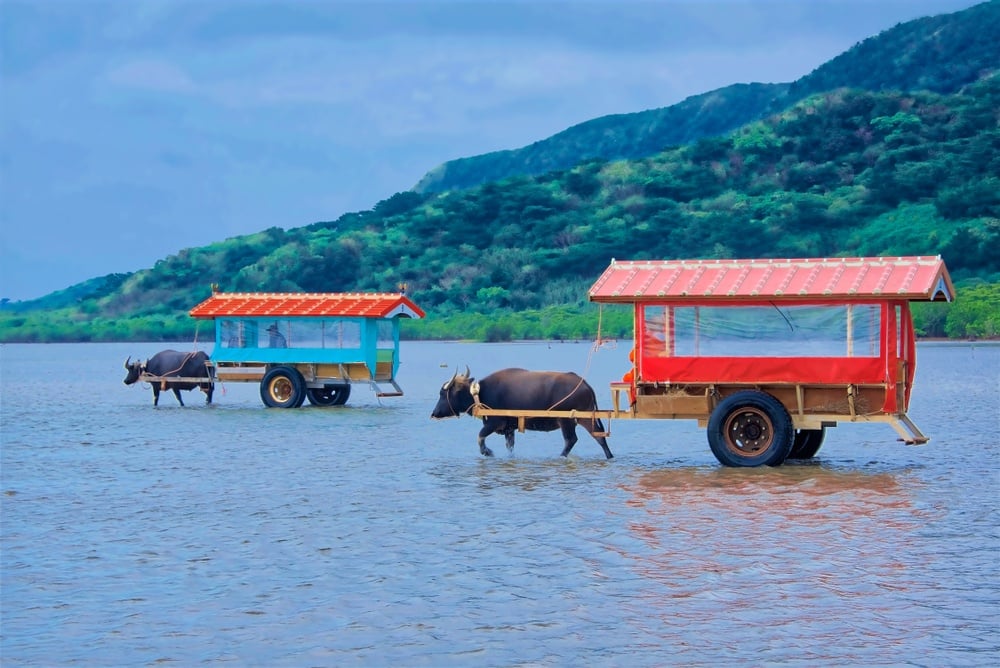
Hiking through the jungle vegetation is a great way to get to know the island a little more. If you’re lucky, you may even see an Iriomote cat. These cats are critically endangered and are only found on Iriomote Island.
If you’d like to spend a little more time in the water, paddle boarding is a great activity to take part in. The water is flat and still, making it an easy way to get around from one side of the island to the other.
Just like Japan’s mainland, Okinawa is a very safe place, however, it’s always good to take precautions and be vigilant during your vacation abroad!
The sun in Okinawa is very strong, so it’s important to protect your skin against sunburn and sunstroke. Be sure to use a strong SPF sunscreen when you travel to Okinawa, as you don’t want to spend your holiday with sore and itchy skin.
There are many beaches in Okinawa where swimming is banned due to dangerous sea creatures and sudden tidal changes that could sweep you out to sea. Be sure to check signs on the beach to make sure you’re swimming in a safe area.
The authorities in Okinawa also ask beach-goers not to swim during low tide as they may damage the extremely rare coral reefs found in the area.
There are many different snake species on the islands that are considered highly dangerous to humans. These snakes become hyperactive in the heat of the day and can be found in open grasslands, forested areas and sometimes even in city parks. It’s best to keep your eyes peeled for snakes and make sure your ankles are covered when going out into open grassy areas.
Snake bites are not an extremely common occurrence in Okinawa, but they do happen, and we’d rather they didn’t happen to you! All in all though, you should be fine as long as you apply basic safety precautions.
Don’t Forget Your Travel Insurance for Okinawa
ALWAYS sort out your backpacker insurance before your trip. There’s plenty to choose from in that department, but a good place to start is Safety Wing .
They offer month-to-month payments, no lock-in contracts, and require absolutely no itineraries: that’s the exact kind of insurance long-term travellers and digital nomads need.

SafetyWing is cheap, easy, and admin-free: just sign up lickety-split so you can get back to it!
Click the button below to learn more about SafetyWing’s setup or read our insider review for the full tasty scoop.
If you’re spending more than 3 days in Okinawa, you’re going to need a few more activities to add to your 3 day Okinawa itinerary. Here are our favorite day-trips from Okinawa, that we’re sure you’ll love.
Full-Day UNESCO and Historical Sites Day-Trip from Okinawa
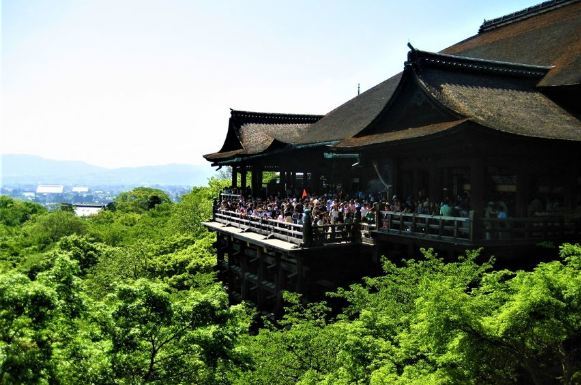
While this tour takes place on Japan’s mainland, it’s an important tour that will help you understand Japan a whole lot better!
This 9-hour tour excludes the time you’ll spend traveling from Okinawa. You’ll get the chance to see some incredible historical landmarks, indulge in a tasty Japanese style lunch and explore some of Japan’s most mystical temples.
Be sure to take your camera along for the day-trip as you’ll see some stunning views along the way. You’ll also get the chance to stop off at any location you feel drawn to, to snap you few photos before continuing on your tour.
Mt Fuji and Hakone Cruise and Bus Tour
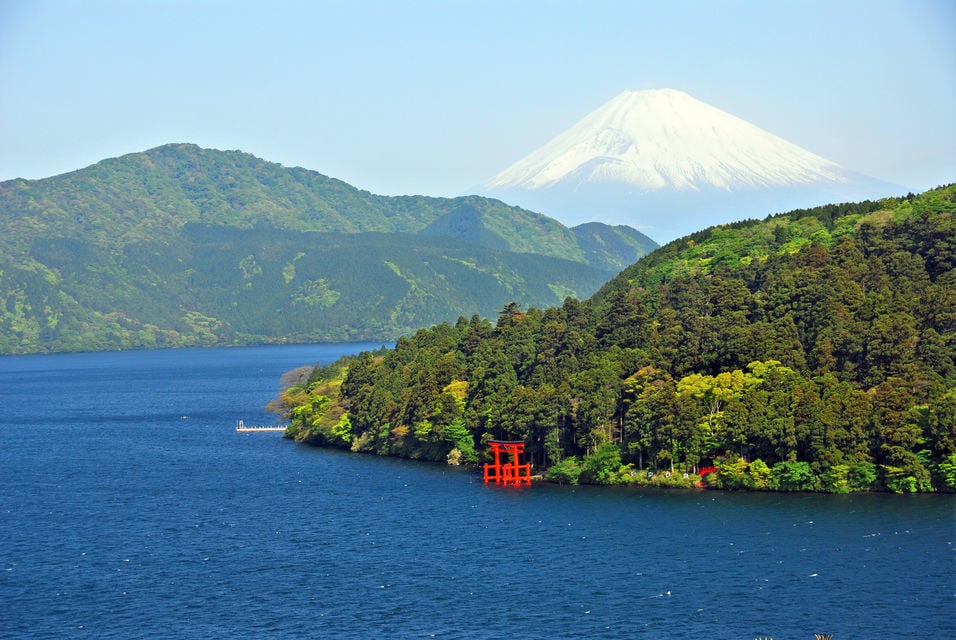
This day trip also takes place on Japan mainland, but it’s well worth the trip!
You’ll start your trip with a visit to Mt Fuji and experience its splendor. You’ll stop at the entrance to climb the mountain and make your way up the path. You’ll have access to one of the mountains most epic viewing points to stop and take photos before heading to a buffet lunch with breathtaking mountain views.
You’ll then head out on a cruise on Lake Ashi, which also offers spectacular views and incredible photo opportunities.
3 Island Day-Trip From Okinawa
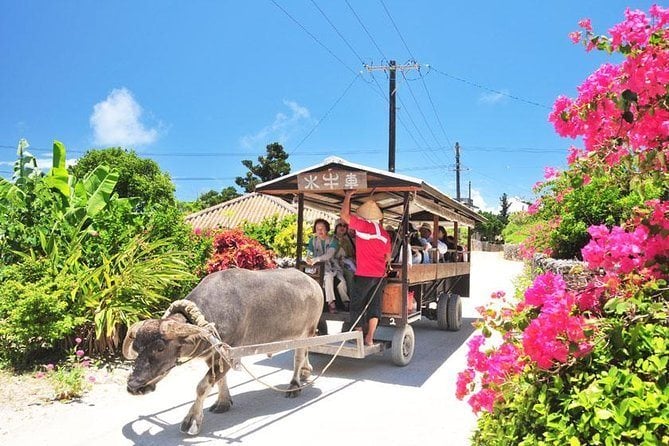
During this day-trip, you’ll get the chance to visit the 3 most interesting islands in the Okinawa island region.
On Iriomote island you can enjoy mangrove views, then you’ll visit Yufu island and take an exciting water buffalo tour before sitting down to an indulgent lunch.
You’ll then head to Taketomi island where you’ll take a bus sightseeing tour. You’ll see the village with its quaint red roofs and buffalo leisurely walking around. After your bus tour, you’ll head to the main beach for some sunbathing, before heading back to Okinawa’s main island.
Cultural and Spiritual Tour with Zen Meditation
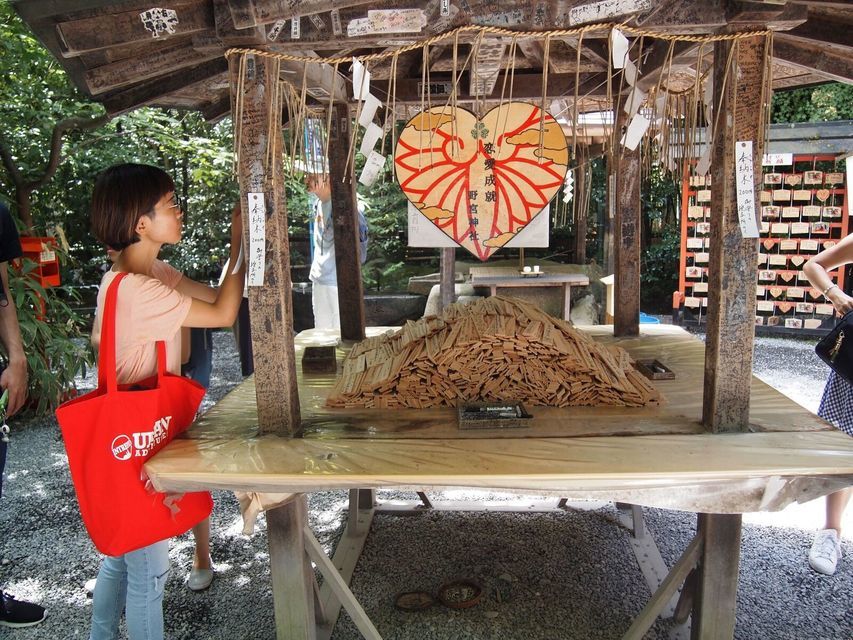
This tour will see you visiting Japan’s mainland and going on a quest to find your zen. You’ll visit an ancient mountaintop temple and marvel at the incredible views of the valley below.
You’ll then be instructed in the art of meditation by a real Buddhist monk! This is quite an experience and definitely sets the mood for the rest of your weekend in Okinawa.
You’ll get the opportunity to partake in a peaceful green-tea ceremony in a sacred zen temple, before wandering through an ancient bamboo grove.
All these wonderful activities will make you feel at peace and put you in a great mind frame to enjoy the rest of your holiday.
Temples Tour to Kamakura
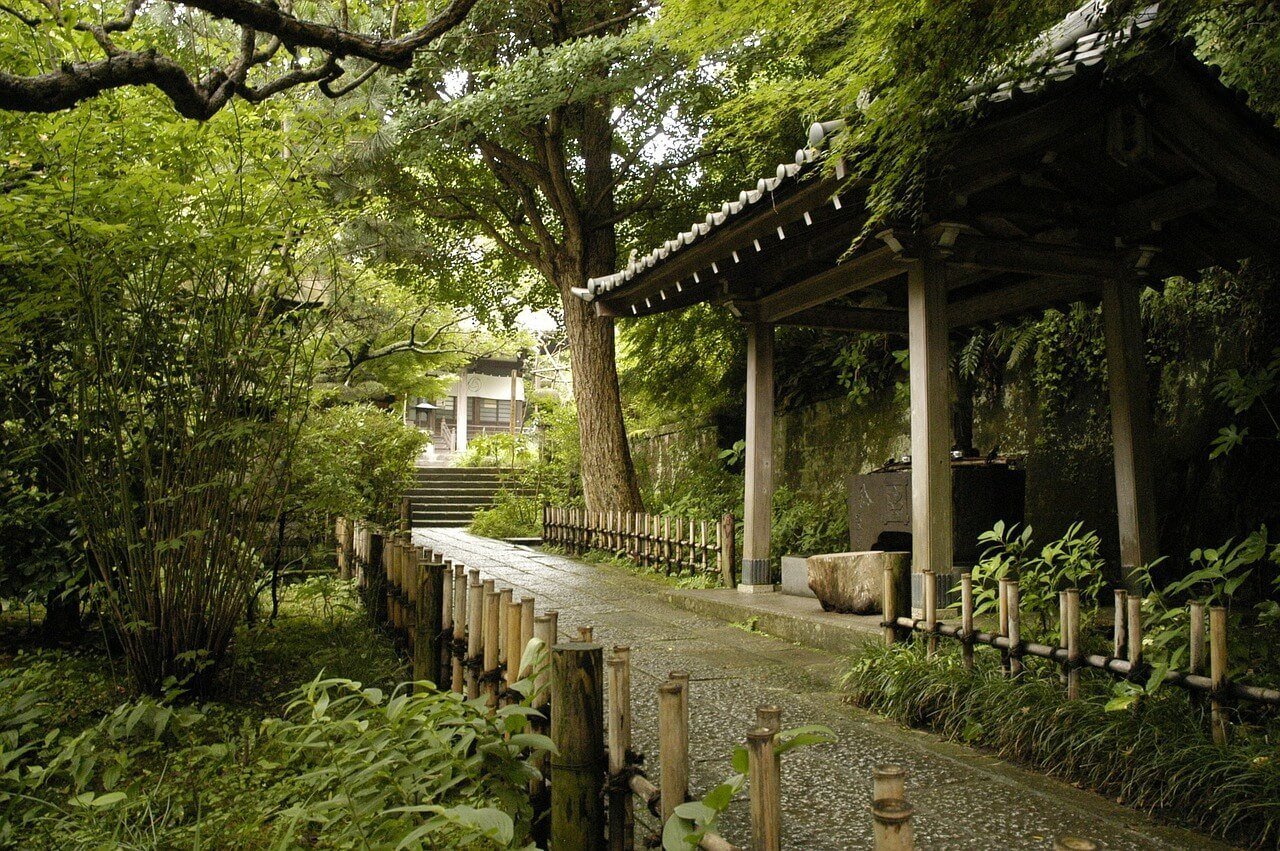
On this 10-hour tour, you’ll have to visit Japan’s mainland to explore some of the many religious temples in the country.
You’ll visit Japan’s ancient capital – Kamakura , and visit the cities most iconic Buddha statue. As well as a variety of old temples and sacred buildings.
Along the way, you’ll visit many traditional buildings and learn about the history of the samurai. You’ll also get the chance to stop off for lunch at one of Japans best seaside restaurants and enjoy incredible ocean views.
You’ll then get the chance to undergo a kimono makeover and walk away from the tour with your very own traditional kimono. It really is a day trip not to be missed.

Stash your cash safely with this money belt. It will keep your valuables safely concealed, no matter where you go.
It looks exactly like a normal belt except for a SECRET interior pocket perfectly designed to hide a wad of cash, a passport photocopy or anything else you may wish to hide. Never get caught with your pants down again! (Unless you want to…)
Find out what people want to know when planning how many days to spend in Okinawa.
How many days in Okinawa do you need?
5 days in Okinawa are ideal if you want to explore multiple islands, see the best sights, and have time to relax on the beaches.
What should you include on a Okinawa 3 day itinerary?
Make sure to include these in your Okinawa itinerary! – Okinawa Peace Memorial Park – Shuri Castle – Makishi Market – Kokusai Dori Street
Where is the best place to stay in Okinawa if you have a full itinerary?
If you want to spend more time exploring and less time travelling, staying somewhere central like Nago is ideal. It offers great beaches and plenty of attractions.
Is Okinawa worth visiting?
Okinawa is often overlooked by travellers, but we think it’s definitely worth a visit. Tropical islands, marine life, and cultural experiences make this place a treat for the senses.
Now that you know all the top places to visit in Okinawa, you can start planning your ultimate Okinawa itinerary.
Although not as popular as many other island destinations, it comes with so many perks. You won’t see throngs of tourists crowding the Okinawa landmarks, and the beaches will be fairly quiet most of the year, leaving you to enjoy the island paradise in peace!
Now that you know what to do in Okinawa, you can begin planning a trip to Okinawa with ease. Your next holiday is sure to be a winner if you stick to out Okinawa itinerary to make the very most of your vacation. If you still need some more isnpiration, check out our list of unique places and hidden gems to visit in Okinawa.
Touring Okinawa has never been this easy! Choosing a few activities from our selection of the very best ensures your holiday will be jam-packed with exciting entertainment! What are you waiting for? Your paradise awaits you!

Share or save this post

Thanks for all the wonderful information. Very detailed, it should definitely come in handy! Just a quick note, after some research, I don’t recommend visiting Iriomote Island, due to the risk of causing damage to the Iriomote cats (critically endangered as you mentioned) and environment: https://hakaimagazine.com/features/the-risky-fame-of-a-rare-island-wildcat/ Thank you!
Leave a Reply Cancel reply
Your email address will not be published. Required fields are marked *
Save my name, email, and website in this browser for the next time I comment.
Notify me of followup comments via e-mail.
- Skip to main content
- Skip to primary sidebar

Destinations
- Plan Your Trip
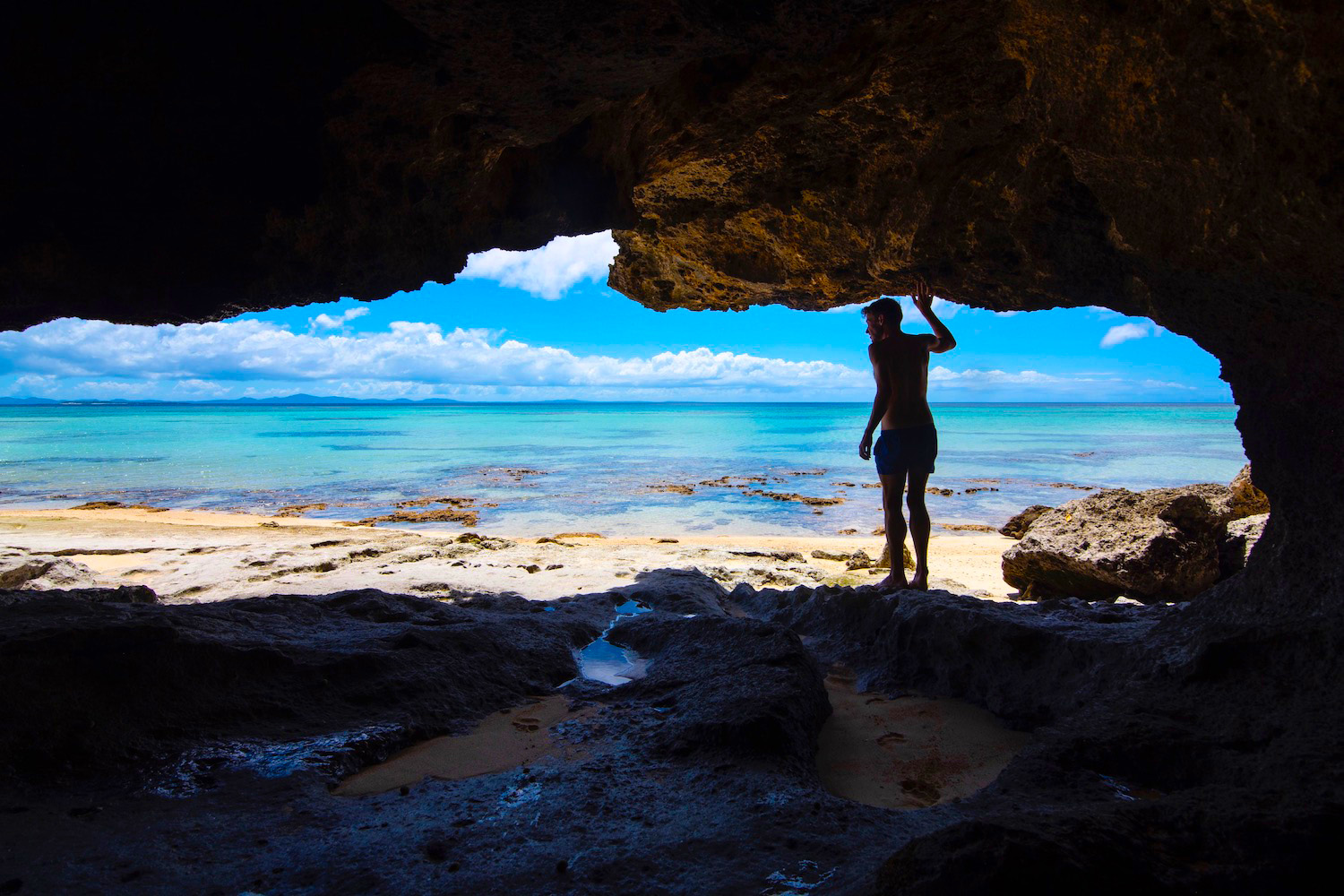
Okinawa Starts Here
Unsurprisingly, many of the things to do in Okinawa center around the water, whether you’re swimming where it meets the islands’ sugary shores, or scuba diving under it. However, there’s plenty to enjoy in Okinawa that has nothing to do with the beach, or even the outdoors.
Trust me—I know. My first trip to Okinawa took place in the winter, and in spite of what well-meaning friends had told me, saw the archipelago plunged into conditions that were absolutely frigid, with only about three hours of sunshine over the course a 72-hour trip. As a result, I had little choice but to seek out Okinawa attractions that were weather independent.
On the other hand, this Okinawa travel guide won’t simply name places to visit if you happen to come when it’s pouring rain and barely above freezing. I’ll also discuss activities that you can enjoy on the hottest and sunniest of summer days, so don’t you worry!
The Best Time to Visit Okinawa
When is the best time to travel to Okinawa? Officially, Okinawa is a 365-day per year destination, but my personal experience contradicts this . While my initial research suggested that early February was near the top of the list of when to visit Okinawa, the conditions I encountered were appalling—I’m talking thick clouds, heavy rain, howling wind and temperatures between 3º-5ºC. I can’t in good conscience recommend that anyone visit Okinawa between about November and March as a result, in spite of the fact that things to do in Okinawa in March are theoretically similar to what you could do in May or September.
On the other hand, since so much of what to do in Okinawa is outdoor, and the archipelago also experiences a long monsoon and typhoon season between about June and October, this is also not an ideal time to visit Okinawa, at least not on paper. In practice, I’ve found that rain comes and goes quickly in Okinawa during the Japanese summer ; apart from this, April and May are generally OK months to visit Okinawa. My latest visit to Okinawa took place in September and apart from some haze on Tokashiki island , the weather was perfect.
My Favorite Things to Do in Okinawa
Hit the beach (or at least look at it).
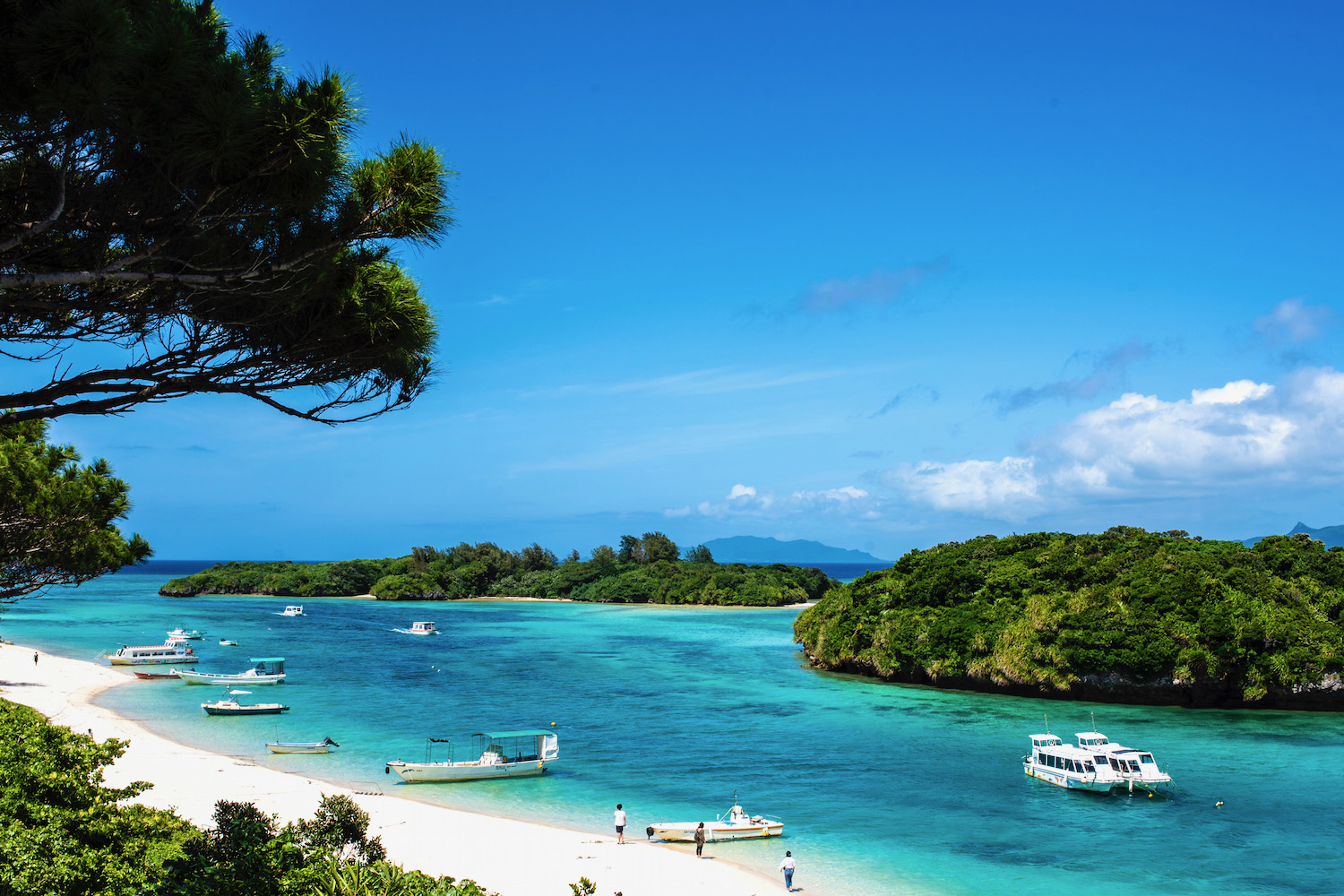
The bad news? Coming up with even a short list of the best beaches in Okinawa can be difficult, especially if you have the time and inclination to go island-hopping. The good news? If you’re planning a shorter trip in Okinawa, add Ishigaki ‘s Kabira Bay and Aharen Beach on Tokashiki island (which sits just to the north of the main island) to your list. Note that in the case of Kabira Bay, which is protected, you won’t be able to get in the water (but you can still get some awesome pictures!).
Go Under the Sea (or Boat on Top of It)
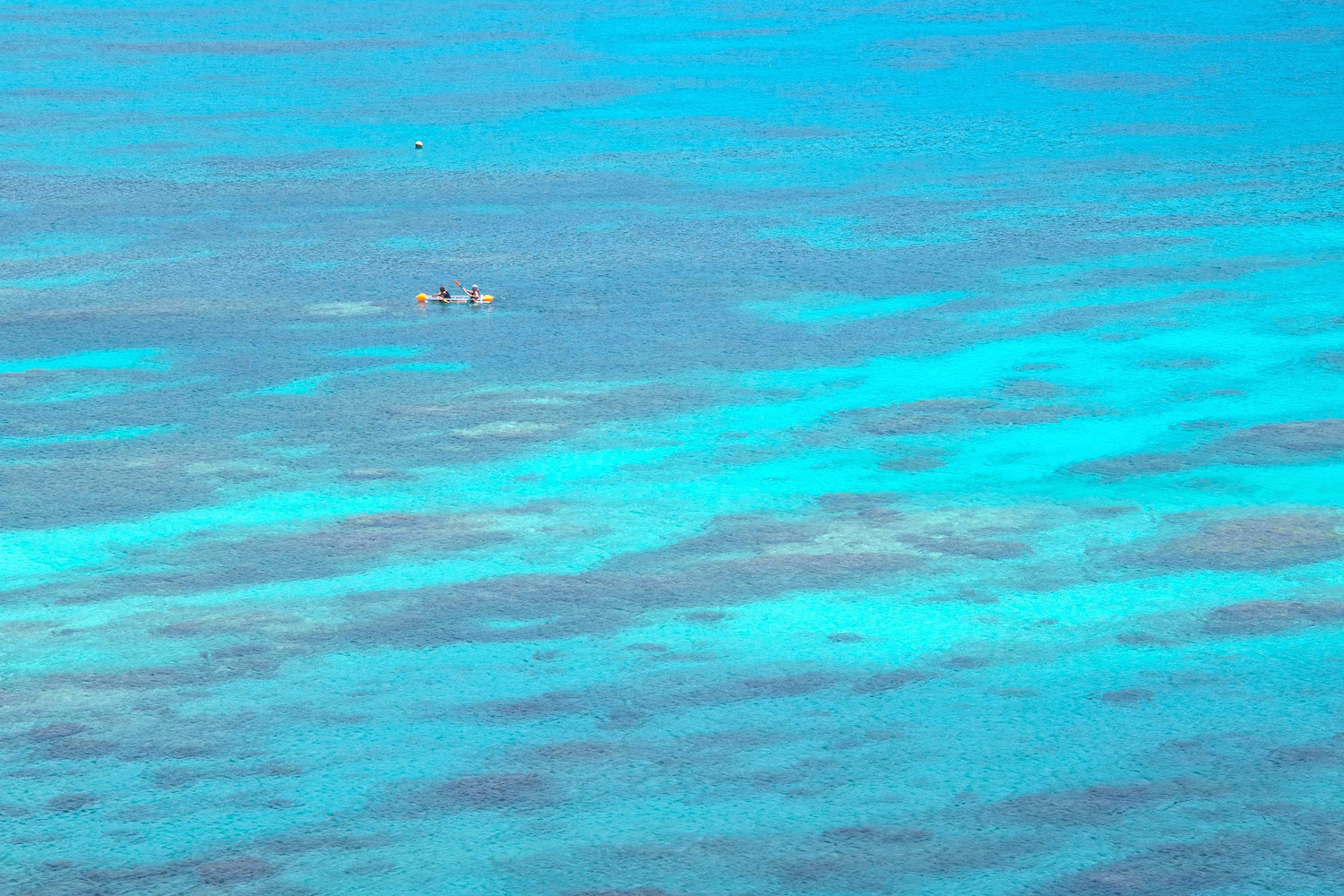
Okinawa diving is some of the best in Asia (and almost by default, the best in Japan), though this can be a more expensive activity than you’ve found it to be elsewhere. Top diving spots in Okinawa include the Kerama Islands , which sit just off Okinawa main island, as well as the Yaeyama region, which includes Ishigaki. Note that Japan is very strict about diving licenses; if you don’t have yours when you arrive to Okinawa, your only option will be to snorkel. Another way to enjoy Okinawa’s beautiful water is to rent a canoe or kayak.
Take a Hike
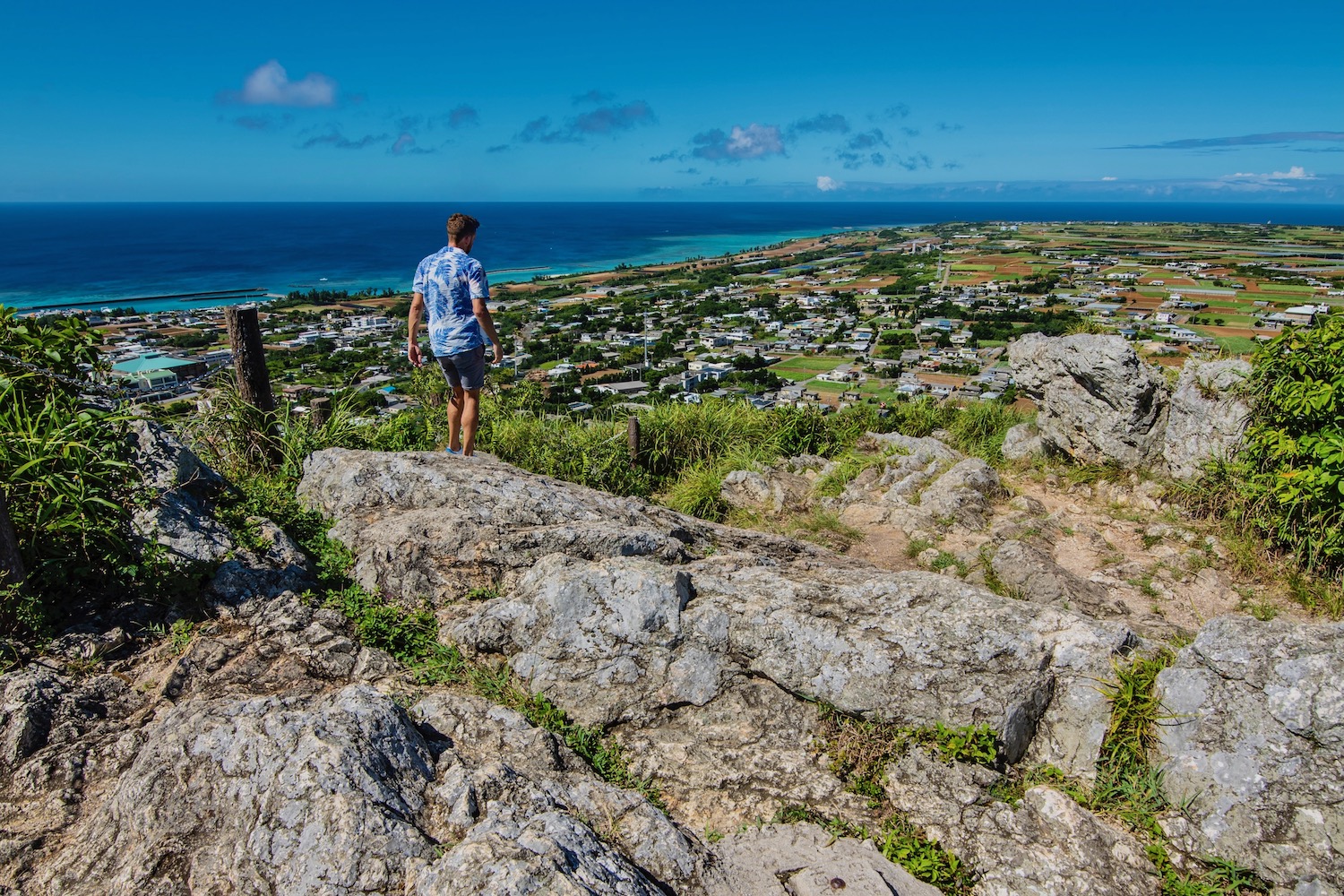
Although it’s home to the best beaches in Japan, many things to do in Okinawa have nothing to do with water. In particular, Okinawa is a hiking paradise. Sticking close to the main island, some of my favorite hikes include the relatively short one up to the ruins of Nakijin Castle , or up to the keep of Shuri Castle in Naha city (which, due to a 2019 fire, is still mostly destroyed, I warn you). Outside the main island, Mount Gusuku on Ie offers stunning views, while Mt. Omoto on Ishigaki couples amazing panoramas with crystalline waterfalls.
Eat Your Way Through Okinawa
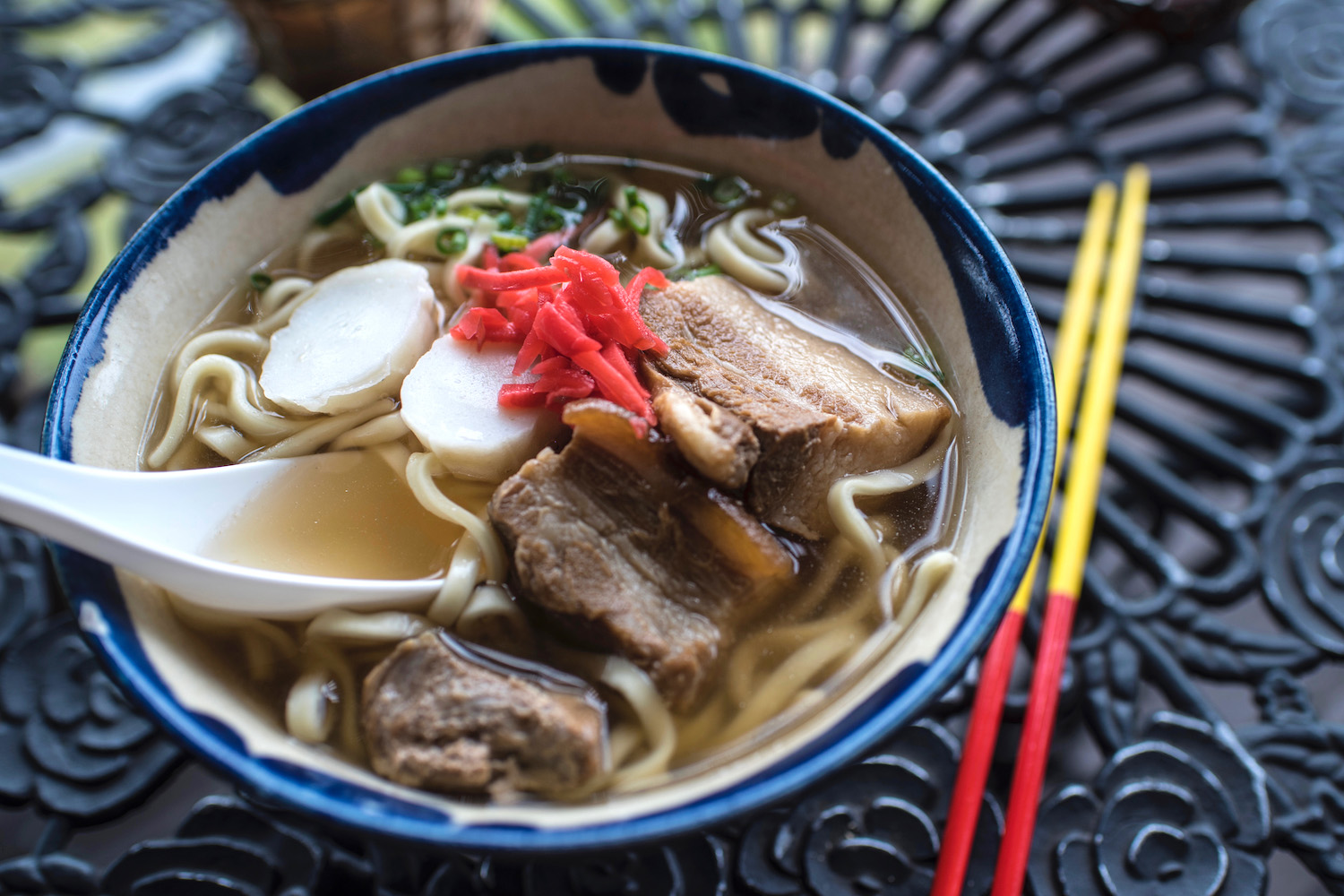
Although neither as ubiquitous as sushi nor as trendy as ramen , the best Okinawa food will nonetheless have your mouth watering. Try Okinawa Soba , which sees classic soba noodle soup paired with tender pork belly with just the right amount of fat. Or head down to the Kokusai-dori international street in Naha city, and sample Taco Rice, a quirky dish that’s said to be the brain child of the American troops controversially stationed in the archipelago.
Stick to the City
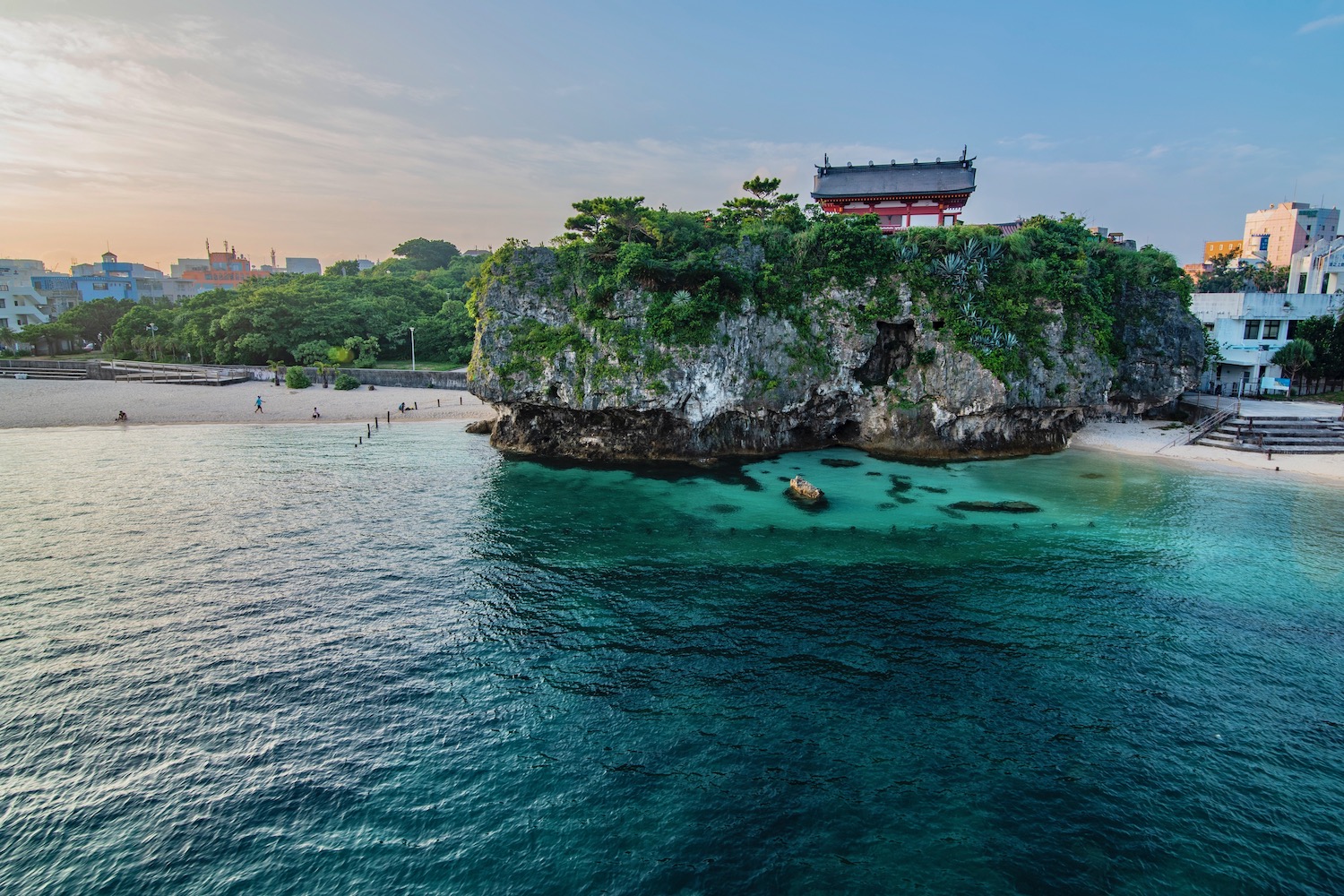
None of which is to say you have to strap on hiking boots or don a swimsuit to enjoy Okinawa sightseeing. In fact, there’s plenty to enjoy in Naha itself, from the aforementioned Shuri Castle, to peaceful Shikina-en park, to the mysterious Naminoue Shrine , which rises above the city. Naha city is also home to Okinawa Prefectural Museum & Art Museum , where you can learn the story of the once-sovereign Kingdom of Ryukyu, which ruled over Okinawa before it was absorbed into the Japanese Empire.
Where to Stay in Okinawa
Okinawa is primarily a leisure destination for Japanese travelers, which leads some to believe that all the best Okinawa hotels are fancy beach resorts (if not ones stuck totally in the 80s, as is often the M.O. for hotels in Japan). Not so, at least not completely. While travelers seeking such properties can choose an accommodation like Hyatt Regency Seragaki Island , Okinawa is home to plenty of smart and even boutique-style city hotels, from West Inn in Naha to Ishigaki’s Hotel WBF Porto .
On the other hand, I wouldn’t worry yourself too much over where you stay in Okinawa. Notwithstanding the fact that so many of the things to do in Okinawa will keep you far outside your hotel room, even the location is somewhat superfluous, since you are likely to rent a car when you travel to Okinawa. To echo a sentiment I’ve brought up throughout this article, I believe your primary concern when visiting Okinawa should be the weather.
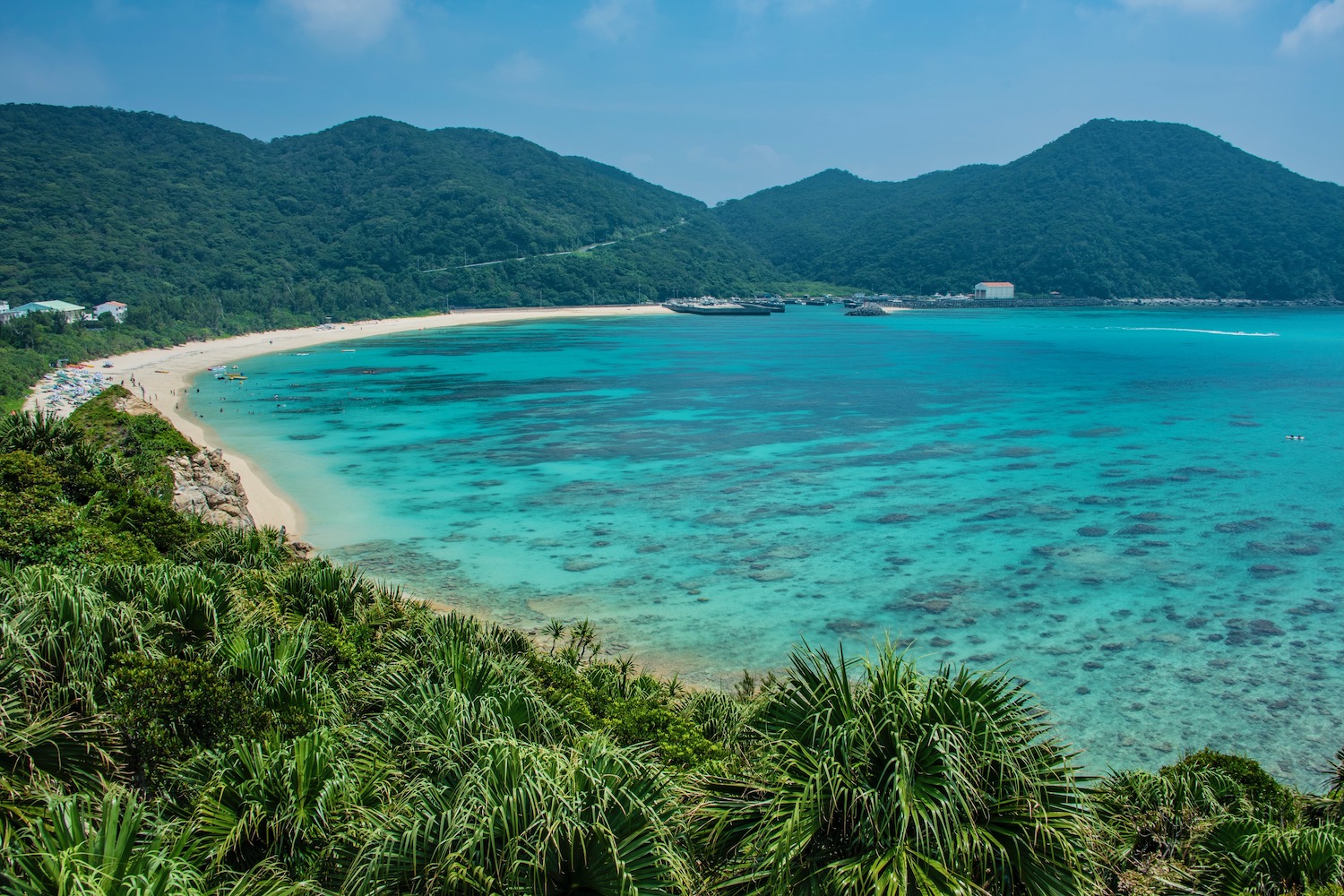
Is Okinawa Overrated?
Is Okinawa worth visiting? After my disastrous winter trip to the former Ryukyu Kingdom, I certainly didn’t think so. I was angry and I felt cursed, especially since so much of the rest of my 2018 Asia travel saw unseasonably wet and cold conditions. Thanks climate change! Further travel to Okinawa (it looks so beautiful under sunny skies—almost like Hawaii, which is ironic since so many Japanese shirk these islands in their own backyard for it) has proven me wrong, somewhat.
Which is to say that I wouldn’t recommend cutting short a trip in the rest of Japan—what to see in Okinawa, apart from the beaches, doesn’t compare to even the smallest city on Honshu, Shikoku , Kyushu or Hokkaido—or going out of your way at all, really, to visit Okinawa. The islands are honestly best visited on a weekend trip if you’re staying in Japan (or a nearby Asian country, like Taiwan ) for a while.
Other FAQ About Things to Do in Okinawa
Does okinawa get cold.
I know from personal experience that Okinawa gets cold! When I took my first trip to the archipelago, in January 2018, it was absolutely frigid, to say nothing of how rainy and windy it was, with almost constant cloud-cover. When is the best time to visit Okinawa? In my opinion, it’s not between December and March.
Do you tip in Okinawa?
As is the case throughout Japan, tipping is not customary in Okinawa. If you do try to tip, Okinawan people will assume you accidentally left the money behind, and chase after you with it. Save yourself the awkward exchange and don’t bother trying to tip in the first place!
What is the best area to stay in Okinawa?
The most convenient place to stay in Okinawa is in Naha city, preferably near the Yui monorail. Likewise, in Ishigaki, staying near Ishigaki Port allows you to easily access boats to outlying islands in the Yaeyama Archipelago.
The Bottom Line
The good news? Many experiences in my Okinawa travel guide have nothing to do with the beach, especially in Naha, the capital of the prefecture and largest city on its largest island. The bad news, conversely, is that needing to stay indoors is relatively likely in Okinawa, whether you make the mistake of visiting in winter like I did, or are unlucky enough to have a summer trip to the archipelago coincide with a typhoon making landfall. Need more help figuring out where Okinawa fits into your larger Japan trip, or determining the best Okinawa things to do? Consider commissioning a custom Japan itinerary!
Plan Your Japan Trip

Subscribe to email updates!
Words, images and design ©2018-2024 Robert Schrader, All rights reserved. Read Privacy Policy or view sitemap .

- Okinawa at a Glance
- World Heritage
- Traditional Culture
- Food & Longevity
- Wonderful Nature
- Beach information
- Okinawa Main Island
- Kume Island
- Kerama Islands
- Miyako Islands
- Yaeyama Islands
- Nature & Wildlife
- Heritage & Tradition
- Flavors of Okinawa
- Shopping & Relaxation
- Activities & Experiences
- Okinawa Life
- Recommended Trips
- Getting to Okinawa
- Getting Around
- Useful Information
- When to Visit
- Accommodations
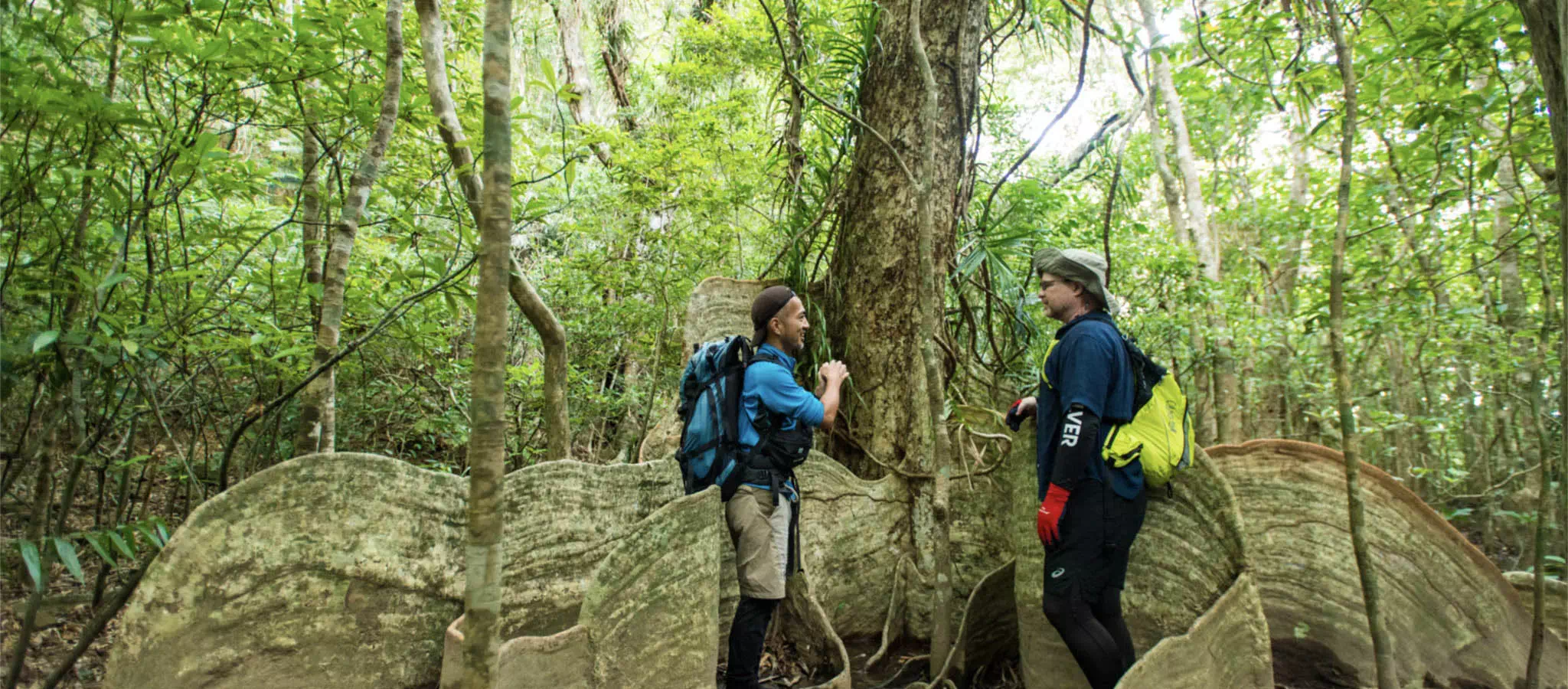
PLAN YOUR TRIP
Helping you plan your okinawa adventure.
When to go, how to get here, and how to get around the beautiful islands of Okinawa. Everything you need to know to plan an unforgettable trip.
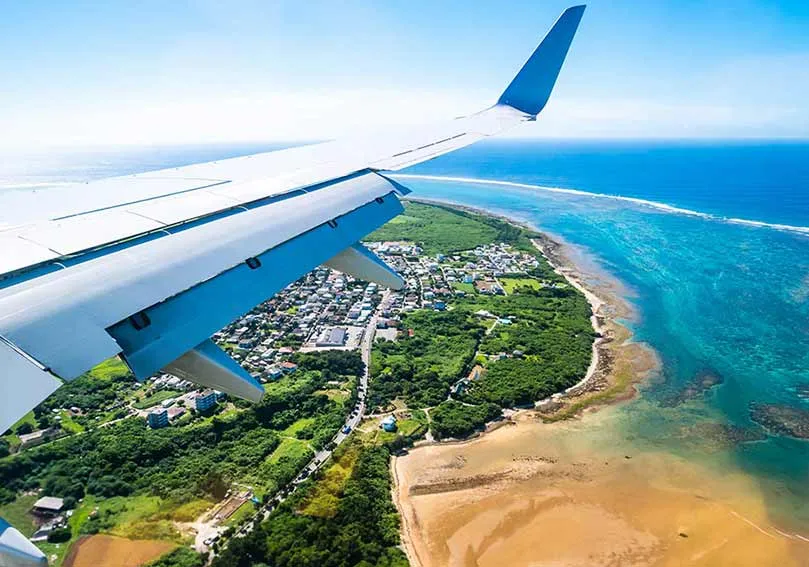
TOP DESTINATIONS
Whether it is your first time to Okinawa or your fifth, these iconic destinations have something for everyone, from family-friendly fun and beachside bliss to active adventure.
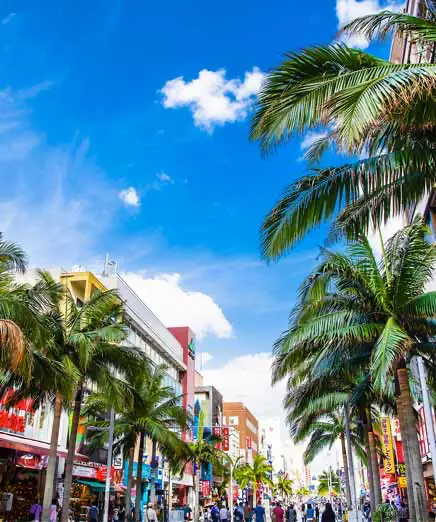
- Plan Your Trip

Home » Travel Guides » Japan » 25 Best Things to Do in Okinawa (Japan)
25 Best Things to Do in Okinawa (Japan)
Okinawa is the name for a prefecture in Japan which is also an archipelago of some 160 islands, some of which are inhabited and the vast majority of which are not. As Okinawa lies off the coast of Kyushu, it enjoys a mostly subtropical climate and is known as one of the best places to come in Japan if you are looking for some sand, sun and surf.
Okinawa is also known for having a distinct feel to the rest of Japan as it is so far south and it is makes a refreshing change from the big cities for which the country is always associated with such as Tokyo and Osaka.
It is slightly more laborious to make the trip to Okinawa than a number of other places in Japan, but if a change of pace and some fantastic outdoor scenery is what you are after, then this is an excellent choice.
Here are the 25 best things to do in Okinawa …
1. Start at Okinawa Honto

Okinawa Honto is the largest island in Okinawa which is why it is often used as a starting point to any trip to this part of Japan.
This island also used to be a military based during World War Two and you will still find an American base here to this day which carries out drills, so don’t be surprised if you see planes racing overhead when you visit.
The main city on the island is Naha which is where you will find a clutch of attractions such as museums that will fill you in on some of the military background of Okinawa Honto.
2. Go spelunking at Okinawa World

Okinawa World is located on Okinawa Honto and is a theme park which also encompasses the Gyokusendo Cave.
The chamber spans almost 900 meters and is filled with stunning stalagmites and stalactites.
Outside the cave you will find a number of souvenir stalls where you can pick up some local trinkets including snake liquor which is one of the delicacies in Okinawa.
To see the snakes before they got turned into liquor, you can also visit the neighboring snake exhibition which is close to the cave.
3. Have an adventure on Iriomote

If you want to get the most out of a visit to Okinawa and like to be active while you are on holiday, then make sure you head to Iriomote.
This island is close to Ishigaki Island and it is known for having an interior which is covered in thick jungle.
On a trip here you can trek through the jungle as part of a hiking tour, or you can also choose to kayak around the island.
As a result, this is the best island to choose if you want to see a bit more of the rural side of life in Okinawa, as some of the other islands are better known for their beaches and diving options rather than bushwhacking.
4. Dive at the underwater ruins of Yonaguni

The island of Yonaguni is known for its amazing underwater ruins, so if you are in search of some exceptional diving in Okinawa then this is the place to come.
Many of the underwater ruins here are made of solid rock and some experts have put the pieces at around 8,000 years old.
Legends even abound that some of the ruins are part of a lost continent called Mu, and you will find rock formations that look like staircases as well as rooms and walls.
One thing to note is that the currents around the ruins can be strong and changeable so diving here is mostly recommended for intermediate and experienced divers.
5. Try the local food

One of the great delights of Okinawa is that it has a completely different cuisine to many other parts of Japan.
Many people will tell you that Okinawan cuisine is similar to that of Taiwan and pork is a staple of many dishes served here.
You will also find that many dishes use ingredients such as purple yams and bitter melon and, as this is a tropical part of Japan, you can also sample a range of delicious tropical fruit such as papaya, dragon fruit, calamansi and papaya.
6. Go whale watching

If you are visiting Okinawa then one of the best things to do is go whale watching.
From January to March the area is known for its humpback whales which swim in the waters off the southern coast have migrated to Japan from Alaska.
One of the best places to see the whales is around the Kerama Islands and you can book a whale watching tour which allows you to go out in a boat and get as close to these spectacular animals as possible.
7. Visit Shuri Castle

Shuri Castle is one of the main attractions in Naha City on Okinawa Honto and would have been the home of the rulers of the Ryukyu Kingdom in the days of old.
The main reason to come here is to enjoy the gusuku architecture of the castle which is built in the traditional Okinawan style.
Unfortunately the castle has been destroyed several times and had to be restored in both 1958 and 1992, so the building that stands now is not the original.
8. Enjoy bird watching on Kume

Kume Island is one of the best islands to visit in Okinawa if you want to take in a wide range of local plant and wildlife.
The island is also a national park and one of the top activities here is the chance to go trekking through the lush foliage that covers much of Kume.
As much of the central part of the island is given over to natural wetlands, many people come here for the bird watching opportunities as a huge number of local species congregate here and hide in the tall grasses and bushes.
9. Try the noodles on the Yaeyama Islands

Okinawa is known for its unique cuisine which you won’t find across most of Japan, but even across the islands you will find some traditional dishes that don’t exist in other places.
If you are traveling to the Yaeyama Islands in Okinawa then you need to make sure that you try the Yaeyama soba which are different to traditional soba noodles in Japan and are made of white wheat.
They are then cooked in a pork broth and topped with more pork, fish cakes and aromatic ginger.
10. Go sailing

Until recently sailing was not a particularly popular activity around Okinawa, although now it is experiencing something of a boom.
For this reason, if you are a budding sailor then you shouldn’t miss the chance to sign up for a sailing trip with one of the local sailing companies and you can either cruise around some of the islands here such as the Kerama Islands as part of a tour, or you can charter your own boat and island hop at your leisure.
This gives you the chance to check out any islands that take your fancy, many of which are uninhabited, letting you feel as if you have your own private island paradise for the day.

11. Explore the local villages on Taketomi

Taketomi Island is one of the smallest islands in Okinawa so it is a good choice if you want to see a lot in a short space of time, as you can get around most of the island quite quickly.
If you choose to trek around the entire island, then you only need to leave a few hours, but you will also be able to take in the little traditional villages here at the same time and see how people have lived and worked in this part of Japan for centuries.
To that end, you can even choose to travel according to the traditional form of transportation here which is on a cart pulled by a lumbering local buffalo.
12. Take in the views at Akajima Island

If you have a little time to explore Okinawa then one of the most picturesque islands is Akajima Island which is often simply referred to as Aka Island.
The island is relatively small, but it is well known for its observation towers which you can scale and which give you unparalleled vistas across the islands and across wider Okinawa.
This is also the place to come if you want to take some spectacular photographs of Okinawa and you can also go swimming here or hike across the island as part of a day trip.
14. Try ocean walking on Nagannu

Nagannu Island is part of the southern island chain in Okinawa and you can get to it from nearby Naha if you take the ferry across.
This island is known for its delightful and clean sandy beaches, so if you just want a relaxing beach holiday then this is a good choice.
The sands beneath the sea however are equally pretty which is why Nagannu is now known as one of the best places to come if you want to try ocean walking in Okinawa.
You can strap on some weights here as well as a helmet and then walk along the ocean floor and take in all the colorful marine life here as it swims all around you.
15. Go fishing

Okinawa is known for its fishing industry and one of the main attractions here is the chance to enjoy some of the most amazing offshore fishing opportunities in the world.
A great activity if you are a keen angler is to charter a boat and then go out to fish in the azure seas around the many islands here, and the waters teem with a range of exotic species.
These include varieties of fish such as tuna, marlin and mahi mahi, and many fishing trips also come with fishing equipment so that you do not need to rent your own in advance.
16. Visit Nago

Nago is one of the cities on Okinawa Honto and it is worth a visit to see some of its signature attractions such as the Okinawa Churaumi Aquarium.
The aquarium is part of the larger Ocean Expo Park and is known for having a tank that measure over 7,000 cubic meters.
Just some of the marine life on show includes sharks, rays and turtles, and this can be a good place to come if you don’t plan on diving in Okinawa.
17. Try the local tipple at Yonaguni

Yonaguni Island is known for being one of the furthest inhabited islands from Japan and when the weather is clear you can even look across to Taiwan from this island.
Many people come here for the diver as the waters are untouched and as such do not suffer from pollution or over fishing, meaning that they are amazingly clear and also teeming with marine creatures.
The main reason to come here is to try the local tipple for which this island is so well known which is named awamori and which is made from distilled long grain rice.
18. Dive with sharks

The main reason that many people come to Okinawa is for the diving, and one of the best things you can see when you are under the sea if the shark life for which the islands are famous.
These include both whale sharks and hammerhead sharks and you can either go out on a boat tour to the islands where you are most likely to see the sharks, or swim out from the shore to some of the famous shark spots.
19. Check out the history at Itoman

Itoman on Okinawa Honto is a town that is known for its history and you can visit spots here such as the Okinawa Peace Park which commemorates the legendary Battle of Okinawa.
The Peace Park is made up of several areas including a memorial called the Cornerstone of Peace which has engravings of the names of the men and women who died here during the battle.
You can also check out the Okinawa Prefectural Peace Memorial Museum at the same time which will fill you in on some of the history of the battle.
Finally there is also the Okinawa Peace Memorial Hall which has a tower and art work that commemorates the battle.
20. Go surfing

If you like surfing then Okinawa is widely said to be one of the best places in Japan to take to the waves.
One thing to keep in mind however is that the waves here usually break over reefs which means that they tend to be shallow and can be dangerous if you are not an experienced surfer.
Many people surf the beaches around Okinawa Honto but you can also surf off the coast of some of the smaller islands depending on your experience levels.
21. Shop at Makishi Market

Makishi Market is located on Okinawa Honto and has the nickname ‘The Kitchen of Okinawa’ which tells you all you need to know about the array of produce on sale here.
The market dates back to the Second World War and now there are some 400 shops here where you can browse and pick up some of the most famous products in Okinawa such as preserved sea snake and seaweed.
There are also a number of cafes and restaurants here which serve traditional Okinawan dishes made with local ingredients not found in other parts of Japan, so it is well worth a visit for this alone.
22. Swim with rays at Ishigaki

If you like diving then you will be spoilt for choice in the waters around Okinawa.
If you want to swim with manta rays in particular then you need to head to Ishigaki Island which was listed in the Michelin Green Guide Japan and is known for its crystal clear seas in spots like Kabira Bay.
If you want to find the graceful rays however then you need to head to a place known as Manta Scramble where you can dive or snorkel and glide through the water with these amazing aquatic creatures.
As well as its famous rays, Ishigaki Island is also known for its sand, as the grains here are shaped like stars.
23. Visit Yonaguni Ethnographic Museum

Located on the island of Yonaguni is the Yonaguni Ethnographic Museum which is one of the few museums on the islands.
The museum is run by a local resident and the collections feature many of her own personal memorabilia and artifacts which tell the story of the history and culture of Yonaguni.
You can even learn about the unique language and writing systems of the island here and the museum really is a treasure trove of information about this little known part of Japan.
24. Enjoy the nightlife at Naha

Naha is the capital of Okinawa Honto and this is one of the best places to indulge in a little nightlife, as many of the other islands can be rather sleepy in the evenings.
One of the great things about the nightlife on Naha is that there are a huge number of venues to choose from, and many of these play traditional Okinawan folk music which will give you an insight into the local culture of these islands.
25. Relax on Miyako-jima

Miyako-jima is known for being one of the prettiest islands in Okinawa and many tourists flock here to see what all the fuss is about.
The main reason why Miyako-jima is so famous is that it has some of the most beautiful beaches in the region, which is saying something, and as such this island makes the perfect spot if you just want to relax in an island paradise for a few days and soak in some sun.
Of course you can also go diving and snorkeling here as well as kayak around the various pristine beaches.
25 Best Things to Do in Okinawa (Japan):
- Start at Okinawa Honto
- Go spelunking at Okinawa World
- Have an adventure on Iriomote
- Dive at the underwater ruins of Yonaguni
- Try the local food
- Go whale watching
- Visit Shuri Castle
- Enjoy bird watching on Kume
- Try the noodles on the Yaeyama Islands
- Explore the local villages on Taketomi
- Take in the views at Akajima Island
- Try ocean walking on Nagannu
- Try the local tipple at Yonaguni
- Dive with sharks
- Check out the history at Itoman
- Shop at Makishi Market
- Swim with rays at Ishigaki
- Visit Yonaguni Ethnographic Museum
- Enjoy the nightlife at Naha
- Relax on Miyako-jima

Okinawa & the Southwest Islands
Collectively known as the Southwest Islands, the Nansei-shotō (南西諸島) comprises several chains of semitropical, coral-fringed isles far removed from the concerns of mainland life, where the slow pace and unique cultural heritage of the former Ryūkyū kingdom endures, offering a vibrant contrast to Japan's focus on modernity and technology.
Attractions
Must-see attractions.

Sunayama Beach
Just 4km north of the Hirara district of Miyakojima city, you'll find this little, archetypally tropical Japan beach, which lies at the bottom of a large…

Nishibama Beach
Lovely beaches fringe every side of the island, but for sheer postcard-perfect beauty, it's hard to beat the 1km stretch of white sand on the northeast…

Furuzamami Beach
Approximately 1km southeast from the port (over the hill) is this stunning 700m stretch of white sand, fronted by clear, shallow water and a bit of coral…

This reconstructed castle was originally built in the 14th century and served as the administrative centre and royal residence of the Ryūkyū kingdom until…

Okinawa Prefectural Museum & Art Museum
Opened in 2007, this museum of Okinawa's history, culture and natural history is easily one of the best museums in Japan. Displays are well laid out,…

Daichi Makishi Kōsetsu Ichiba
In Naha, a great place to sample everyday Okinawan eats is at one of the 2nd-floor eateries in this covered food market just off Ichibahon-dōri, about…

Ōsumi Islands
This enormous yakusugi tree is estimated to be between 3000 and 7000 years old, and though no longer living, it remains a majestic sight. Most hikers…

Sunset Beach
Yaeyama Islands
At the north end of the island, on the west coast, you will find this long strip of sand with a bit of offshore reef. As the name implies, this is one of…
Plan with a local
Experience the real Japan
Let a local expert craft your dream trip.

Latest stories from Okinawa & the Southwest Islands
Filter by interest:
- All Interests
- Adventure Travel
- Art & Culture
- Beaches, Coasts & Islands
- Food & Drink

Jun 15, 2017 • 7 min read
Manga comics, blazing neon, speeding trains, supersized pedestrian crossings – Japan might not immediately inspire a vision of traditional romance, but…

Mar 30, 2017 • 5 min read

Aug 10, 2015 • 5 min read
Okinawa & the Southwest Islands and beyond

Okinawa Main Island (Okinawa Honto)
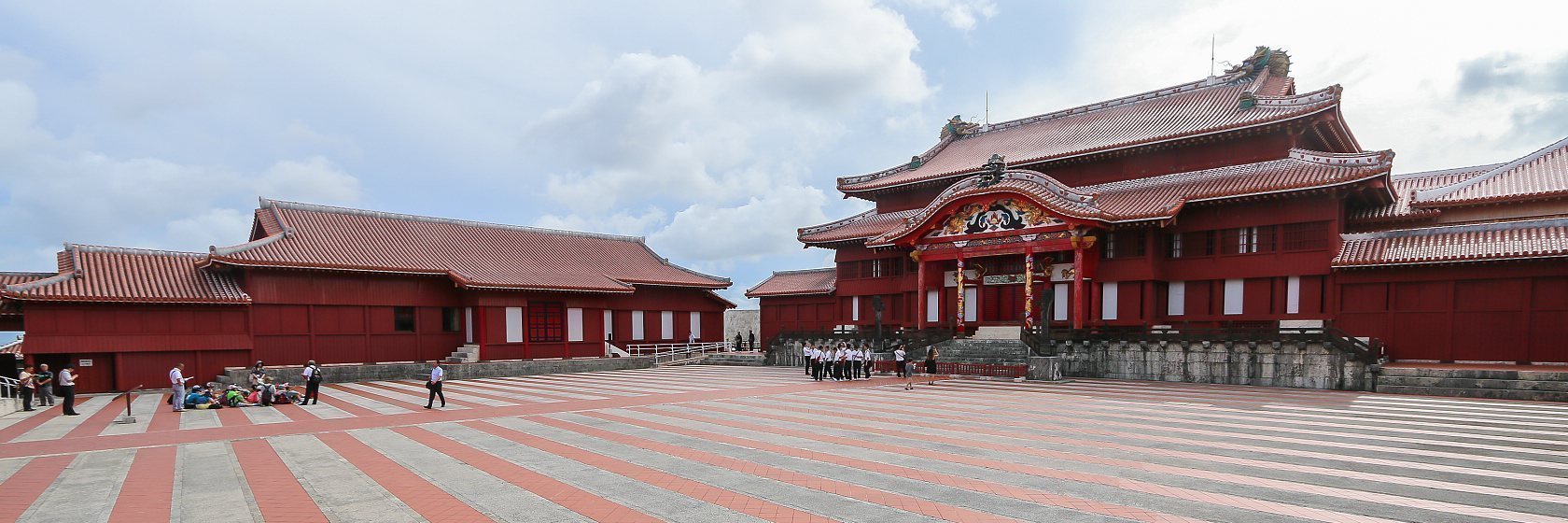
The center of the former Ryukyu Kingdom, Okinawa Main Island (����{��, Okinawa Hontō) is by far the largest and most populous island in Okinawa Prefecture and the regional transportation hub. The prefectural capital Naha and most of the US military bases are located here.
While much of the central part of Okinawa Honto is urbanized, the southern tip and the northern third of the island are less densely populated, while the northernmost Yanbaru Region remains mainly covered by forested hills and small fishing and farming villages.
Top attractions in Okinawa Island
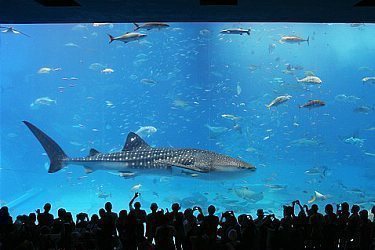
Okinawa Island by interest

Getting there and around
Questions? Ask in our forum .
Hotels around Okinawa Island

Experiences around Okinawa Island
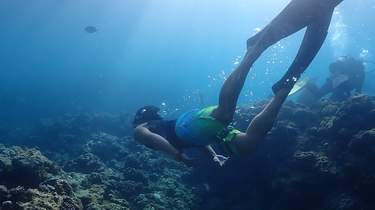
Okinawa Travel Guide
Book your individual trip , stress-free with local travel experts
Select Month
- roughguides.com
- Travel guide
- Itineraries
- Local Experts
- Travel Advice
- Accommodation
Plan your tailor-made trip with a local expert
Book securely with money-back guarantee
Travel stress-free with local assistance and 24/7 support
Alfredo Bartholomaus
My wife and I had a wonderful time in Japan, we love the people and the places we visit, but all of this would not have been possible without the great job...
Mention Okinawa (沖縄) to a mainland Japanese and you’ll likely receive a wistful sigh in return. Perpetually warm weather, clear seas bursting with fish, fantastic food, gentle people, unspoilt beaches and jungle…the list could go on. More than one hundred subtropical islands, collectively known as the Ryūkyū Shotō, stretch over 700km of ocean from Kyūshū southwest to Yonaguni-jima, almost within sight of Taiwan, and provide one of Japan’s favourite getaways. Getting here may be a little costly, but Okinawa’s lush vegetation, vision-of-paradise beaches and superb coral reefs can charm the most jaded traveller – if you’ve had your fill of shrines and temples and want to check out some of Japan’s best beaches and dive sites or simply fancy a spot of winter sun, then Okinawa is well worth a visit.
Brief history of Okinawa
Diving in okinawa, the kerama islands, the miyako islands, okinawa-honto, the yaeyama islands.
The largest island in the group, Okinawa-Hontō, usually referred to simply as Okinawa, is the region’s transport hub and home to its prefectural capital, Naha. It’s also the most heavily populated and developed of the Ryūkyū chain, thanks largely to the controversial presence of American military bases. Okinawa-Hontō boasts a number of historical sights, many of them associated with the Battle of Okinawa at the end of the Pacific War. But the island has more to offer than battle sites, particularly in its northern region, where the old way of life still survives among the isolated villages.
To see the best of the region, you’ll have to hop on a plane or ferry and explore the dozens of outer islands away from Okinawa-Hontō, many of them uninhabited. Even quite close to Naha, you’ll find gorgeous beaches and fantastic dive spots around the Kerama islands, just 30km off Okinawa-Hontō. Divers and beach connoisseurs will want to visit Miyako-jima and Ishigaki-jima, way down the Ryūkyū chain. If you’re looking for an idyllic retreat, Taketomi-jima can’t be beaten, while the adventurous will want to explore Iriomote-jima, coated in thick groves of mangrove and steamy rainforest, and home to the elusive Iriomote lynx.
Every trip to Okinawa is unique and that's why it's essential to stay protected. With our go-to travel insurance provider, Heymondo , you get great value and 24/7 support wherever you are.
It’s on these outer islands that you’ll also find the strongest evidence of the much-vaunted Ryūkyū culture, born of contact with Taiwan and China, as well as the rest of Japan. The most obvious expressions of this culture are found in the islands’ cuisine and in a vibrant use of colour and bold tropical patterns, while the Chinese influence is clearly visible in the region’s architecture, traditional dress and the martial art of karate – the Ryūkyū warriors’ preferred mode of protection. Ancient religious beliefs are kept alive by shamen (called yuta) and, in central Okinawa-Hontō, there are sumo bouts between bulls. There’s also a Ryūkyū dialect, with dozens of variations between the different islands, unique musical instruments, and a distinctive musical style that has reached an international audience through bands such as Nēnēs, Diamantes and Champloose. If you’re lucky, you’ll stumble on a local festival, such as giant rope tug-of-war contests or dragon-boat races, while the biggest annual event is the Eisā festival (fifteenth day of the seventh lunar month), when everyone downs tools and dances to the incessant rhythms of drums, flutes and the three-stringed sanshin.
Besides Hokkaidō, Okinawa contains Japan’s largest areas of unspoilt natural environment and its greatest biodiversity. Much of this wealth of wildlife is underwater, spawned by the warm Kuroshio Current that sweeps up the east coast and allows coral reefs to flourish. But there are a number of endemic species on land, too, including turtles, a crested eagle and the noguchigera (Pryer’s woodpecker), in addition to Iriomote’s wild cat, the yamaneko. A less welcome local resident is the highly venomous habu snake. It measures around 2m in length, is dark green with a yellow head, and usually lurks in dense vegetation or on roadsides, though rarely ventures into urban areas. As long as you’re careful – especially during spring and autumn – you should have no problems; if you are bitten, make for the nearest hospital, where they should have antiveni.
With its subtropical climate, Okinawa stays warm throughout the year. Average annual temperatures are around 23°C, with a winter average of 17°C and a minimum of 10°C. Winter lasts from December to February, while the hot, humid summer starts in April and continues into September. Temperatures at this time hover around 34°C and the sun can be pretty intense, though the sea breezes help. The best time to visit is in spring or autumn (roughly March to early May and late Sept to Dec). The rainy season lasts from early May to early June, while typhoons can be a problem in July and August, and occasionally into October.
Travel ideas for Japan, created by local experts

Small Group Tour: Splendours of Japan
Discover the allure of Japan on our small group tour (max 16 guests). Unveil Tokyo, Kanazawa, Kyoto, Osaka, and Okayama through guided explorations. Immerse in tea ceremonies and relish in the captivating beauty of these iconic destinations. Regular departures ensure an unforgettable journey.

Small Group Tour: Secrets of Japan
Embark on an exceptional small-group tour, available monthly, unveiling Tokyo, Hakone, Hiroshima, Osaka, Kyoto, and beyond. Uncover Japan's hidden gems, from serene shrines to bustling cities, and immerse in enchanting forests.

Small Group Tour: Highlights of Japan
Exciting small-group tour with monthly departures. Immerse in Japanese culture, challenge a pro in a sumo suit, wander Arashiyama's bamboo groves in Kyoto, and relish a kaiseki feast with Maiko entertainment - all included in this fascinating small group tour.

Japan highlights: Tokyo to Osaka
From Tokyo to Osaka, this Japan trip features fantastic experiences. View a sumo session, visit ancient temples, and climb the Tokyo Skytree tower. Explore the resort town of Hakone in Mt Fuji’s shadow, savor a tea ceremony in Kyoto, and see cherry blossoms, in season, to complete a wonderful trip.

Self-Guided Adventure Tour in Japan
Immerse yourself in the breathtaking natural beauty, history, enchanting culture and warmhearted people of Japan, with our self-guided tour of Japan. Walk-through a bamboo forest, see how sake is made, join Samurai lesson, go bar-hopping in Tokyo and Osaka and extend your journey to Hiroshima

Culinary tour across Japan
This trip takes you from Tokyo to Kyoto, where you will experience authentic Japanese foods, visit morning markets in the local cities, learn how to make Japanese food and enjoy a unique stay at a monastery. A once in a lifetime experience.
In the fifteenth century, the islands that now make up Okinawa were united for the first time into the Ryūkyū kingdom, governed from Shuri Castle in present-day Naha. This period is seen as the golden era of Ryūkyū culture. Trade with China, the rest of Japan and other Southeast Asian countries flourished, while the traditionally non-militarized kingdom maintained its independence by paying tribute to China. But then, in 1609, the Shimazu clan of Kagoshima (southern Kyūshū) invaded. The Ryūkyū kings became vassals to the Shimazu, who imposed punitive taxes and ruled with an iron hand for the next two hundred years, using the islands as a gateway for trade with China when such contact was theoretically outlawed by the Togukawa Shogunate. When the Japanese feudal system was abolished in the 1870s, the islands were simply annexed to the mainland as Okinawa Prefecture. Against much local opposition, the Meiji government established a military base and tried to eradicate local culture by forcing people to speak Japanese and swear allegiance to the emperor, forbidding schools to teach Ryūkyū history.
By the early twentieth century, Okinawa had been fairly successfully absorbed into Japan and became a key pawn in Japan’s last line of defence during the Pacific War. Following the battle of Iwō-jima in March 1945, the American fleet advanced on Okinawa and, after an extensive preliminary bombardment, referred to locally as a “typhoon of steel”, the Americans invaded on April 1, 1945. It took nearly three months of bitter fighting before General Ushijima, the Japanese commander, committed suicide and the island surrendered. The Battle of Okinawa left 12,500 American troops dead (plus 37,000 injured) and an estimated 250,000 on the Japanese side, nearly half of whom were local civilians.
It’s estimated that one third of the population of Okinawa died in the war, many in mass suicides that preceded the surrender, and others from disease and starvation. But the islanders’ subsequent anger has been directed at the Japanese government rather than America. Most people feel that Okinawa was sacrificed to save the mainland – this was the only major battle fought on Japanese soil – and that they were misled by Japanese assurances that they were luring the American fleet into a trap. Compounding this was the behaviour of Japanese troops, who are accused of denying locals shelter and medical treatment, and ultimately of abandoning them to the Americans.
By comparison, the American invaders were a welcome relief, despite the islanders’ worst fears. They brought in much-needed food supplies – Spam was an instant hit in this pork-loving country, and a precursor of the processed luncheon meat found in pork champurū – and gradually helped restore the local economy. This wasn’t wholly altruistic, of course, since Okinawa was ideally placed for monitoring events in Southeast Asia. As the 1950s Korean War merged into the Vietnam War, so the American bases became a permanent feature of the Okinawa landscape.
In fact, Okinawa remained under American jurisdiction until 1972, when local protests led to the restoration of Japanese sovereignty. Since then, the two governments have colluded to maintain an American military presence on the island despite growing opposition, which reached a peak when three American servicemen were found guilty of raping a 12-year-old schoolgirl in 1995.
Okinawa has since borne witness to some curious political shifts. In 2007, local elections brought Aiko Shimajiri to power; interestingly, his focus was on the local economy rather than military issues. These were, however, to come to the fore in national elections two years down the line, with Yukio Hatayama elected Prime Minister on a pledge to remove, rather than relocate, the Futenma air base – his failure to do so saw him step down in disgrace less than a year later.
With scores of dive sites around Okinawa-Hontō – and many more around the outer islands – one of the best reasons for visiting Okinawa is to go diving. There are plenty of dive shops, but only at a few will you find instructors who speak English. PADI courses are available on Okinawa-Hontō from Maeda Misaki Divers House and the American-run Reef Encounters. Once you have your certificate the islands are yours for the taking. To rent equipment, you should know the metric readings of your height, weight and shoe size.
There are great diving opportunities every way you turn on the islands, but the following sites are particularly notable.
Zamami-jima
Fantastic hard corals, more reef fish than you could count in a week and lots of big fan corals. Head to Zamami-jima, a particularly laidback spot from which to organize a dive with the instructors at Joy Joy.
Miyako-jima
There are over fifty different dive spots to choose from around Miyako-jima, with cave dives being particularly popular: start off by hooking up with Good Fellas Club.
Ishigaki-jima
Dotted around the Yaeyamas are 360 species of corals and sea anemones, including the rare blue coral reefs off Shiraho-no-umi on Ishigaki-jima. Among the thousand-odd species of fish you can expect to swim with are barracuda, butterfly fish, redfin fusiliers, spadefish and manta rays in the waters between Iriomote-jima and Kohama-jima.
Iriomote-jima
There’s easily accessible coral in the waters surrounding this enchanting island. Both youth hostels can put you in touch with local diving operations.
Yonaguni-jima
For the ultimate dive experience consider lugging your gear out here to see sea turtles and hammerhead sharks, and to explore the enigmatic rocks that some claim are the remains of a sunken civilization.
The KERAMA ISLANDS (慶良間諸島) are the closest group to Naha, lying some 30km offshore. A knot of three large, inhabited islands and numerous pinpricks of sand and coral, the Keramas offer some of the most beautiful and unspoilt beaches in Okinawa and superb diving among the offshore reefs. Zamami-jima (座間味島) is a sleepy place home to mere hundreds of people, yet has recently become hugely popular with international tourists thanks to the recent boom in winter whale-watching, as well as the demise of ferries heading from Naha to Miyako and the Yaeyamas – many travellers are now choosing the Keramas over costly flights south.
Dogs and dolphins
Zamami-jima has sourced much of its fame from the animal kingdom. The millions of fish enjoyed by divers (and diners at local restaurants) are an obvious draw, but dogs and whales have also made their mark. Historically, whaling was an important part of the local economy, but in the 1960s the whales disappeared and the industry died. Then, towards the end of the last century, the humpbacks started coming back to their winter breeding grounds – which the locals have been quick to exploit, though this time for tourism rather than hunting. In addition, most young Japanese associate the Keramas with the cutesy 1988 film I Want to See Marilyn. Based on a true story, it tells of a romance between two dogs on neighbouring islands: Shiro on Aka-jima, and Marilyn some 3km away on Zamami. They met when Shiro travelled to Zamami in his owner’s boat, but the passion was such that he started swimming over every day to rendezvous with Marilyn on Zamami’s Ama beach – or so the story goes. So enduring is this story that the pup’s supposed route is often featured on local maps.
One has to feel sorry for the MIYAKO ISLANDS. Centred around Miyako-jima (宮古島), this small cluster boasts some of the best beaches in all Japan, but these are graced by precious few international visitors. Long overshadowed by Zamami-jima and the Yaeyama group, its appeal took another knock with the closure of ferry services to Naha and Ishigaki, making Miyako an expensive add-on to an Okinawan tour. However, it remains a time-out favourite with mainland Japanese, some of whom stay for weeks or months on end, chalking off beach after beach and dive after dive.
The flat, triangular-shaped island of Miyako-jima is roughly 35km from tip to tip – its most immediately notable aspect is field after field of sugar cane. HIRARA (平良), the main town, lies on the island’s northwest coast, from where roads fan out through the fields.
Once the centre of the Ryūkyū kingdom, Okinawa-Hontō (沖縄本島), or Okinawa Main Island, is a strangely ambivalent place. Locals are fiercely proud of their Ryūkyū heritage, and yet the competing cultures of Japan and America are far more prevalent. To some extent, the island still feels like occupied territory, especially central Okinawa-Hontō, where the American bases and the nearby “American” towns, with their drive-ins and shopping malls, have become a bizarre tourist attraction for mainland Japanese, who come to soak up a bit of American culture.
Fascinating though all this is, it doesn’t make Okinawa-Hontō the most obvious holiday destination. However, if you’re drawn by the more appealing outer islands, the chances are you’ll spend some time on the main island waiting for plane or ferry connections. Okinawa-Hontō’s chief city and the former Ryūkyū capital is Naha, whose prime attraction is its reconstructed castle, Shuri-jō, the ruins of which were awarded World Heritage status in 2001. There are also some interesting market streets and a pottery village to explore, and you’ll want to take advantage of its banks – not to mention excellent bars and restaurants – before heading off to remoter regions.
Southern Okinawa-Hontō saw the worst fighting in 1945, and the scrubby hills are littered with war memorials, particularly around Mabuni Hill, where the final battles took place. North of Naha, the island’s central district has little to recommend it, but beyond Kadena the buildings start to thin out. Here you’ll find one of the better “Ryūkyū culture villages”, Ryūkyū-mura, and the island’s best beaches. The largest settlement in northern Okinawa-Hontō, Nago is an appealing town that provides a base for visiting the stunning Okinawa Churaumi Aquarium and exploring the scenic coastline and mountainous tip of the island, culminating in the dramatic cape of Hedo Misaki.
The American question
Twenty percent of Okinawa-Hontō and a small number of outer islands are covered by American military bases, employing 27,000 American military personnel. This in itself has fuelled local anger, but what rankles most is that Okinawa makes up less than one percent of the Japanese landmass, yet contains 75 percent of the country’s American bases. The issue is, however, far from black-and-white for the islanders, since the bases provide thousands of jobs and contribute vast sums to the local economy – rather important, given that Okinawa remains the poorest of Japan’s prefectures. In addition, many younger Okinawans relish the peculiar hybrid cultural atmosphere that the large number of foreigners brings to the islands.
Opinion to the bases, both local and national, has yo-yoed in the past couple of decades. A 1995 poll revealed a majority of Okinawans in favour of a continued American presence, but with a more even distribution throughout Japan. At that time, only twenty percent of the population wanted a complete withdrawal, but by 1996 the figure had increased to a convincing ninety percent – partially the result of an unfortunate but highly significant incident between the two polls, in which a twelve-year-old schoolgirl was raped by three American servicemen. Mass protests against American military presence were the inevitable result.
Manoeuvrings since then have been largely political in nature, and focused on Futenma, a large US Marine Corps air base just northeast of Naha. In 1996, the American and Japanese governments announced a joint plan to relocate the base to Henoko, a bay to the north of Okinawa-Hontō. This led to protests from the environmental lobby, aghast that the move would demolish precious coral reef in Henoko, as well as having an injurious effect on the bay’s sea life. eighty-three percent of Okinawans voted against the plan in a referendum. In 2005, the two governments agreed to move the relocation site to Camp Schwab, an existing Marine Corps base, though this will have similar environmental ramifications. In 2009, Yukio Hatoyama was elected Prime Minister on a campaign promise to move the base outside Japan entirely as the first step in a systematic removal of the American military presence. However, torn between Okinawa and Washington, Hatoyama reneged on his promise, and resigned just eight months after taking office. Regardless of what happens with Futenma, the American issue is likely to rumble on for some time.
Okinawa Churaumi Aquarium
The Okinawa Churaumi Aquarium (沖縄美ら海水族館) is a spectacular facility showcasing the marine life of the Kuroshio Current. The main tank holds 7500 tonnes of water and is home to several whale sharks – the largest sharks in the world – as well as shoals of manta ray and many other fish; the cinema-scope view will hold you entranced. Most explanations are in English and there’s an informative section on sharks that dispels many myths about these extraordinary creatures.
Getting to Okinawa Churaumi Aquarium
Arriving by bus, most services stop near Nago’s central crossing before terminating at the bus terminal on the main highway to the west of town. However, some stop on the seafront, notably the Express Bus from Naha Airport, via Naha Bus Terminal (hourly; 2hr; ¥2000), which ends up outside Nago’s Lego-block City Hall, roughly 500m west of the central crossroads. You’ll find the tourist information office (Mon–Fri 8.30am–5.30pm, Sat & Sun 10am–5pm) in Nago City Hall, which has English-language maps and pamphlets on the area. The Ryūkyū Bank, just north of the central junction, can exchange dollar and sterling cash and travellers’ cheques, and there’s a small post office with an ATM a couple of blocks to the west.
Okinawa Prefecture Peace Memorial Museum
The final battle for Okinawa took place on Mabuni Hill (摩文仁の丘), on the island’s southeast coast. The site is now occupied by a cemetery and grassy park containing monuments (known as the “Cornerstone of Peace”) to the more than 200,000 troops – both Japanese and American – and civilians who died on the islands during the war. A distinctive white tower crowns the Peace Memorial Hall (平和記念堂), which contains a 12m-high lacquered Buddha and small museum. You’ll learn more (though not the full story) if you visit the Okinawa Prefecture Peace Memorial Museum (沖縄県立平和記念資料館), which has full English translations throughout. This interesting museum, planned under the anti-establishment regime of Governor Ōta, but completed by the more conservative Governor Inamine, doesn’t shirk the uncomfortable fact that Japanese soldiers ruthlessly killed Okinawan civilians. Generally, however, the whole build-up to the war is treated in the usual euphemistic way, and the exhibition ends on an upbeat note with displays on the postwar history of Okinawa to the present day.
Okinawan souvenirs
Those in search of local crafts will find beautiful bingata textiles the most appealing. Originally reserved for court ladies, bingata fabrics are hand-dyed with natural pigments from hibiscus flowers and various vegetables, in simple but striking patterns. Also worth searching out are the fine jōfu cloths of Miyako-jima and the Yaeyama Islands, once gifted in tribute to the local monarchs. Ceramics are thought to have been introduced to the region from Spain and Portugal in the fifteenth century, but Ryūkyū potters concentrated on roof tiles and fairly rustic utensils. Nowadays, they churn out thousands of sake flasks and shiisā – the ferocious lion figures that glare down at you from every rooftop. The exquisite local lacquerware has a long history in the islands, too, having been introduced over five hundred years ago from China, but the glassware you’ll find is much more recent: it’s said production took off in the postwar years when Okinawans set about recycling the drinks bottles of the occupying US forces.
Star-sand beaches to pad along, waterfalls tumbling down emerald mountains, and not a soldier in sight…it’s no wonder that even Okinawans go misty-eyed when talking about the YAEYAMA ISLANDS (八重山諸島). Japan finally fizzles out at this far-flung spray of semi-tropical islets, 430km south of Okinawa-Hontō and almost 3000km from northern Hokkaidō, and those lucky enough to make it this far are in for quite a finale. The bad news is that the Yaeyamas are no longer accessible by ferry, meaning that you’ll have to take a flight from Naha or the mainland – but it’s worth it, especially if you’re into diving, hiking, kayaking or meeting “alternative” Japanese.
Most flights arrive at Ishigaki-jima, the most populous Yaeyama island by far. Travellers tend to base themselves here for convenience, but while Ishigaki has its charms, you’d be mad to come this far and not go that little bit further – a fifteen-minute ferry-ride away is tiny Taketomi-jima, essentially a freeze-frame of traditional Ryūkyū life, while a little further away is Iriomote-jima, almost entirely cloaked with jungle and about as wild as Japan gets. Even more remote are Hateruma-jima, to the south, and Yonaguni-jima, stuck out on its own between Ishigaki and Taiwan.
Diving on Iriomote
Iriomote is a divers’ paradise, with the Manta Way between the island’s eastern coast and Kohama-jima being particularly famous for its shoals of manta rays; you’re most likely to see them between April and June. The youth hostels and all minshuku can put you in touch with the island’s several dive operations (for more on diving). Snorkelling is particularly good at Hoshizuna Beach (星砂の浜), around 4km northwest of Funaura, where you’ll also find a campsite, a decent restaurant and snorkelling gear for rent – all of which makes it popular. If you’re looking to escape the crowds, head to Funauki (船浮), reached by three ferries a day from Shirahama (白浜), at the far west end of the coastal road; the beach here, a short trek through the jungle, is one of the most beautiful in all of Japan.
Brooding darkly some 20km west of Ishigaki, Iriomote-jima (西表島) is an extraordinarily wild place for Japan. Rising sharply out of the ocean, some ninety percent of its uncharted, mountainous interior is covered with dense subtropical rainforest, much of it protected as the Iriomote National Park. Yaeyama rumour would have it that Iriomote often – or even perpetually – plays host to disaffected Japanese, living rough in the jungle. A more substantiated inhabitant, though equally elusive, is one of the world’s rarest species, the yamaneko or Iriomote lynx, a nocturnal, cat-like animal. The island and its surrounding waters are also home to a splendid array of flora and coral reefs shimmering with tropical fish. There are also plenty of opportunities for snorkelling, diving, kayaking and hiking through the rainforest.
Although it’s Okinawa’s second-largest island, fewer than two thousand people live here, most of them along barely developed strips on the north and south coasts. Ferries from Ishigaki sail to two ports on the island: ŌHARA (大原) in the south and UEHARA (上原) in the north. The latter is the better place to head for since it’s closer to Iriomote’s main scenic attractions and offers the widest range of accommodation.
Yaeyama life revolves around Ishigaki-jima (石垣島), the islands’ main transport hub and population centre. Most travellers base themselves here, making use of the excellent accommodation and dining options to be found in ISHIGAKI (石垣), the only Yaeyama settlement large enough to warrant description as a town. The rest of the island is a predominantly rural and mountainous landscape, fringed with rocky peninsulas, stunning beaches and easily accessible reefs, while its interior is scored with the gorgeous walls of hand-stacked stone which gave Ishigaki its name.
Taketomi-jima
Just before six o’clock each evening, the tiny island of Taketomi-jima (竹富島) undergoes a profound, magical transformation. This is the time of the last ferry back to Ishigaki-jima – after that, you’re marooned, but there are few better places to be stuck. Just over 1km wide and home to fewer than three hundred people, the island’s population swells during the day with folk eager to see its traditional houses, ride on buffalo-drawn carts and search lovely sandy beaches for the famous minuscule star-shaped shells. When the day-trippers are safely back in Ishigaki, those who have chosen to stay on will have Taketomi almost to themselves – it’s possible to walk its dirt paths at night for hours on end without seeing a single soul.
There’s only one village on Taketomi – also called Taketomi (竹富) – and it’s a beauty. Practically all its houses are built in traditional bungalow style with low-slung terracotta-tiled roofs, crowned with bug-eyed shiisā. Surrounding them are rocky walls, draped with hibiscus and bougainvillea: these are the ishigaki that gave a certain neighbouring island its name, yet these days they’re far more prevalent on Taketomi.
Discover more places in Japan
The rough guides to japan and related travel guides.
In-depth, easy-to-use travel guides filled with expert advice.

Find even more inspiration here

Planning your own trip? Prepare for your trip
Use Rough Guides' trusted partners for great rates
written by Rough Guides Editors
updated 26.04.2021
Ready to travel and discover Japan?
Get support from our local experts for stress-free planning & worry-free travels.
- Where to stay
- Travel advice

10 Beautiful Japanese Islands You Need To Visit
W ith a mosaic-like tapestry of diverse landscapes ranging from snowy mountain ranges and subtropical jungles to sandy-shored beaches and volcanic highlands, Japan is nothing short of pure paradise. The East Asian country is well-known for its many other eye-catching attributes, too. The blooming cherry blossoms vividly mark the departure of winter. The wooden Buddhist temples and Shinto shrines embody the locals' deeply cherished customs. And the bustling street markets proudly showcase Japanese staples of fresh fish, tsukemono (or pickled vegetables), and the like.
Those fancying an island retreat have much to explore in this Asian archipelago. Lying on the western edge of the Ring of Fire, a string of volcanoes along the rim of the Pacific Ocean, Japan is composed of four main islands ; Hokkaido, Honshu, Shikoku, and Kyushu , and thousands of smaller islands. Using advanced mapping technology, the country recently discovered more than 7,000 islands, bringing the total of Japanese islands upwards of 14,000 . For the wanderlust adventurer, here are ten of the most beautiful islands that Japan has to offer.
Related: Do You Need a Visa? & More Questions About Traveling To Japan, Answered
Honshu Island
Japan's largest island, Honshu, is home to some of the country's most recognizable cities, including Kyoto, Osaka, Hiroshima, and its capital city, Tokyo.
A good pick for the nature-lovers and thrill seekers, the island also contains Japan's biggest freshwater lake, Lake Biwa, and its highest mountain, the great—often snow-capped— Mount Fuji .
- Best for cultural sites and outdoor adventures
- Notable points of interest: Japan's highest mountain, Mount Fuji, the Japanese Alps, the Imperial Palace, Osaka Castle, and the Tokyo Tower
Hokkaido Island
Want to escape the summer heat? Then spend a week in Hokkaido, Japan . The second-largest of Japan's main islands, Hokkaido is undoubtedly a winter wonderland. It offers tourists a chance to partake in a number of cold-weather activities like skiing and snowboarding.
- Best for winter activities, ski resorts, and hot springs
- Notable points of interest: the star fort of Goryōkaku, the flower gardens of Shikisai No Oka, and Cape Sōya, the northernmost point of the island
Many of Hokkaido's popular ski resorts, including Niseko, Rusutsu, and Furano, can be found within a two-hour drive of its capital city, Sapporo.
Kyushu Island
There are myriad unique hot springs in Japan , many of which can be found on the island of Kyushu, the country's southernmost and third-largest main island . Featuring a humid, subtropical climate, the island is home to one of the world's largest active volcano craters, Mount Aso.
- Best for Hot springs and outdoor activities like hiking
- Notable points of interest: Mount Sakurajima, Kokura Castle, Glover Garden, Kumamoto Castle, and Peace Park
Beppu, which is located in the northern part of Kyushu's coastal Oita Prefecture, is one of the more popular hot spring resort towns on the island. Others include Yufuin, also in the Oita Prefecture, and Kurokawa, which is located in the Kumamoto Prefecture.
Okinawa Island
This sun-soaked, tropical island is located about 400 miles south of Kyushu. The fifth-largest island in Japan, there is much to do and see in Okinawa , from sunbathing on its sandy shores to visiting its historic castles.
- Best for beaches and water activities (snorkeling, diving, swimming, etc.)
- Notable points of interest: American Village (American-themed outdoor mall), Southeast Botanical Gardens, Shuri Castle, Okinawa World (theme park), Okinawa Prefectural Museum & Art Museum, Nakijin Castle Ruins, and Gyokusendo Cave
Related: 10 Most Beautiful Temples In Japan You Should Visit
Shikoku Island
The smallest of Japan's four main islands, tourists may be wondering what makes Shikoku Island so famous . But despite its size, the quiet island offers visitors a wealth of outdoor adventures, from trekking through its numerous hiking trails to going kayaking on its whitewater rapids.
- Best for exploring off-the-beaten path
- Notable points of interest: Ritsurin Garden, Kochi Prefectural Makino Botanical Garden, Otsuka Museum of Art, Shikoku Karst (a scenic, mountainous road), Vine Bridge in the Iya Valley, and the Shikoku pilgrimage route
Separated from Honshu Island by the Seto Inland Sea, the island is composed of the Ehime, Kagawa, Kōchi, and Tokushima prefectures.
Ishigaki Island
Nestled in Japan’s southwestern Okinawa Prefecture, this island paradise is well-known for its clear, blue-green waters and sandy shores. The beautiful waters of Kabira Bay are a must-see during a visit to Ishigaki Island.
- Best for white, sandy beaches and water activities
- Notable points of interest: Oganzaki Lighthouse, Banna Park, Tamatorizaki Observation Platform, Ishigaki Stalactite Cave, and Kabira Bay
Related: 10 Reasons Japan Is Still Worth Visiting During Summer
Rebun Island
Situated in the Sea of Japan off the coast of Hokkaido, Rebun Island is one of the country's hidden gems. Known as the "Floating Island of Flowers," Rebun is a treasure trove of native wildflowers and scenic hikes.
- Best for nature treks
- Notable points of interest: Cape Sukoton, Momoiwa Observatory, Momodai Nekodai Observatory, and the Cape Gorota Observation Deck
Sado Island
Paradise awaits in the Niigata Prefecture. Located in the eastern region of the Sea of Japan, Sado Island is famed for its rocky shores. With a rich history steeped in gold and silver mining, the island is perfect for the wanderlust explorer looking to learn more about Japan's enchanting past.
- Best for exploring Japan's gold mines and ancient ruins
- Notable points of interest: Futatsugame Beach, Sado Kinzan (gold mine), Toki Forest Park, and the Onogame (monolith)
Be sure to hop aboard a tub-boat for an exciting ride across the shimmering waters surrounding Sado.
Oki Islands
Located just off the coast of Honshu, the Oki Islands are a bucket-list destination like no other. The archipelago features a collection of uninhabited islands and four inhabited islands; Dogo, Nishinoshima, Nakanoshima, and Chiburijima.
- Best for soaking in Japan's natural beauty
- Notable points of interest: Kuniga Coast, Tsūtenkyō Arch, and the Akiya Coast
Related: Wandering Through Japan: A Serene Journey Through 10 Iconic Landscapes & Vibrant Cities
Nokonoshima Island
In addition to the island of Rebun, tourists visiting Japan can also find a flower oasis nestled right in Hakata Bay. Part of Fukuoka, the tiny island has a circumference of only about 7.5 miles. But, it still affords visitors much to see, including an abundance of seasonal flowers year-round.
- Best for a peaceful day trip
- Notable points of interest: Nokonoshima Island Park, Noko no Ichi market, and Nokonoshima Camp Ground
In addition to delectable local eats and interesting souvenirs, the Noko no Ichi market houses a visitor center for those looking to get more information on the beautiful island.

- - K-town Now
Asia-Pacific
- - Storm Tracker
- Middle East
- Map of Memorials
- Entertainment
- - Video Games
- Europe Travel
- - Quick Trips
- - After Hours
- Pacific Travel
- The Meat and Potatoes of Life
- U.S. Travel
- Storm Tracker
- Rewards for readers
- Get Stripes
- Stripes Lite
- Archives/Library
- Special Publications
- Mobile Apps
- Email Newsletters
- Digital Access
- Home Delivery
- Marine Corps
- Coast Guard
- Space Force
- Archive photo of the day
- - Schedules Europe
- - Scoreboards Europe
- - Schedules Pacific
- - Scoreboards Pacific
- - Pacific Sports Blog
- - WW II Podcast
- - Military Matters
- - Force for Hire
- Out of Uniform
- - WW II Videos
- Communities
- Stripes Europe
- Stripes Guam
- Stripes Japan
- Stripes Korea
- Stripes Okinawa
- Our Other Websites
- In Memoriam
- Month of the Military Child
- Best of Germany
- Best of the Pacific
- Letters to Santa
Chinese coast guard vessels make return run at Senkakus, Japan alleges
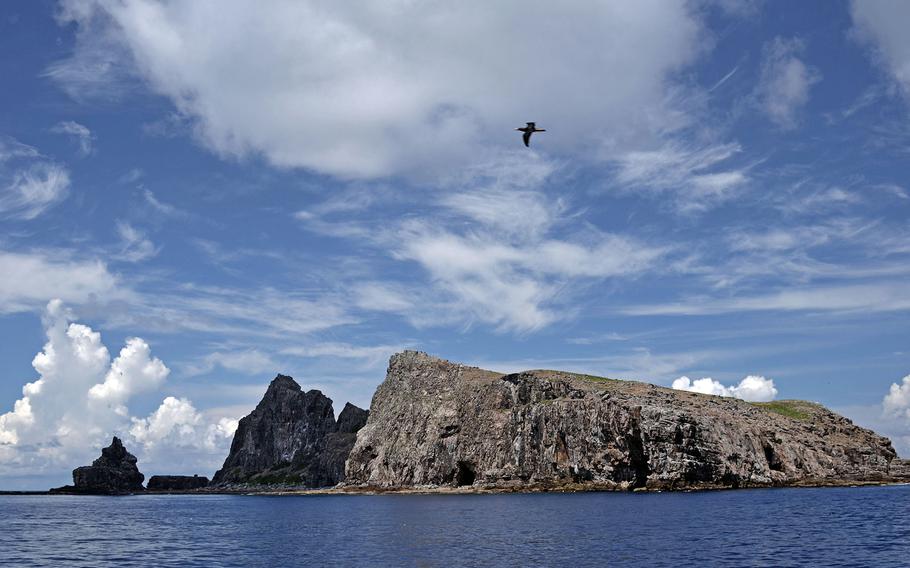
The Japan-controlled Senkaku Islands, though relative specks in the East China Sea, are among several sites where China acts aggressively to assert territorial claims that other nations regard as illegal. (Cabinet Secretariat of Japan)
CAMP FOSTER, Okinawa — Three Chinese coast guard vessels entered the 12-mile territorial limit around the Senkaku Islands between Tuesday and Thursday, the third such incident in less than a month, according to the Japanese coast guard.
The three vessels were chasing a Japanese fishing boat and appeared to be armed with deck-mounted machine guns, according to a Japan coast guard news release.
The first vessel entered waters south of Uotsuri island, the largest of the Senkaku chain, around 1:38 p.m. Tuesday, closely followed by the second at 2:35 p.m. and third at 4:29 p.m. near Minamikojima, according to the release.
A larger contingent of Japanese coast guard ships positioned themselves between the fishing boat and the Chinese vessels and warned the Chinese by radio and electronic messaging boards to leave the area, a Japanese coast guard spokesman said by phone Friday. Some government officials in Japan are required to speak to the media only on condition of anonymity.
The last Chinese vessel left the area at 8:26 p.m. Wednesday; the first two left at 8:17 a.m. Thursday, according to the release.
Another Chinese coast guard ship was spotted in Japan’s exclusive economic zone but did not intrude, the release said.
The Senkakus — five uninhabited islets and three reefs 105 miles east of Taiwan and 254 miles west of Okinawa — are administered by Japan but also claimed by China and Taiwan. The area around the islands reportedly contains oil reserves and other resources, which has led to Chinese challenges to Japan’s claim over the islands since the 1970s, according to Japan’s Foreign Affairs Ministry.
The ministry filed multiple complaints with the Chinese Embassy in Japan and with the Chinese government in Beijing over the three-day intrusion. “We asked them to leave the area,” a ministry spokesman said by phone Friday.
This latest intrusion follows a five-day incident starting June 20 in which four Chinese coast guard vessels repeatedly entered the 12-mile territorial limit around the island chain. Another four Chinese coast guard vessels entered and left the area June 7, the Japan coast guard said at the time.
Chinese ships have been spotted sailing within Japan’s exclusive economic zone near the Senkakus for 197 straight days as of Friday, a new record, the Japanese coast guard spokesman said.
Chinese ships last year came within 12 miles of the Senkakus 34 times and remained for a total of 42 days, a Japanese coast guard spokesman has said. The record was set in 2013, when Chinese vessels entered the islets’ territorial limits 52 times and remained there for 54 days.
China stepped up its presence around the Senkakus following a visit by President Xi Jinping in November to his country’s coast guard command in which he stated the necessity to “constantly strengthen” Beijing’s claim on the islands, Kyodo News reported at the time. U.S. Ambassador to Japan Rahm Emanuel lambasted the plan to “keep ships in and around Japan’s Senkaku Islands for 365 consecutive days” in a January post on X.
The intrusions are part of a pattern of provocative actions by China in recent years challenging its neighbors’ maritime claims in the East and South China seas. In May, a Chinese surveillance and strike drone was spotted for the first time north of Okinawa.
The Pentagon identified China as an aggressive presence in the East and South China seas and a global “pacing challenge” in its 2022 National Defense Strategy.
As part of its response, the Defense Department this week announced a plan Wednesday to station more advanced fighter aircraft in Japan over the next several years - including F-35A Lightning IIs at Misawa Air Base for the first time and F-15EX Eagles at Kadena Air Base.

Sign Up for Daily Headlines
Sign up to receive a daily email of today's top military news stories from Stars and Stripes and top news outlets from around the world.
Sign Up Now
- Cover Letters
- Jobs I've Applied To
- Saved Searches
- Subscriptions
Marine Corps
Coast guard.
- Space Force
- Military Podcasts
- Benefits Home
- Military Pay and Money
- Veteran Health Care
- VA eBenefits
- Veteran Job Search
- Military Skills Translator
- Upload Your Resume
- Veteran Employment Project
- Vet Friendly Employers
- Career Advice
- Military Life Home
- Military Trivia Game
- Veterans Day
- Spouse & Family
- Military History
- Discounts Home
- Featured Discounts
- Veterans Day Restaurant Discounts
- Electronics
- Join the Military Home
- Contact a Recruiter
- Military Fitness
Airman Accused of Kidnapping, Sexually Assaulting Japanese Minor on Okinawa

A U.S. airman on Okinawa has been accused of kidnapping and sexually assaulting a Japanese minor, echoing a notorious abduction committed by troops there in the 1990s and potentially stoking long-simmering divisions on the island.
Senior Airman Brennon Washington, who was stationed at Kadena Air Base , was charged for the alleged crimes in March by Japanese authorities after allegedly taking the girl, who was under 16 years old, from a local park on Christmas Eve to his home, according to Japanese media outlets. Washington’s rank and service record was confirmed by the Air Force.
The air base said it could not provide additional information on the case due to an ongoing investigation. Service member crime has long been a problem for the U.S. military's relationship with Okinawa, but a 1995 abduction and rape of a 12-year-old Japanese girl by three troops was particularly damaging. That crime triggered an effort to reduce the military's footprint on the island that is still ongoing.
Read Next: Soldiers Now Face Punishment for Sharing, Liking Extremist Content on Social Media Under New Army Policy
"According to the indictment ... Brennon Washington, 25, invited the girl to speak to him in his car at a park in Yomitan on Dec. 24 and drove her to his residence before committing indecent acts such as touching the lower half of the girl's body with the knowledge that she was under 16," The Mainichi Shimbun, one of Japan's largest newspapers, reported Tuesday.
1st Lt. Alvin Nelson III, a spokesperson for the 18th Wing at Kadena, told Military.com in an emailed statement that he was aware of the alleged crimes against a Kadena airman, but provided no further information.
"The 18th Wing is aware of a sexual assault allegation against a Kadena Airman involving a Japanese citizen," Nelson said. "Due to the ongoing investigation, we cannot offer further details."
He said the 18th Wing is "committed to investigate the allegations thoroughly while ensuring due legal process under applicable laws and agreements," and would not speculate on disciplinary action while the investigation was ongoing.
During a June 25 press conference, Japan's chief cabinet secretary, Yoshimasa Hayashi, confirmed the service member was prosecuted on March 27, that the Okinawa Prefectural Police Department alongside prosecutors in Naha, the prefecture's capital, were investigating the incident, and that a formal complaint was lodged with the U.S. through officials in the country's foreign ministry.
"This is very regrettable," Hayashi said, through his translator, at the conference. "The incidents and accidents by [the] U.S. military will have a very big impact on the local residents and will concern a lot of people."
The alleged crime may reopen long-standing wounds between the U.S. military and the local community in Japan that have festered for decades, and it seems sure to strain diplomatic relationships between the two countries.
A State Department spokesperson told Military.com late Tuesday evening in an emailed statement that the U.S. "takes these allegations very seriously" and added "the State Department and the Pentagon have been cooperating fully with Japanese authorities and will continue to do so."
In 1995, three service members rented a van and kidnapped a 12-year-old Okinawan girl, whom they proceeded to beat and rape. The trio were all convicted and sentenced to several years in Japanese prison, but the incident led to outrage and reforms to the legal framework that governed the legal rights of service members in Japan.
The case also spurred talks on realigning and reducing the large U.S. military presence on the island. The following year, the U.S. and Japan signed an agreement that cut the amount of land U.S. bases used on Okinawa by 21%.
"We understand and share the local community's concerns regarding this case," said Nelson, the 18th Wing spokesman. "Wing leadership is deeply concerned by the severity of this alleged crime and has worked diligently with local authorities to investigate the allegations thoroughly while ensuring due legal process under applicable laws and agreements."
A service record for Washington provided to Military.com identified him as a senior airman with the 18th Logistics Readiness Squadron at Kadena Air Base who joined the service in March 2021.
Attempts to reach Washington and associates through numbers listed in public records were unsuccessful Wednesday afternoon. It is not clear if the airman is being represented by an attorney.
Maj. Gen. Pat Ryder, the Pentagon press secretary, told reporters he didn't have any details and referred comment to the Air Force when asked about the incident Tuesday by a Japanese media outlet.
An initial hearing has been scheduled for July 12 at the Naha District Court, the Mainichi Shimbun reported.
Meanwhile, the case is also just the latest in a long string of criminal incidents perpetrated by American service members and civilians associated with the military on the island that goes back decades and has continued to cause tension among the local population.
In the summer of 2016, a U.S. sailor was arrested after driving the wrong way on an Okinawa road, crashing into two cars and injuring two people. His blood alcohol content was six times the legal limit in Japan.
That incident led the Navy to issue a temporary lockdown of sailors’ activities in Japan . Military leaders prohibited troops from drinking alcohol and banned any non-essential travel off-base in the country.
Around the same time, a civilian worker and Marine veteran at Kadena was arrested in connection with the rape and murder of a 20-year-old Japanese woman. The base was forced to cancel an Independence Day festival that year.
A year later, another alcohol-fueled deadly car crash on Okinawa led to more lockdowns .
Amid all the incidents, the government of the island has repeatedly passed resolutions and proclamations that called for everything from the removal of all Marines from the island to greater independence to prosecute service members .
Military.com asked the Pentagon whether it had any comment or concerns about this latest incident again inflaming tensions, but we did not receive a reply in time for publication.
Related: ' AmericaFest' Canceled for US Troops in Japan after Okinawa Murder
Thomas Novelly

Konstantin Toropin

You May Also Like

The bulk of the forces will go to Europe, at least initially.

NATO is desperate to do more for Ukraine but is struggling to find new ways.

The attack by the Iran-backed militant group was one of the largest in the conflict.

The House has advanced a bipartisan proposal that would automatically register young men with the Selective Service System.
Military News
- Investigations and Features
- Military Opinion
Select Service
- National Guard
Most Popular Military News

A military judge sentenced Stewart to a formal reprimand, restriction to Joint Base San Antonio for two months and forfeiture...

Retired Maj. Gen. William Mullen, 59, a former Marine Corps officer with multiple deployments to Iraq, was found on the...

A bipartisan group of senators and representatives say the company that manages the Defense Department's prescription drug...

Krishna Jade Janosky allegedly broke into Patrick Space Force Base in Brevard County, damaging the base’s flightline gate in...

Rep. Troy Nehls removed the Combat Infantryman Badge from his lapel more than a month after it was revealed the Army revoked...
Latest Benefits Info
- Who Is Eligible for Space-A Flights?
- VA Loan Eligibility for Surviving Spouses
- Paying for School with Federal Aid
- PTSD VA Ratings: What You Need to Know
- Servicemembers' Group Life Insurance (SGLI): What You Need to Know
More Military Headlines

Territorial disputes in the South China Sea, which involve China, the Philippines, Vietnam, Malaysia, Brunei and Taiwan, have...
- US Says Troops Are Leaving Niger Bases This Weekend and in August After Coup
- Army Family Awarded $10.3 Million After Living in Mold-Infested Home at Texas' Fort Cavazos
- Mental Health Tops List of Reasons Troops Were Hospitalized in 2023, New Reports Find
- Deadly Osprey Crash, Police Shooting: General Reflects on Time as Head of Air Force Special Operations
- Philippine Military Chief Warns His Forces Will Fight Back if Assaulted Again in Disputed Sea
- Russian Warships Dock in Venezuela After Military Exercises, Close Pass of Florida
Military Benefits Updates
- The Next Deadline for Backdated PACT Act Payments Is Coming Soon. Here’s What You Need to Know
- VA Fertility Benefits for Military Veterans
- Virginia Veterans Rally the Troops, State Leaders in Support of Education Benefits
- At RIMPAC, Military Leaders See Potential in 3D Printers
- Retired Marine Major General Found Dead at Twentynine Palms; Investigation Ongoing
- Coast Guard Academy's Swab Summer Pivots from Screams to Scripts
- Congress Looks to Continue Coast Guard’s Pacific Expansion
- $40M Approved for Next Phase of New London Coast Guard Museum Project
Entertainment
- 'Codename Nemo': How a WWII Aircraft Carrier Became the First Ship to Capture an Enemy at Sea Since the War of 1812
- A Star-Studded 'Audio Movie' Brings the World War II Story of the Merchant Ship MV San Demetrio Alive
- Donald Sutherland's 5 Best Military Roles
STARS AND STRIPES
- Middle East
- Asia-Pacific
- Map Of Memorials
- Entertainment
- - Video Games
- Europe Travel
- - Quick Trips
- - After Hours
- Pacific Travel
- The Meat and Potatoes of Life
- U.S. Travel
- Storm Tracker
- Rewards for readers
- Get Stripes
- Stripes Lite
- Archives/Library
- Special Publications
- Mobile Apps
- Email Newsletters
- Digital Access
- Home Delivery
- Marine Corps
- Coast Guard
- Space Force
- Archive Photo Of The Day
- - Military Matters
- - Force For Hire
- Out of Uniform
- Communities
- Stripes Europe
- Stripes Guam
- Stripes Japan
- Stripes Korea
- Stripes Okinawa
- Our Other Websites
- In Memoriam
- Month of the Military Child
- Best of Germany
- Best of the Pacific
- Letters to Santa
17 Gyeongnam Islands Selected as ‘Islands to Visit in 2024’
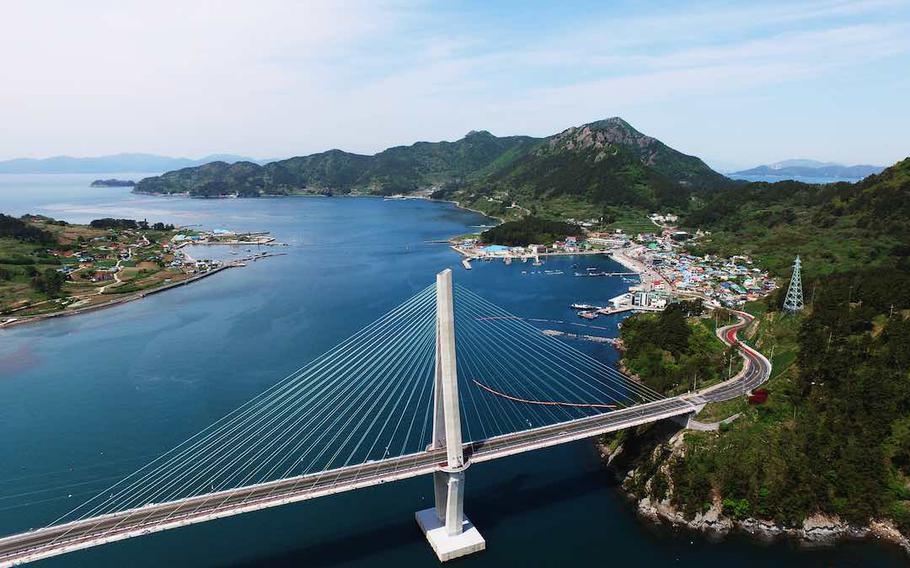
(Gyeongnam province)
17 islands in Gyeongnam province have been selected among the “88 Islands to Visit in 2024” by the Ministry of the Interior and Safety and the Korea Island Promotion Agency.
The selected islands in Gyeongnam Province include:
Tongyeong: Yokjido, Saryangdo, Sangdo, Hado, Hansando, Dumido, Bijindo, Yeonhwado, Chudo, Yeondaedo, Manjido, Maemuldo
Geoje: Jisimdo, Isudo
Namhae: Jodo, Hodo
Sacheon: Sinsudo
Hadong: Daedo
Since 2015, the Ministry of Public Administration and Security has been annually selecting 20 to 30 travel-worthy islands. This year’s list marks the 10th anniversary of the “Islands to Visit” initiative and coincides with the celebration of Island Day on August 8.
For more information, visit the “Islands of Gyeongnam” website, the Korea Island Promotion Agency website.
related stories
- Explore the best summer destinations in Gyeongnam, South Korea
- Korea Destinations: Gangju Sunflower Festival in Haman-gun until July 14
- Korea Destinations: Make fun memories at Gyeongnam’s beaches this summer
The best stories from the Pacific, in your inbox
Sign up for our weekly newsletter of articles from Japan, Korea, Guam, and Okinawa with travel tips, restaurant reviews, recipes, community and event news, and more.
Sign Up Now
Restaurants near Gushikawa Castle Ruins
Cuisine (20 of 21), 21 restaurants available nearby, 1. oyster shack naha sakurazaka, 2. taste of okinawa, 3. shima shabushabu nakama, 4. yakiniku hormone nakama, 6. the bar - hyatt regency naha okinawa, 7. milano | grill - hyatt regency naha okinawa, 8. sakurazaka - hyatt regency naha okinawa, 9. the lounge - hyatt regency naha okinawa, 10. ryukyu yakiniku nakama, explore opentable.
- Okinawa Outlet Mall Ashibinaa
- Makishi Station
- Zakimi Castle Ruins
- Ryutan Pond
- Nago Pineapple Park
- Omoromachi Railway Station
- Bankoku Shinryokan
- DFS Galleria Okinawa
- Hotel Yugaf Inn Okinawa
- Dfs Gallery Okinawa
- Iyashi no Resort Nakijin
- Zakimi Castle
- Naminoue Beach
- Comfort Hotel Naha Prefectural Office
- Ryukyu Mura
- Shimajiri Ko
- Dining Rewards
- Private Dining
- Reserve for Others
- Restaurants Near Me
- Delivery Near Me
- Restaurants Open Now
- OpenTable for iOS
- OpenTable for Android
- Affiliate Program
- OpenTable.jp
- OpenTable.de
- OpenTable.es
- OpenTable.ca
- OpenTable.hk
- OpenTable.ie
- OpenTable.sg
- OpenTable.nl
- OpenTable.com.mx
- OpenTable.co.uk
- OpenTable.com.au
- OpenTable.ae
- OpenTable.co.th
- OpenTable.it
- OpenTable.com.tw
- OpenTable.fr
- Restaurant reservation software
- Industry insights
- Hospitality resources
- Marketing resources
- Operation resources
- How to open a restaurant
- For restaurants
- For restaurant groups
- Privacy Policy
- Terms of Use
- Cookies and Interest-Based Ads
- Do Not Sell or Share My Personal Information
- Cookie Preferences

IMAGES
VIDEO
COMMENTS
The Kerama Islands, a group of 36 islands that collectively form a national park, are located close to Okinawa's main island, making for a popular detour from Naha. Zamami and Tokashiki are the ...
Maehama beach. Address: Shimijiyonaha, Miyakojima, Okinawa Prefecture. Duration: around 2 hours required. Access: From Tokyo, take a 3-hour flight from Haneda airport to Miyako airport; From Naha, take a 45-minute flight from Naha airport to Miyako airport. Contact: +81 980-73-1881.
Zamami Island. Zamami Island, located in Okinawa, is a true hidden gem that is also worth a visit. This small island offers a serene and laid-back atmosphere, making it an ideal escape from the hustle and bustle of city life. Zamami Island is part of the Kerama Islands, a group of remote islands of Okinawa.
4. Ie Island. The last must-visit island is Ie Island, which is located slightly north of Minna Island. It is one of the more popular tourist destinations among the remote islands of Okinawa. The main attraction of le Island is the Tachu (Mt. Gusuku) due to its unique shape that came to life from a phenomenon.
Okinawa is a group of about 160 beautiful islands located in the southern part of Japan. The archipelago is one of the most popular tourist destinations in Japan, known for its tropical climate, white sandy beaches, colorful coral reefs, and rich unique culture. The Okinawan culture is very interesting and is quite different from other parts of Japan.
The best months to visit Okinawa are typically April and October. These months fall within the spring and autumn seasons, offering pleasant weather conditions ideal for exploring the island. In April, you can enjoy comfortable temperatures, perfect for outdoor activities and beach visits.
17) Bird Watching on Kume Island. For nature enthusiasts, Kume Island is one of the best places to visit in Okinawa. Here, you'll find a wide range of local plant and wildlife. Kume Island is also a national park so one of the top activities to do is to trek through the lush foliage.
EPIC OKINAWA Itinerary! (2024) Okinawa is a collection of islands just off the Japanese mainland. It has a tropical climate, crystal clear seas, white sandy beaches and everything else you need for the perfect island getaway. The people that live on the island have the highest life expectancy in the world!
DESTINATIONS. The islands of Okinawa are as diverse as they are plentiful, stretching from the main island in the north to Ishigaki and beyond in the south. There are 160 islands large and small, inhabited and uninhabited. Authentic Okinawan experiences await, with cultural treasures, outdoor adventure, and world-class diving just some of the ...
How to get there: From Azama Port on Okinawa Main Island, take a 15-minute ferry ride to Kudaka Island. The ferry operates five times a day. 3. For diving: Miyako Islands. The best time to dive is between April to November, when the air temperature is a pleasant 25 °C and the water is warm.
Working out which are the best islands in Okinawa to visit is not easy to answer in a prefecture with hundreds of islands. Still, it is hard to go wrong if you start with the main Okinawa island. Ferry. Another option for getting to Okinawa is to go by ferry. Air freight to Okinawa is expensive, which means there are ferries from the big ports ...
The Best Time to Visit Okinawa. When is the best time to travel to Okinawa? Officially, Okinawa is a 365-day per year destination, but my personal experience contradicts this.While my initial research suggested that early February was near the top of the list of when to visit Okinawa, the conditions I encountered were appalling—I'm talking thick clouds, heavy rain, howling wind and ...
This island is a magical place to visit, a 15-minute ferry ride from Azama Port on the main island. Ferry boats run 6 times per day. Location: Kudaka Chinen, Nanjo, Okinawa 901-1501, Japan
Rent a car or bicycle to explore the sights on Okinawa's beautiful islands. Make the most of your visit and stay safe while enjoying the sea and sun. Tips for making the most of your trip, understanding the local culture, staying connected, and getting help if you need it. It is always a good time to visit Okinawa.
7. Gorilla Chop. This is hands-down one of the best spots for snorkeling and scuba-diving on Okinawa Main Island, as long as the sea is calm. Its name comes from a large rock next to the water that supposedly looks like a gorilla doing a karate chop.
THE 10 BEST Okinawa Prefecture Islands. 1. Zamamijima Island. I suggest brining a bike as it's a great way to get around the island. But a few of the beaches are within walking... 2. Iriomote Island. Iriomote island was one of destinations where I was always dreaming to visit.
Here are the 25 best things to do in Okinawa …. 1. Start at Okinawa Honto. Source: SUJITRA CHAOWDEE / shutterstock. Okinawa Honto. Okinawa Honto is the largest island in Okinawa which is why it is often used as a starting point to any trip to this part of Japan.
Explore the best Okinawa islands brimming with charm and beauty. Situated in southern Japan, Okinawa Prefecture is renowned for its crystal-clear waters, vibrant marine life, and distinctive Ryukyu culture. This guide highlights the best islands in Okinawa curated by local travel planners who have extensively explored the islands.
Collectively known as the Southwest Islands, the Nansei-shotō (南西諸島) comprises several chains of semitropical, coral-fringed isles far removed from the concerns of mainland life, where the slow pace and unique cultural heritage of the former Ryūkyū kingdom endures, offering a vibrant contrast to Japan's focus on modernity and technology.
Japan's best islands to visit, from Okinawa to cat sanctuary Aoshima ... Updated 7:44 PM EST, Mon January 3, 2022 Link Copied! Japan's best islands: Japan has more than 6,000 islands. Here are ...
Top attractions in Okinawa Island. Japan's best aquarium with a huge tank. Peace Park and other war related sites. One of the most sacred sites on Okinawa. Hiking trail through the forest to a waterfall. Amusement park with various attractions. Reconstructed former Ryukyu royal palace.
The Kerama Islands. The KERAMA ISLANDS (慶良間諸島) are the closest group to Naha, lying some 30km offshore. A knot of three large, inhabited islands and numerous pinpricks of sand and coral, the Keramas offer some of the most beautiful and unspoilt beaches in Okinawa and superb diving among the offshore reefs.
2. Kouri Island. Kouri Bridge opened in 2005, officially granting visitors access to the remote Kouri Island, now reachable by car from the main island of Okinawa. Although it is a small island, this popular tourist spot boasts blue ocean waters with the highest transparency in the prefecture.
Okinawa is the largest of more than 150 islands in a prefecture of the same name, located far to the south of Japan's main islands. We begin our two-day trip at the airport in Naha, the rather ...
The fifth-largest island in Japan, there is much to do and see in Okinawa, from sunbathing on its sandy shores to visiting its historic castles. Best for beaches and water activities (snorkeling ...
CAMP FOSTER, Okinawa — Three Chinese coast guard vessels entered the 12-mile territorial limit around the Senkaku Islands between Tuesday and Thursday, the third such incident in less than a ...
A U.S. airman on Okinawa has been accused of kidnapping and sexually assaulting a Japanese minor, echoing a notorious abduction committed by troops there in the 1990s and potentially stoking long ...
17 islands in Gyeongnam province have been selected among the "88 Islands to Visit in 2024" by the Ministry of the Interior and Safety and the Korea Island Promotion Agency. ... The best stories from the Pacific, in your inbox. Sign up for our weekly newsletter of articles from Japan, Korea, Guam, and Okinawa with travel tips, restaurant ...
At Okinawa Shima Shabu Shabu, located on Naha Kokusai Street known as the gateway to sightseeing in Okinawa, you can enjoy Okinawa's representative ingredients, Agu pork, Ishigaki beef, and Okinawa vegetables. The "Okinawa Vegetable Buffet" always offers 15 kinds of nutritious Okinawa Vegetables.